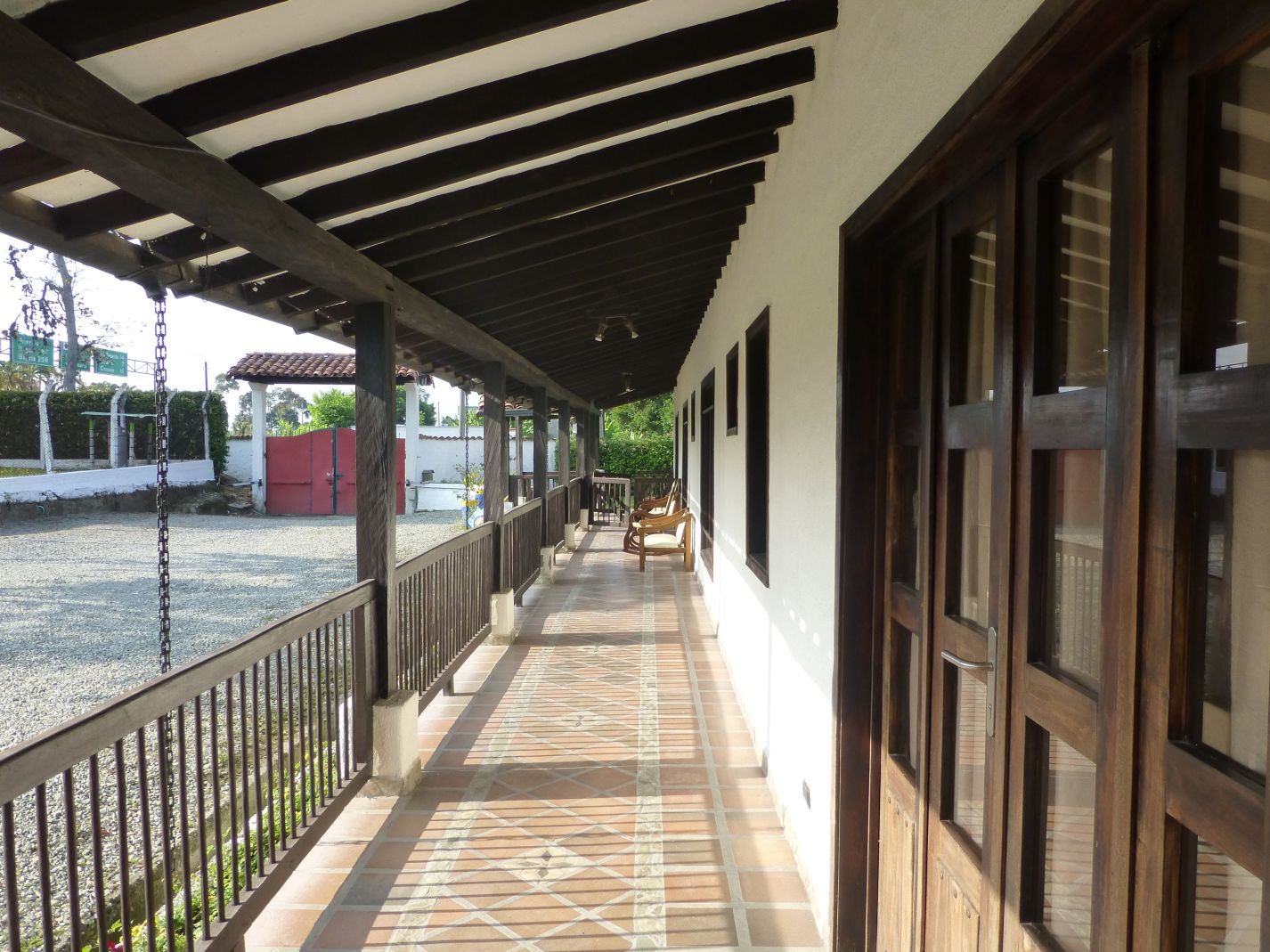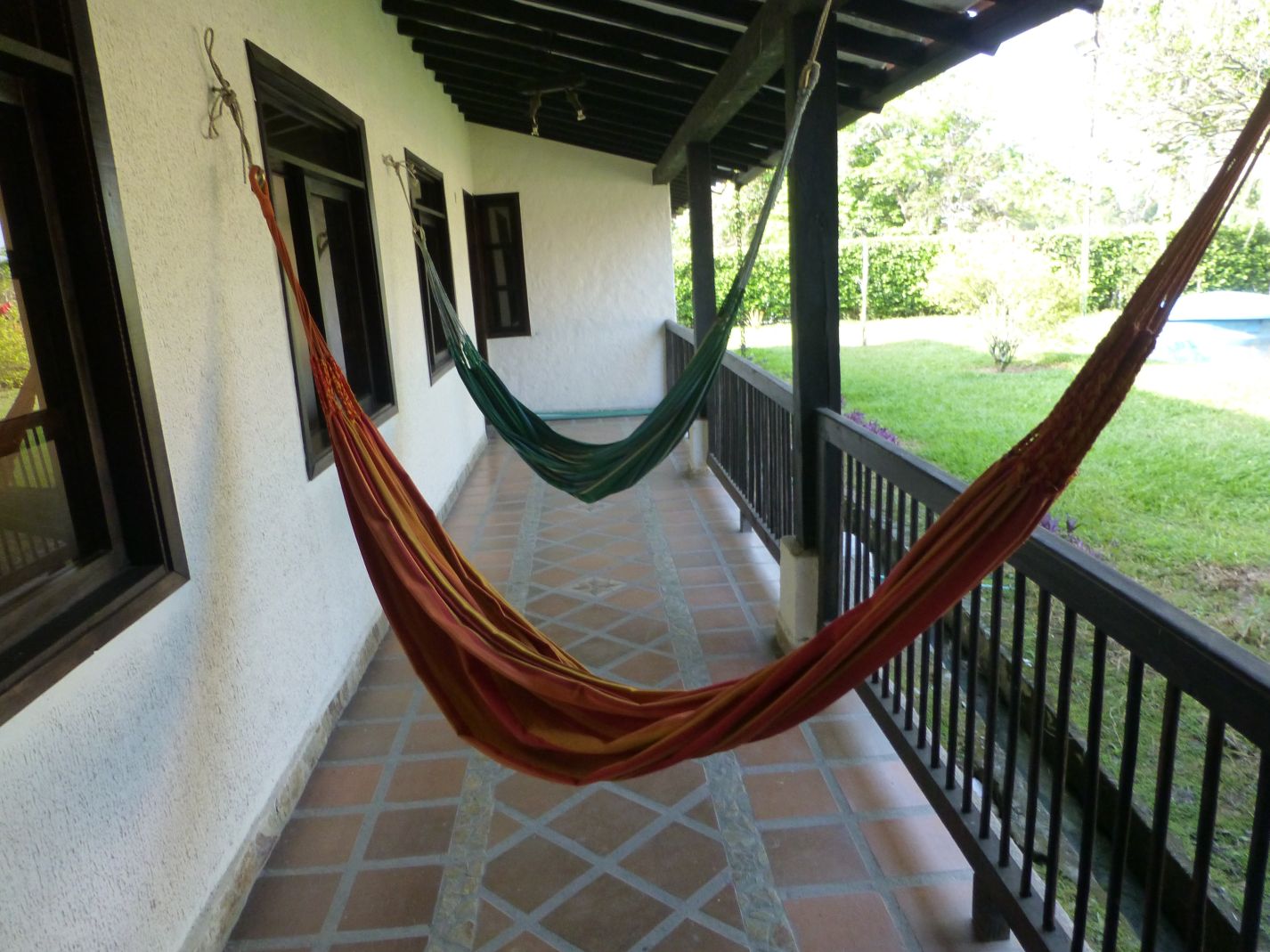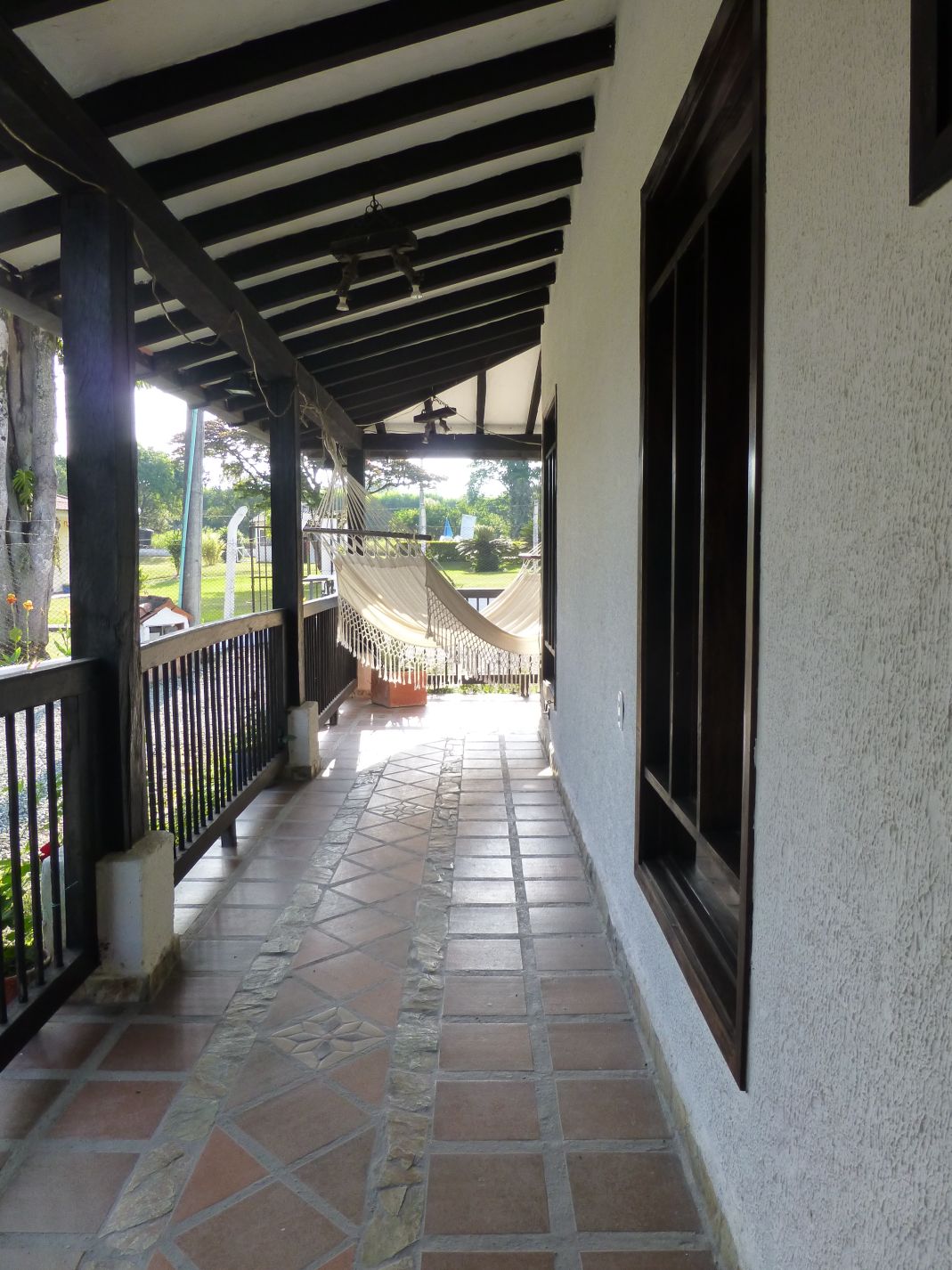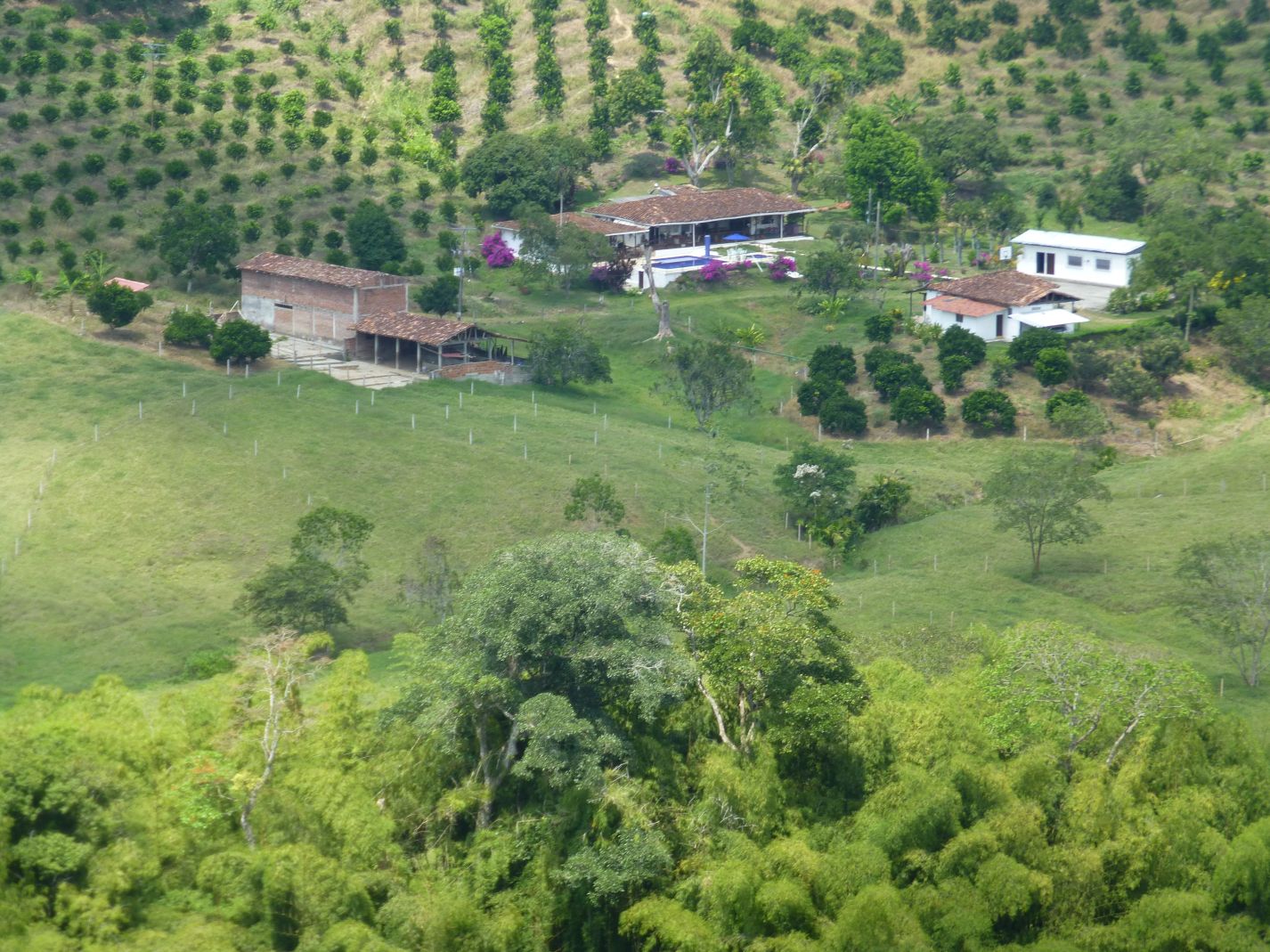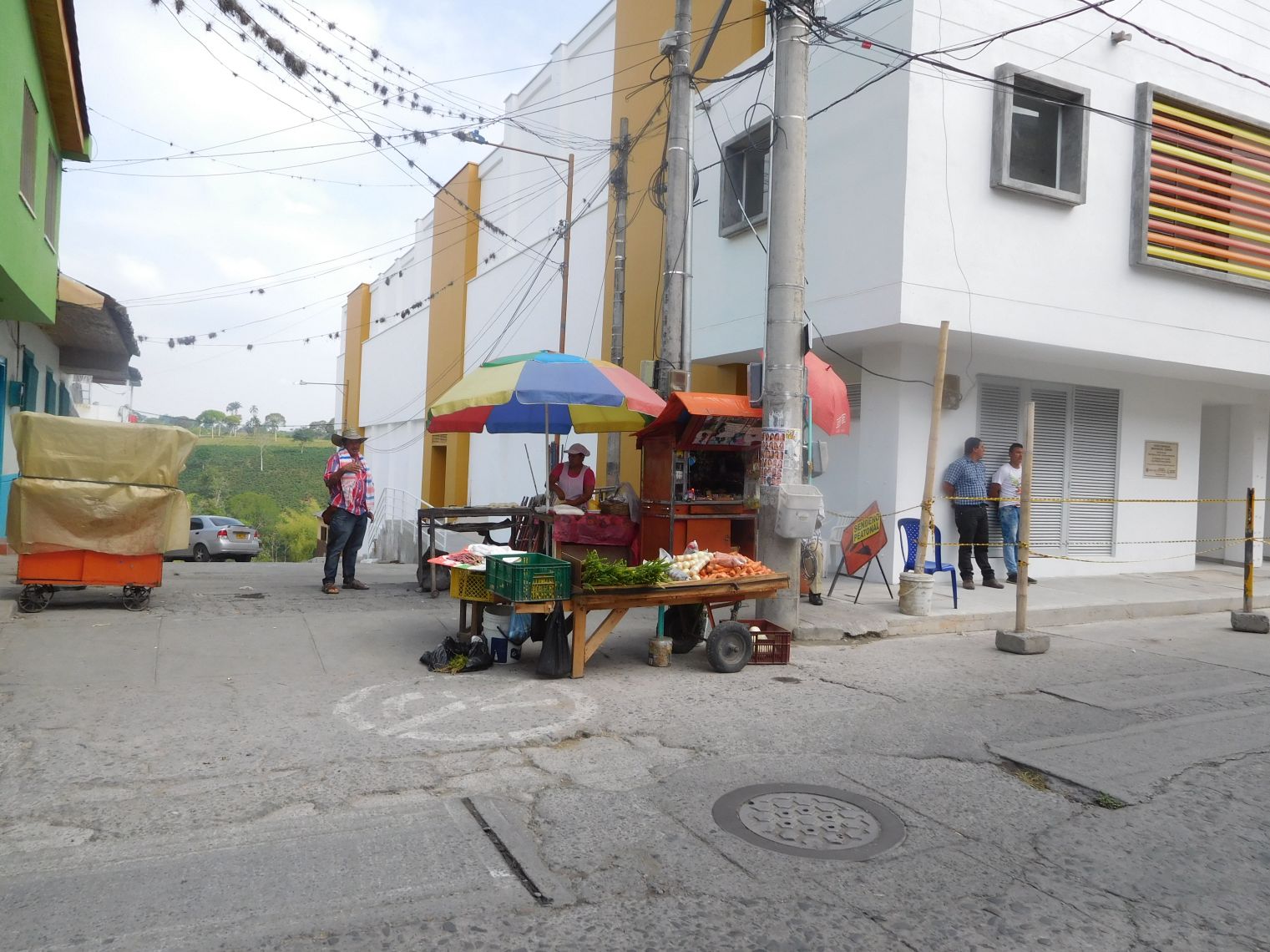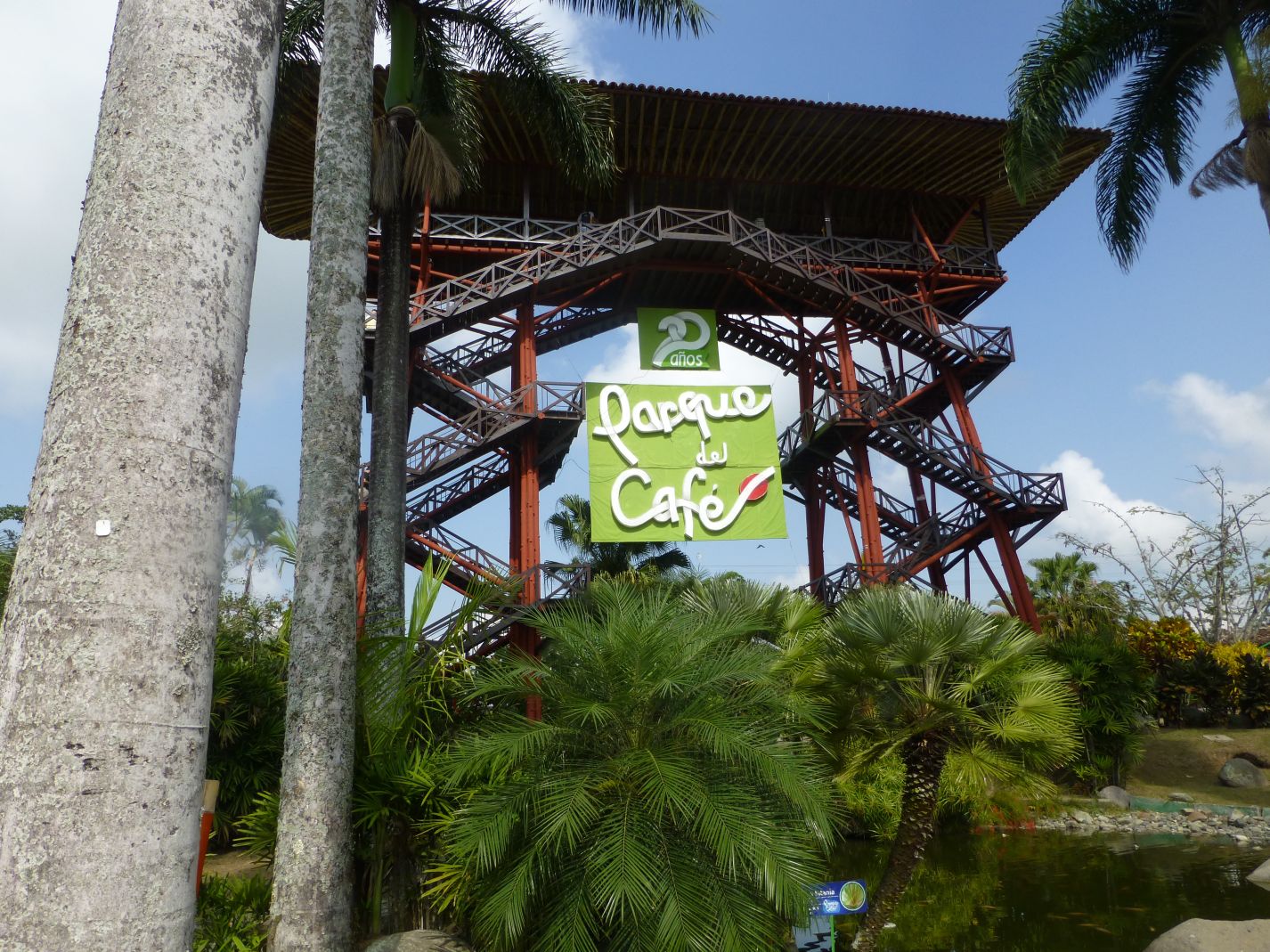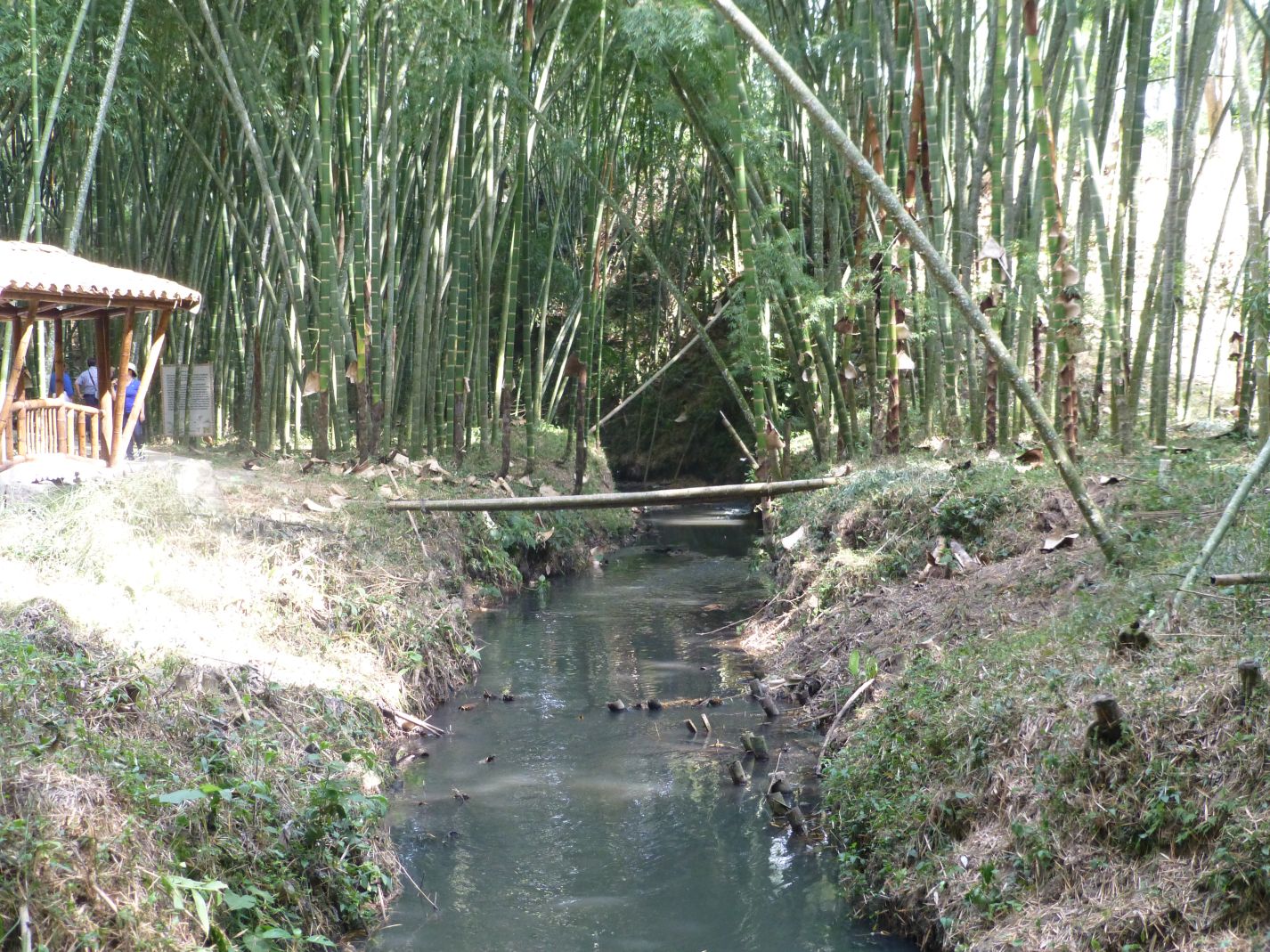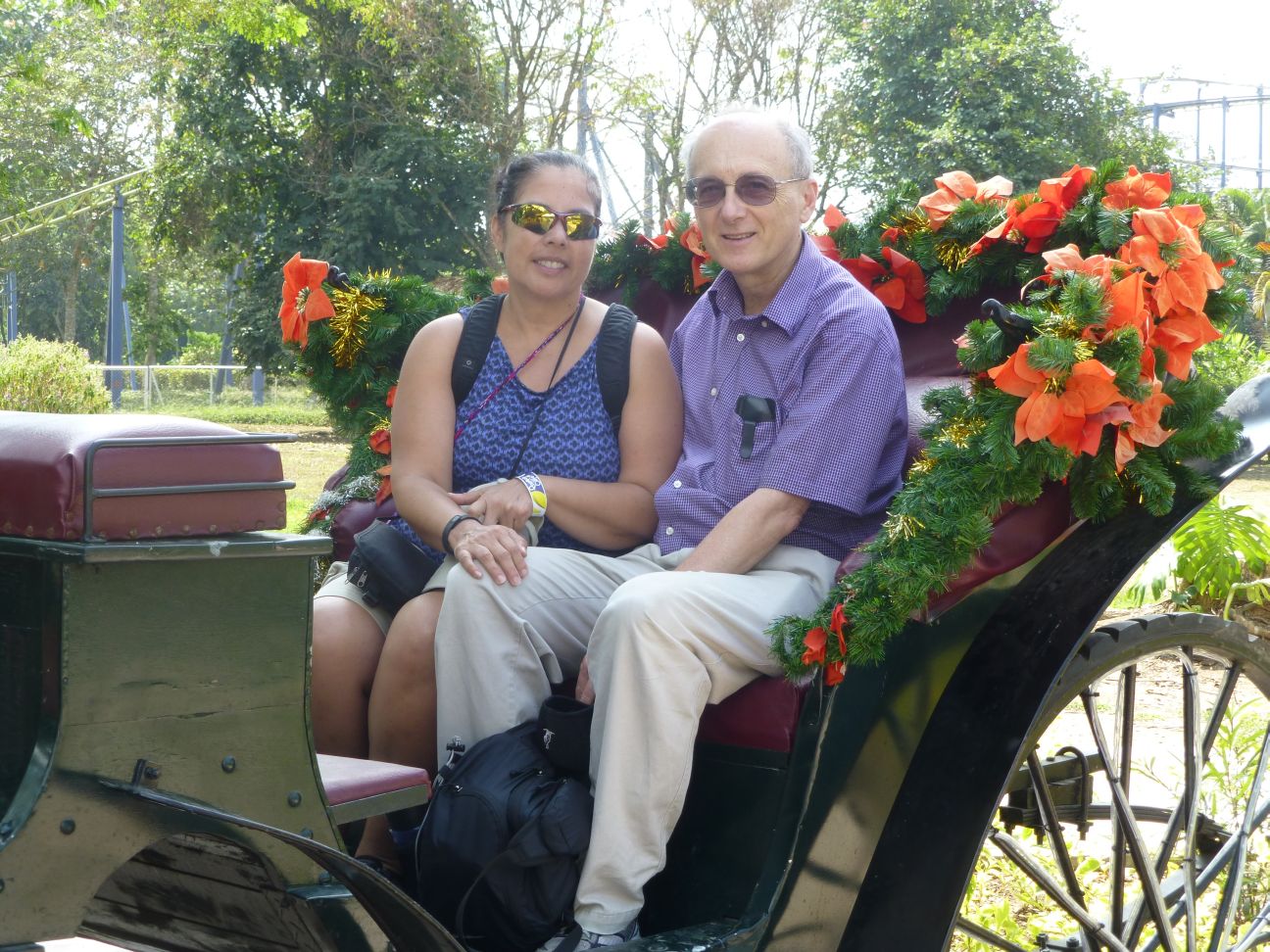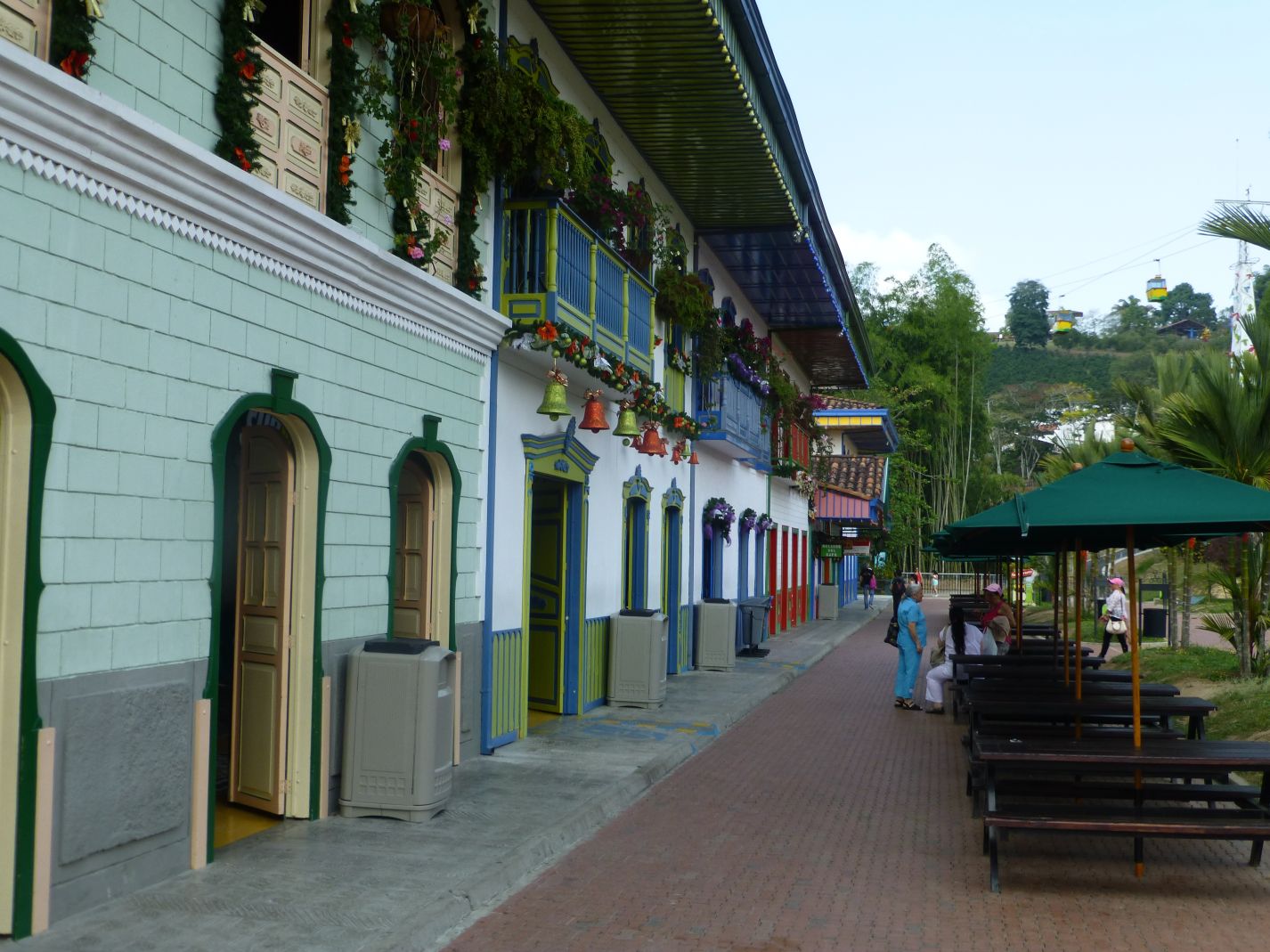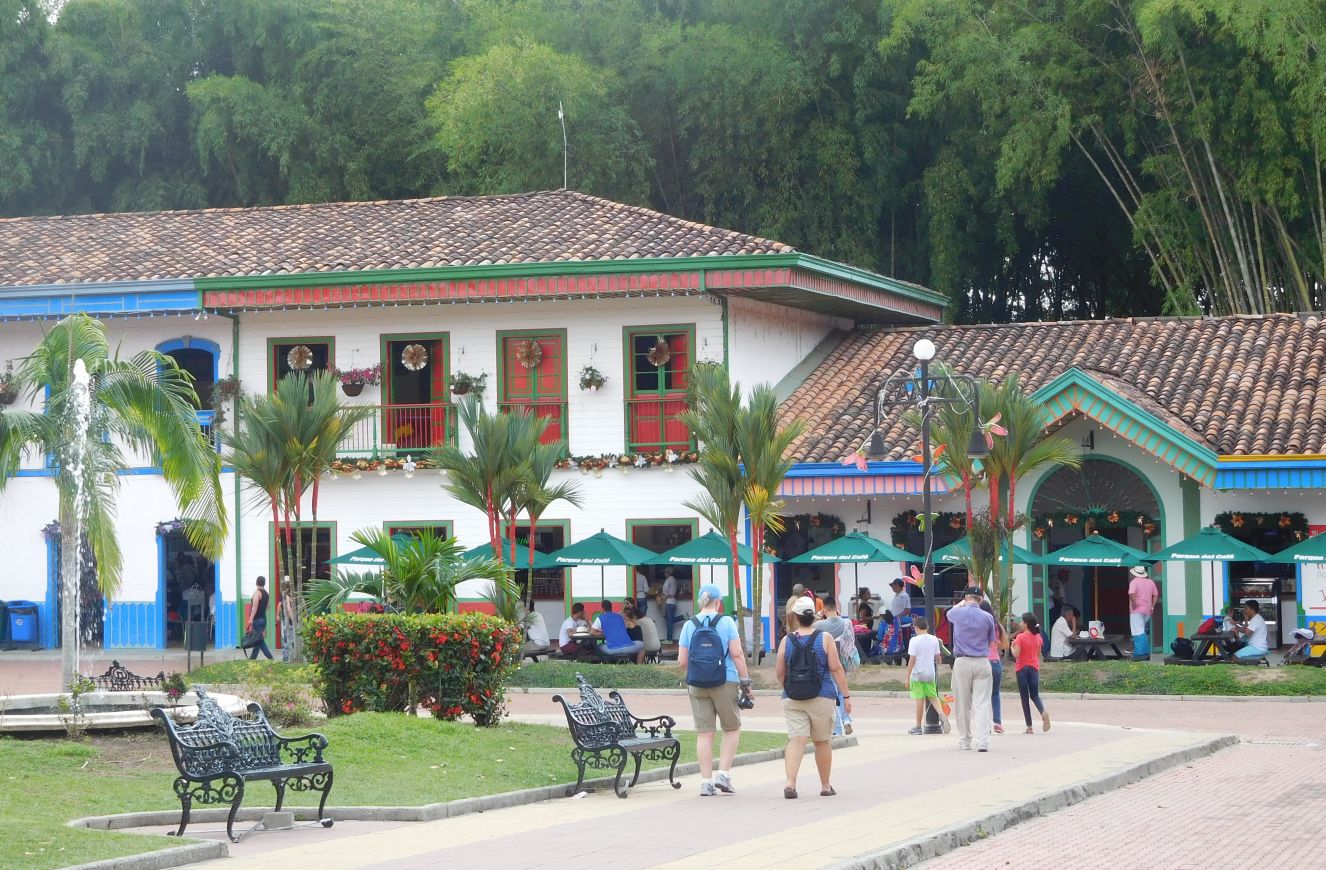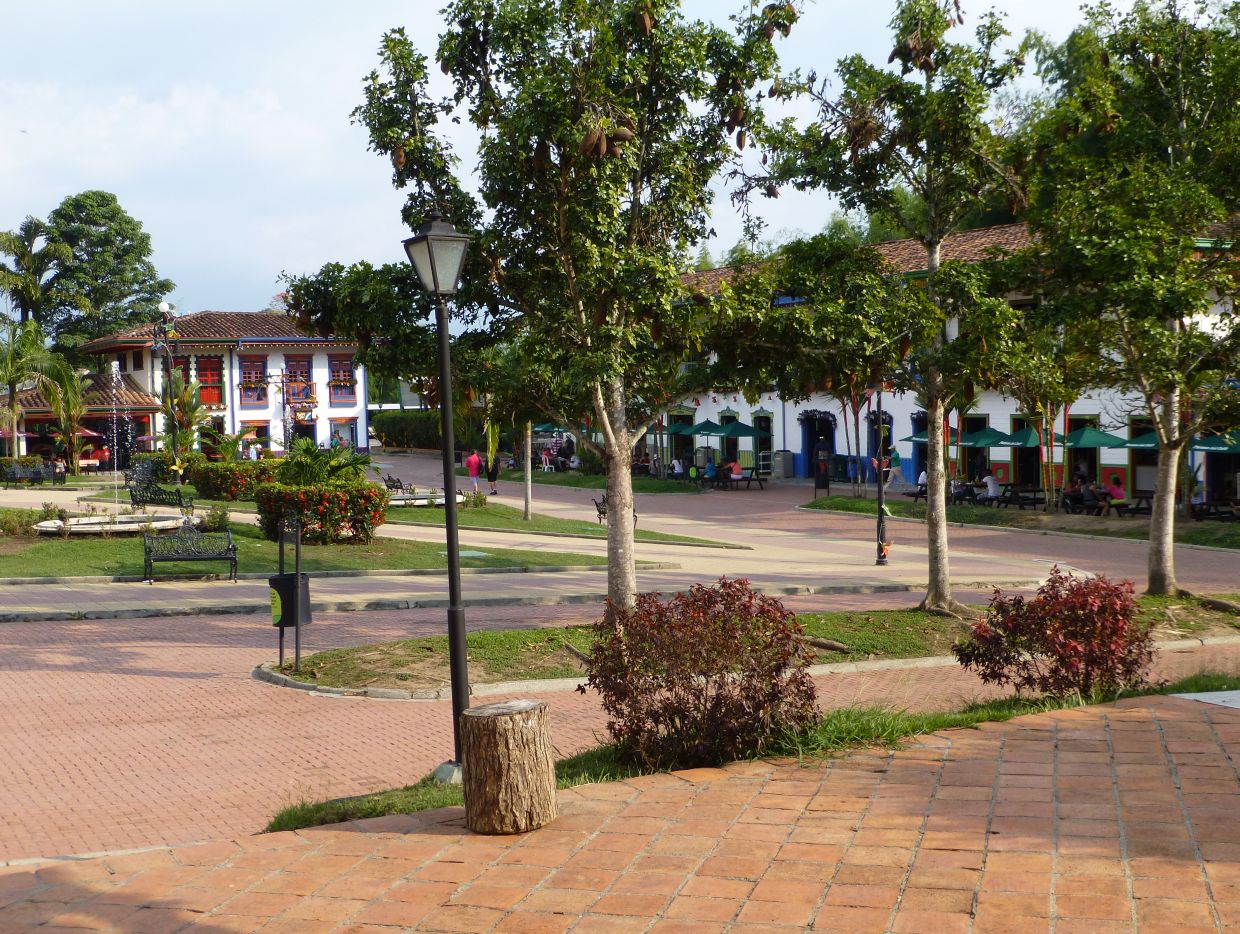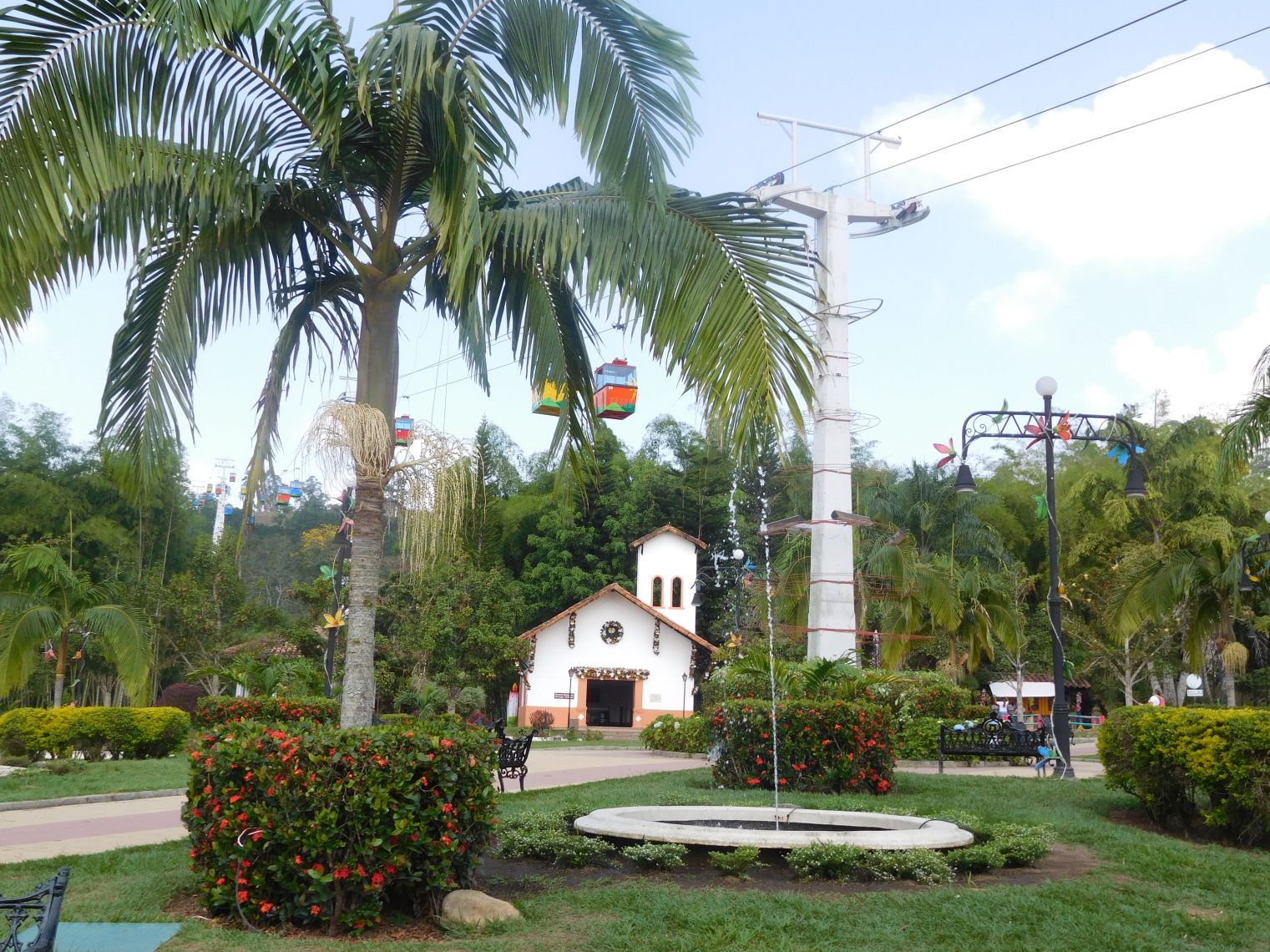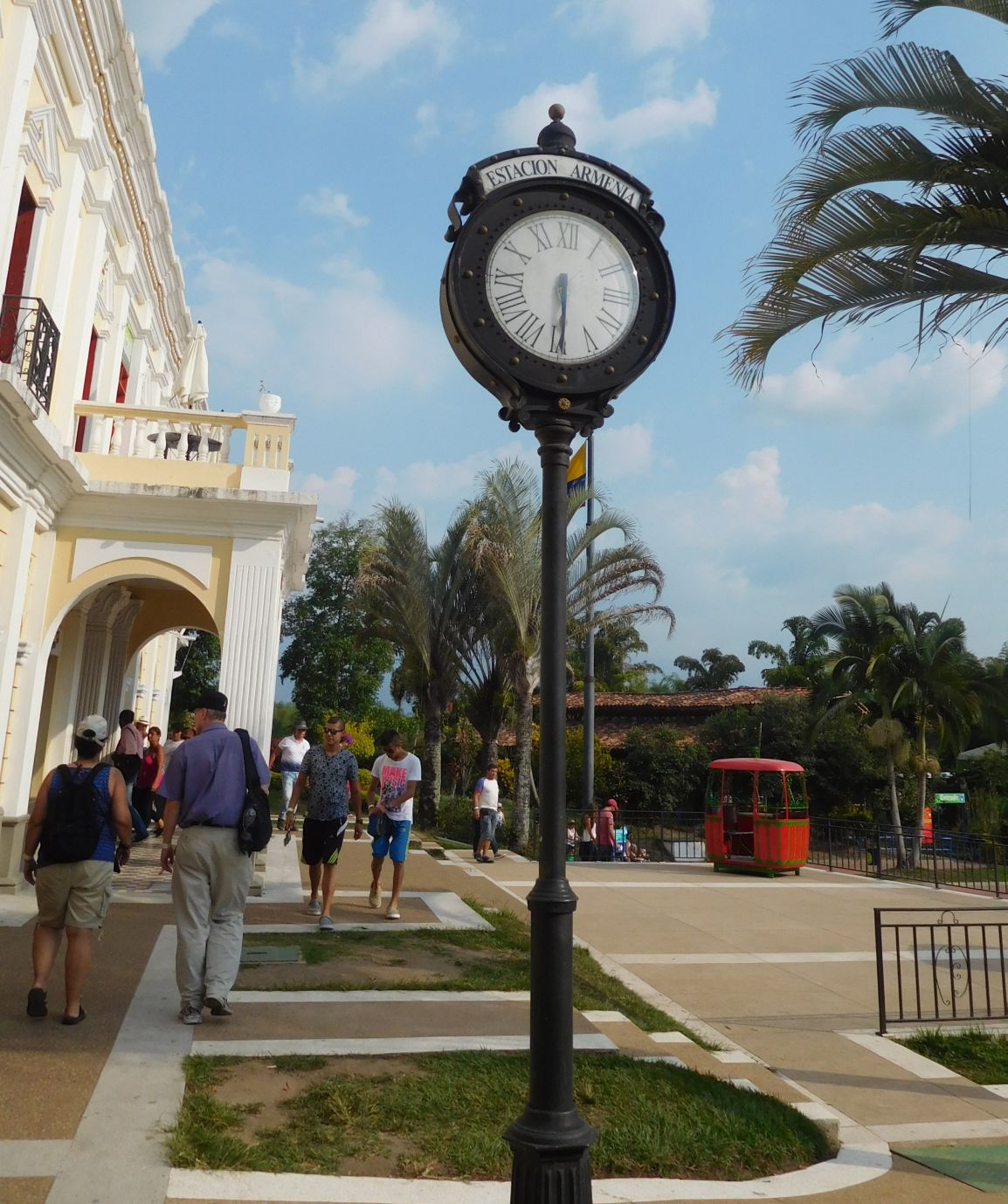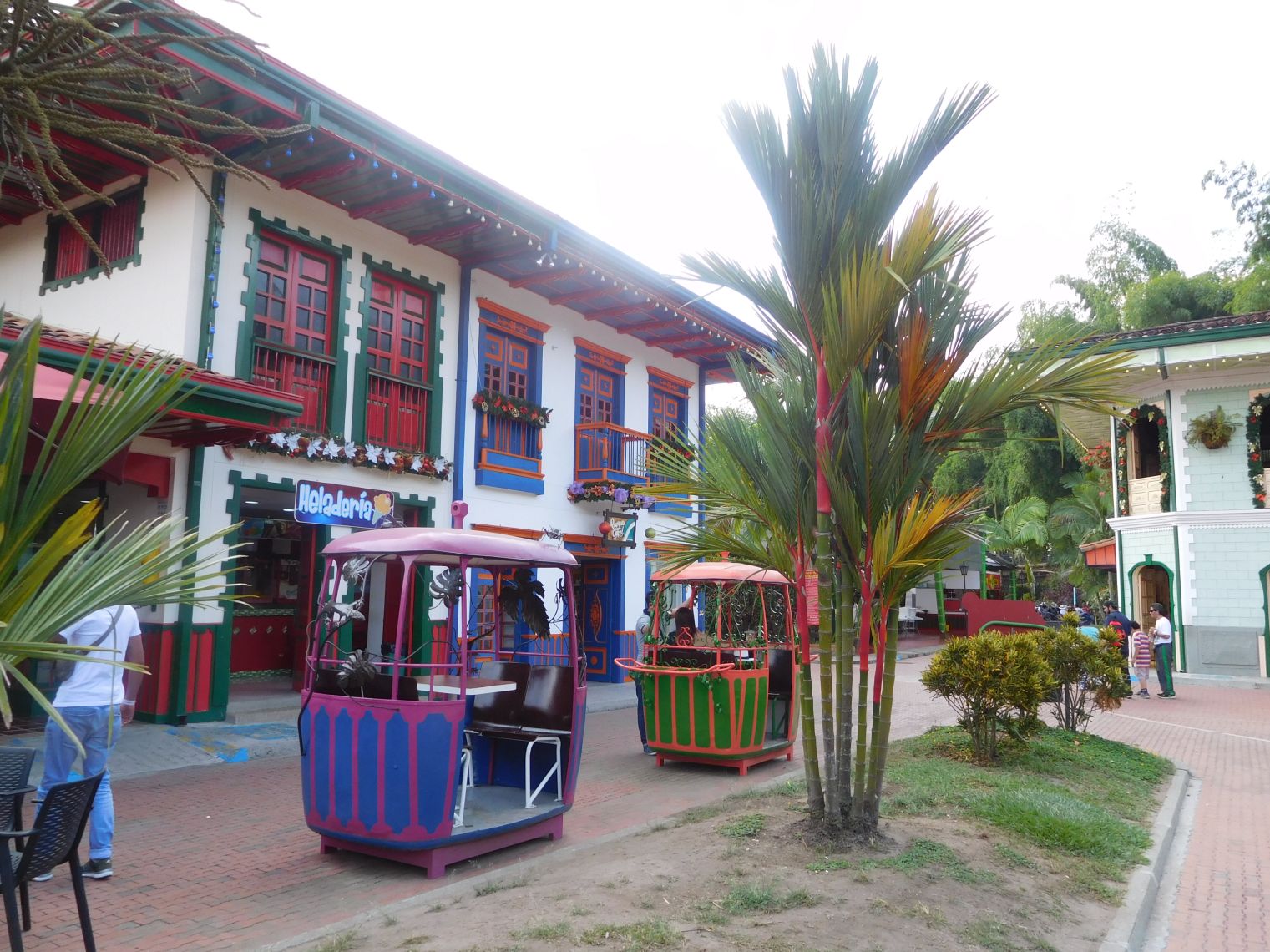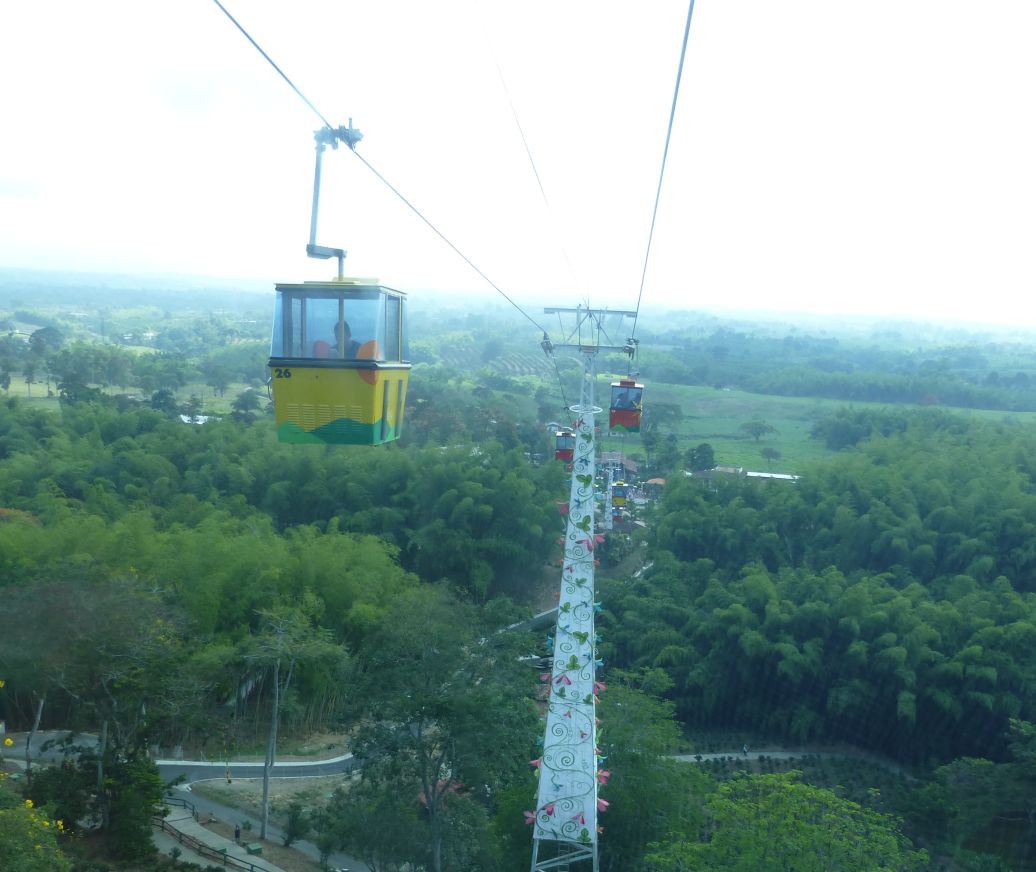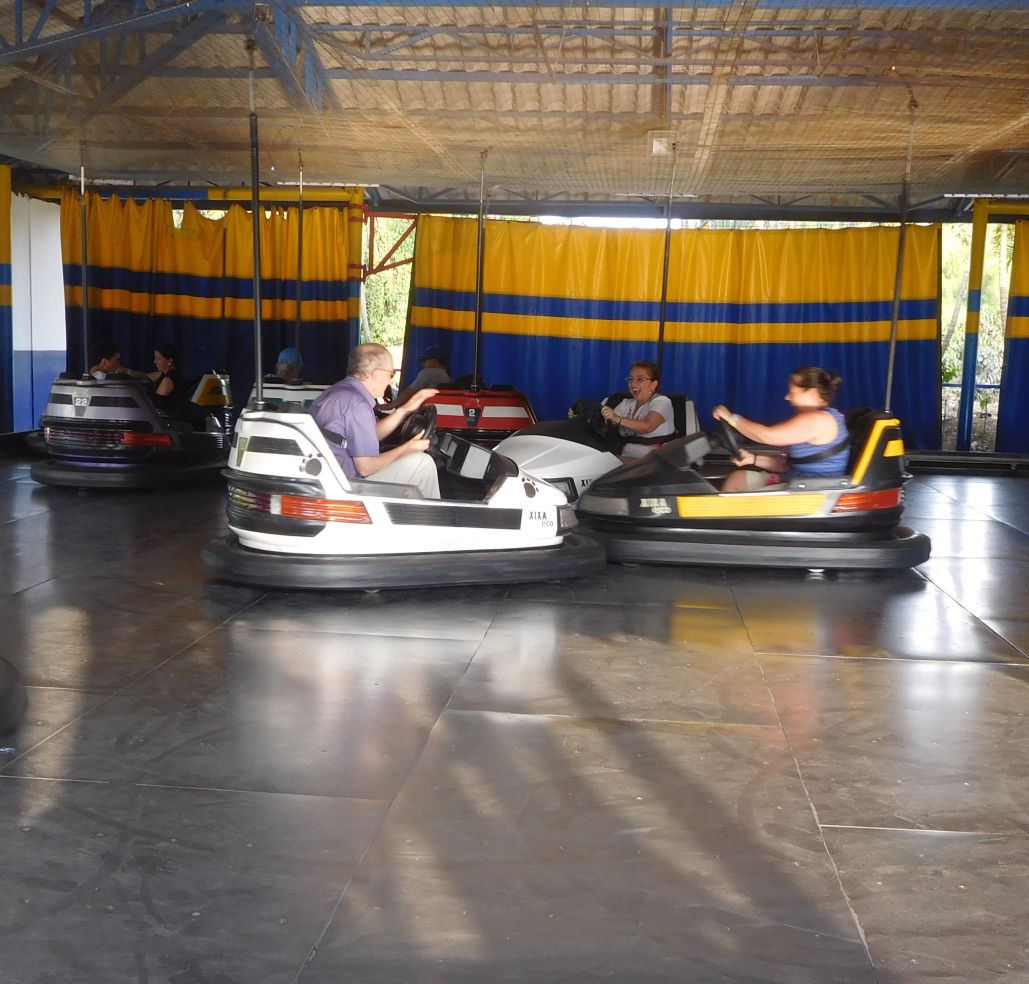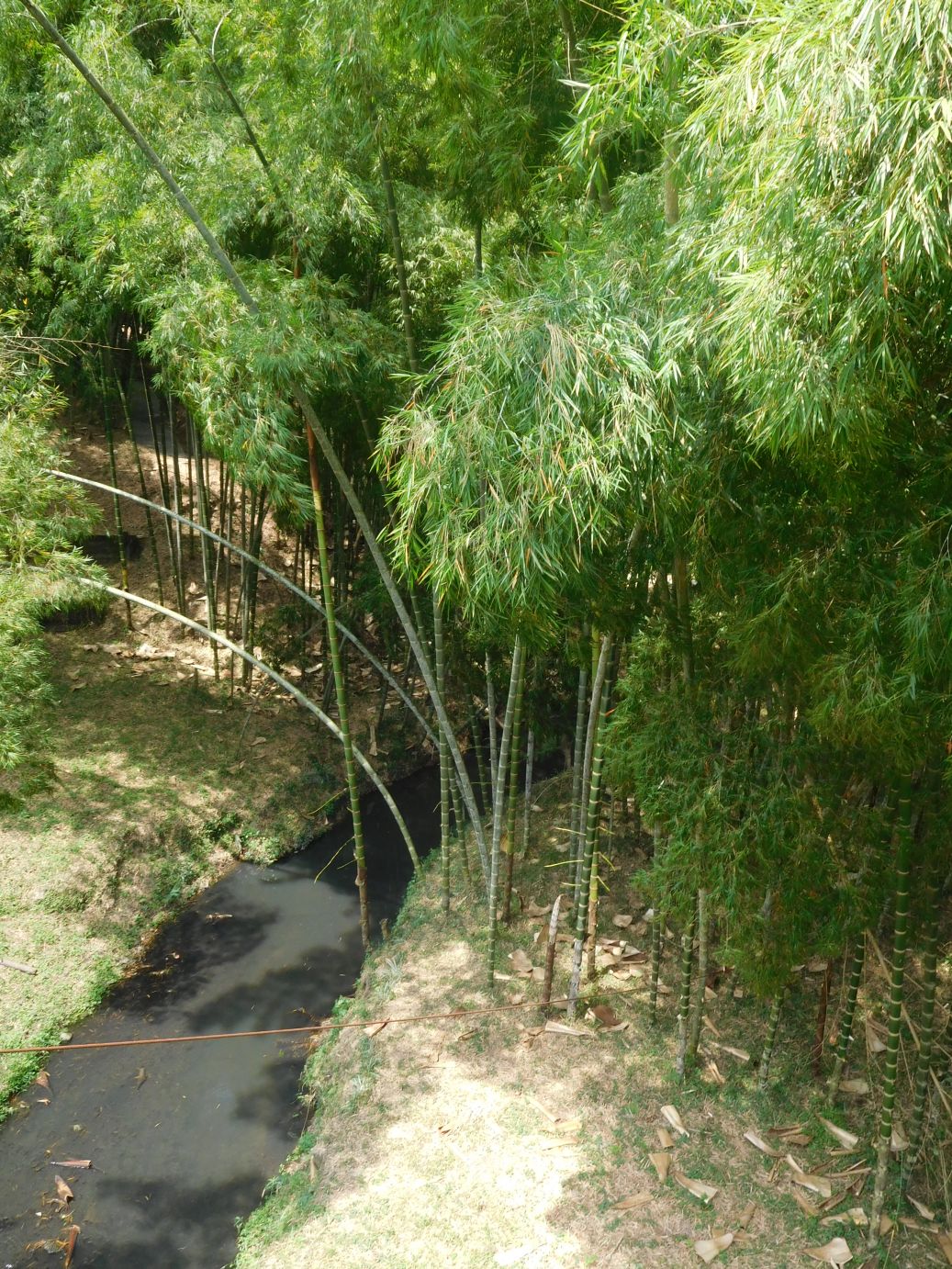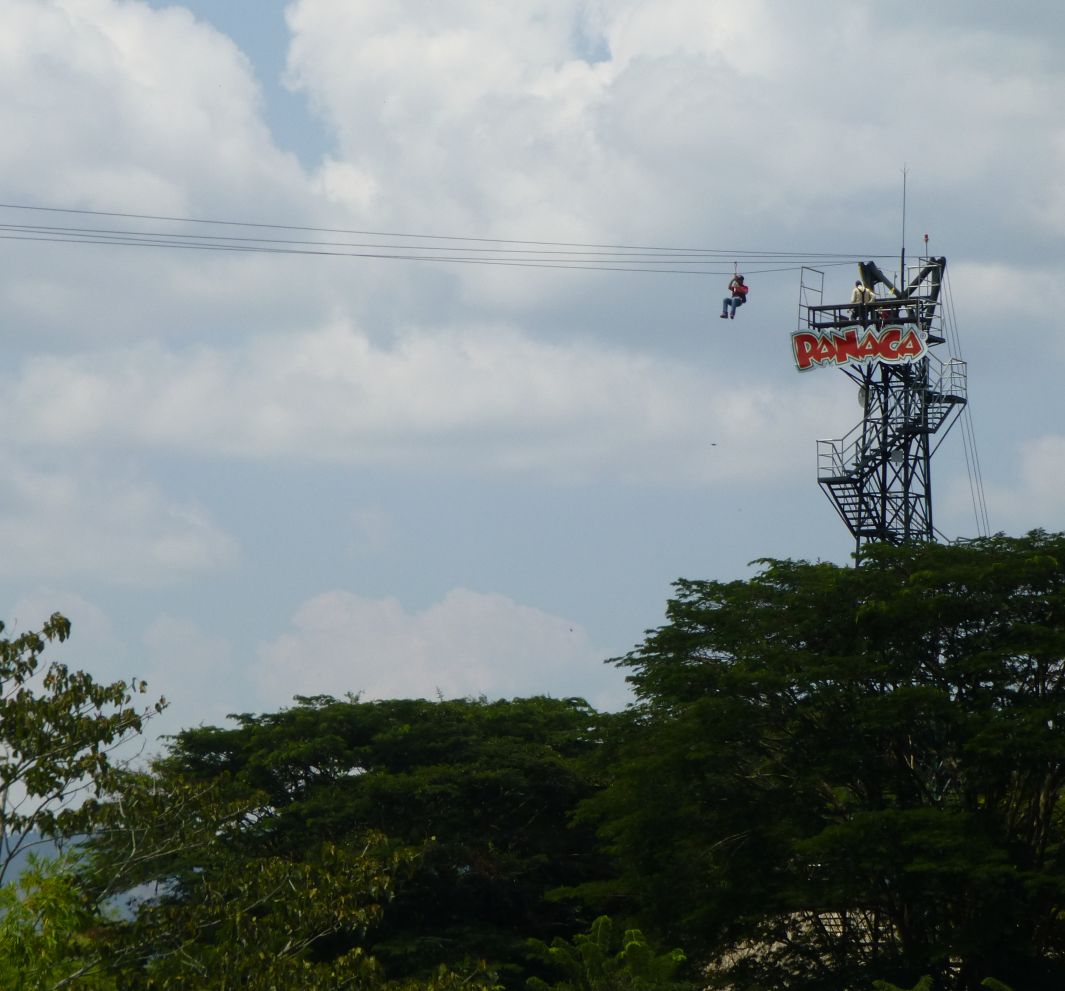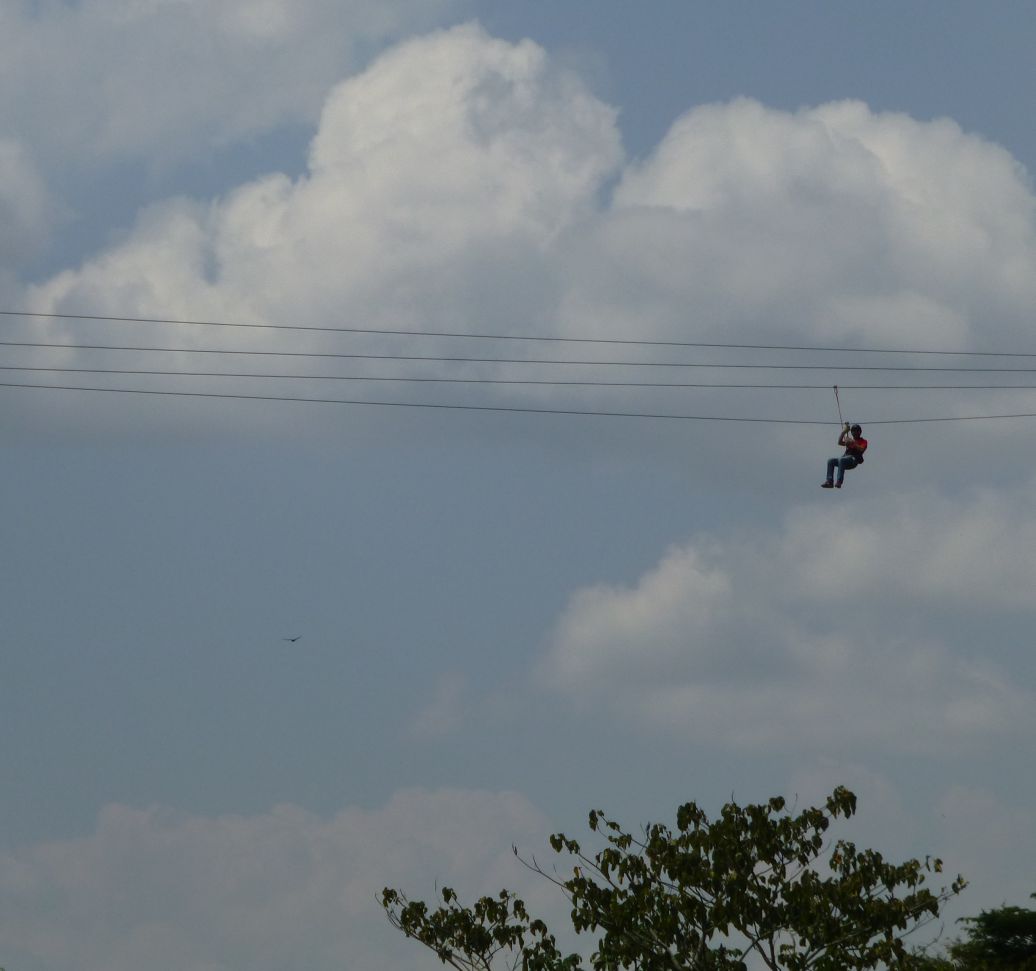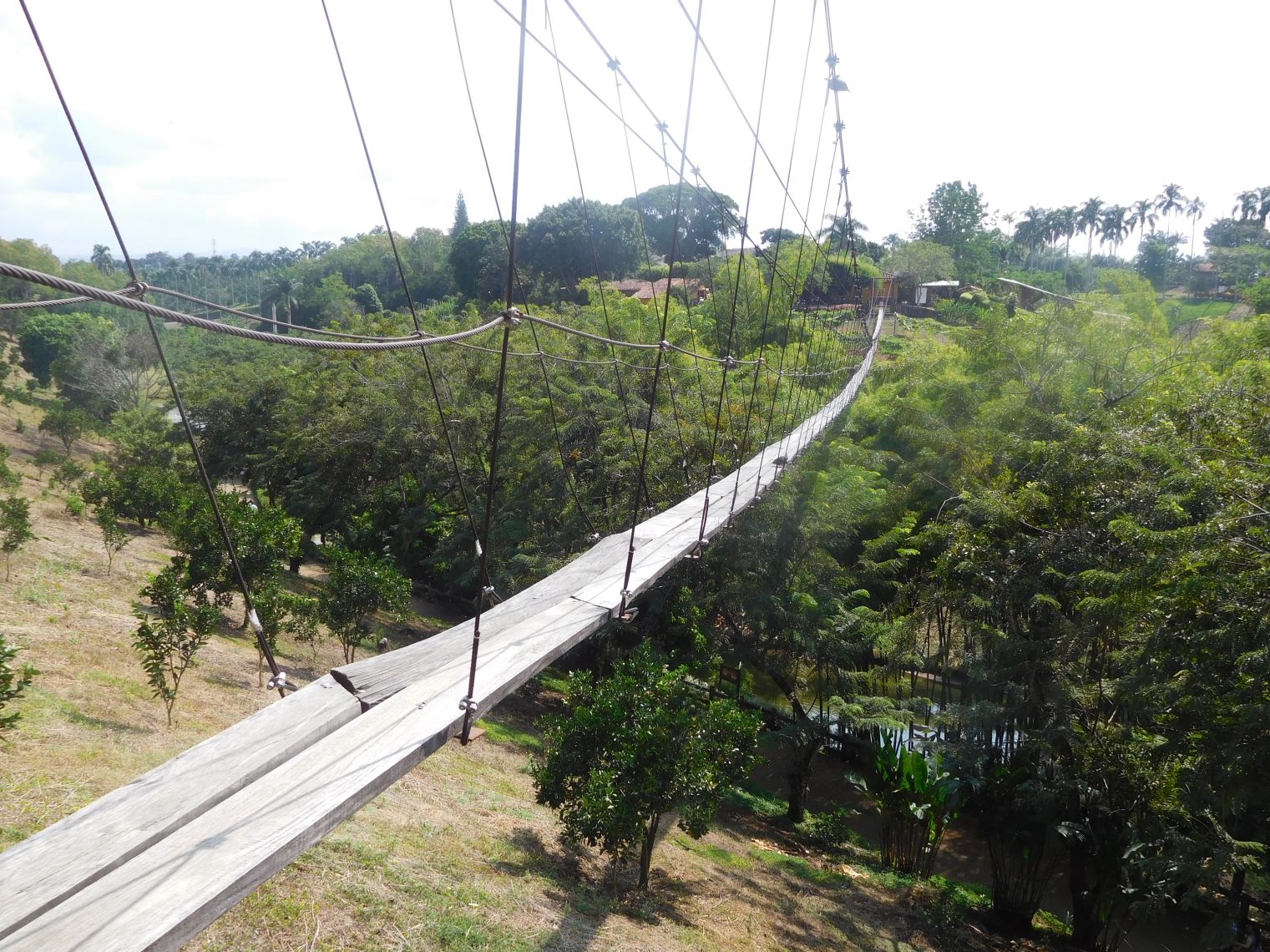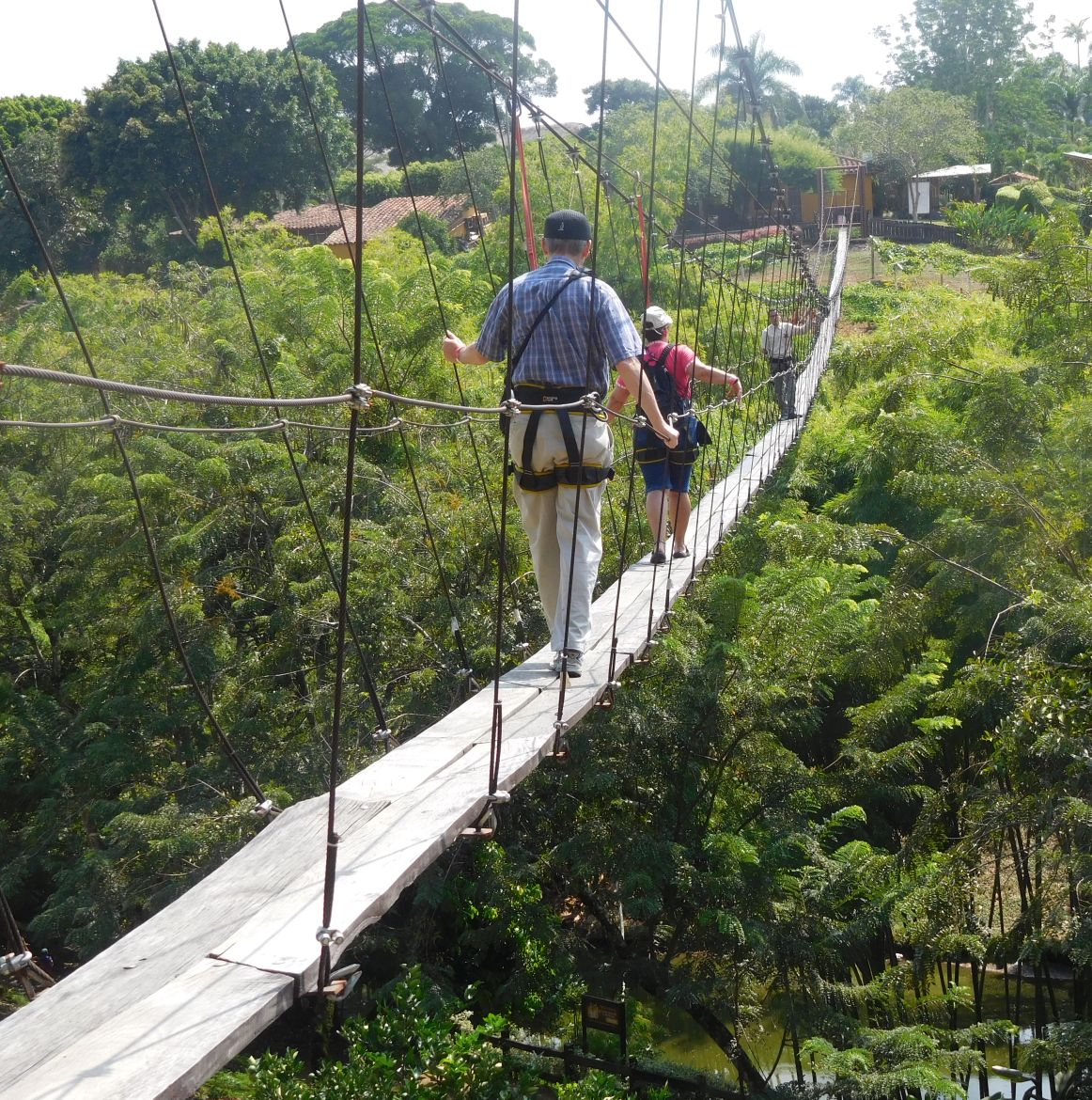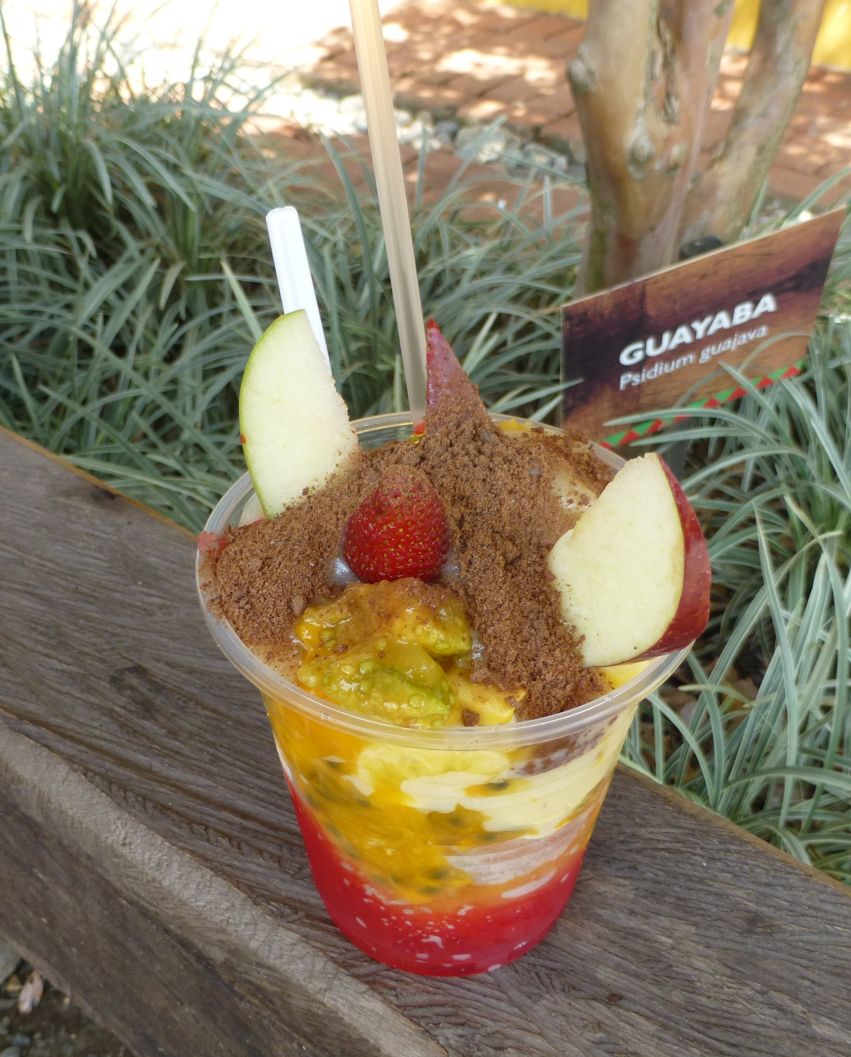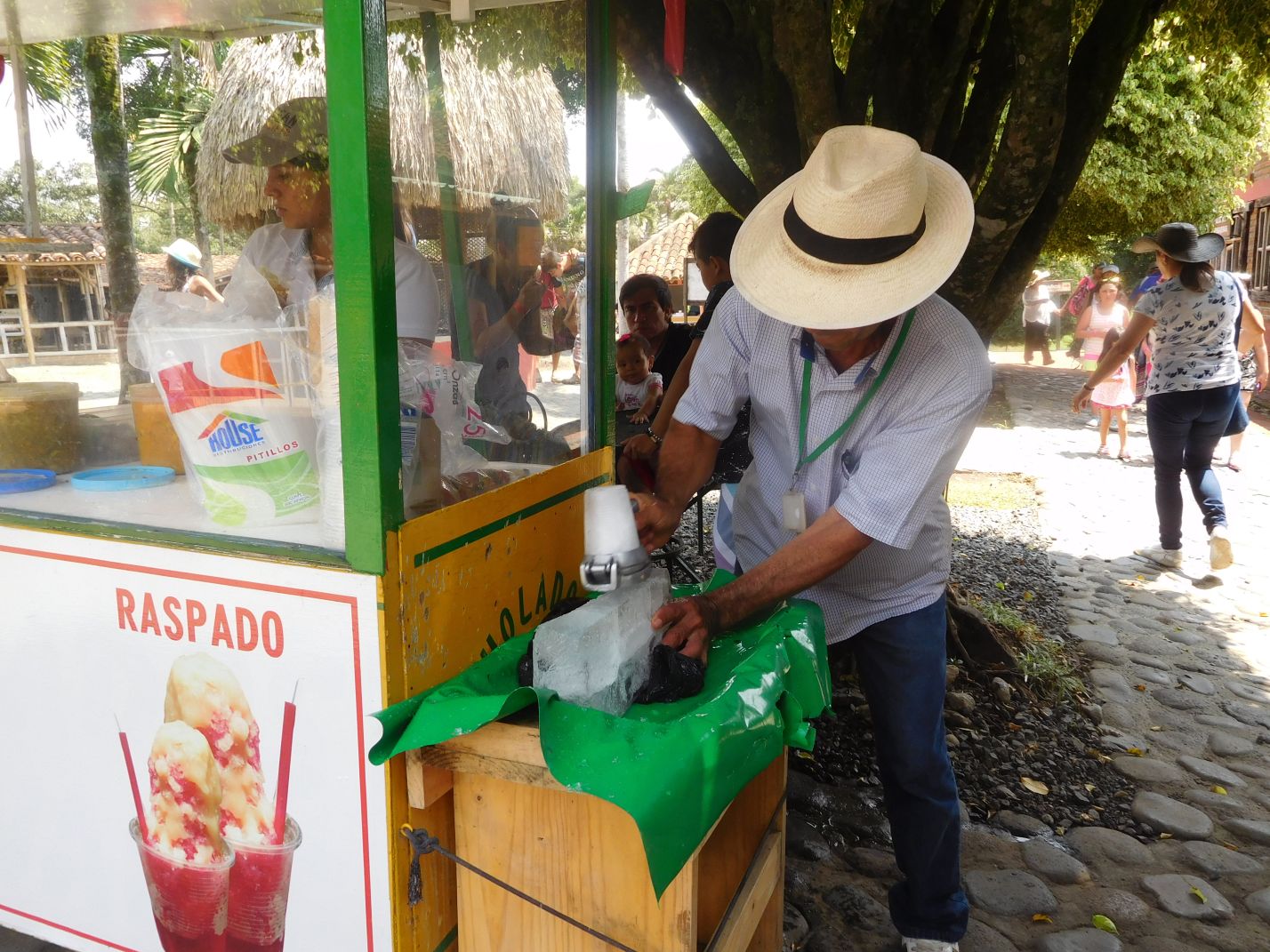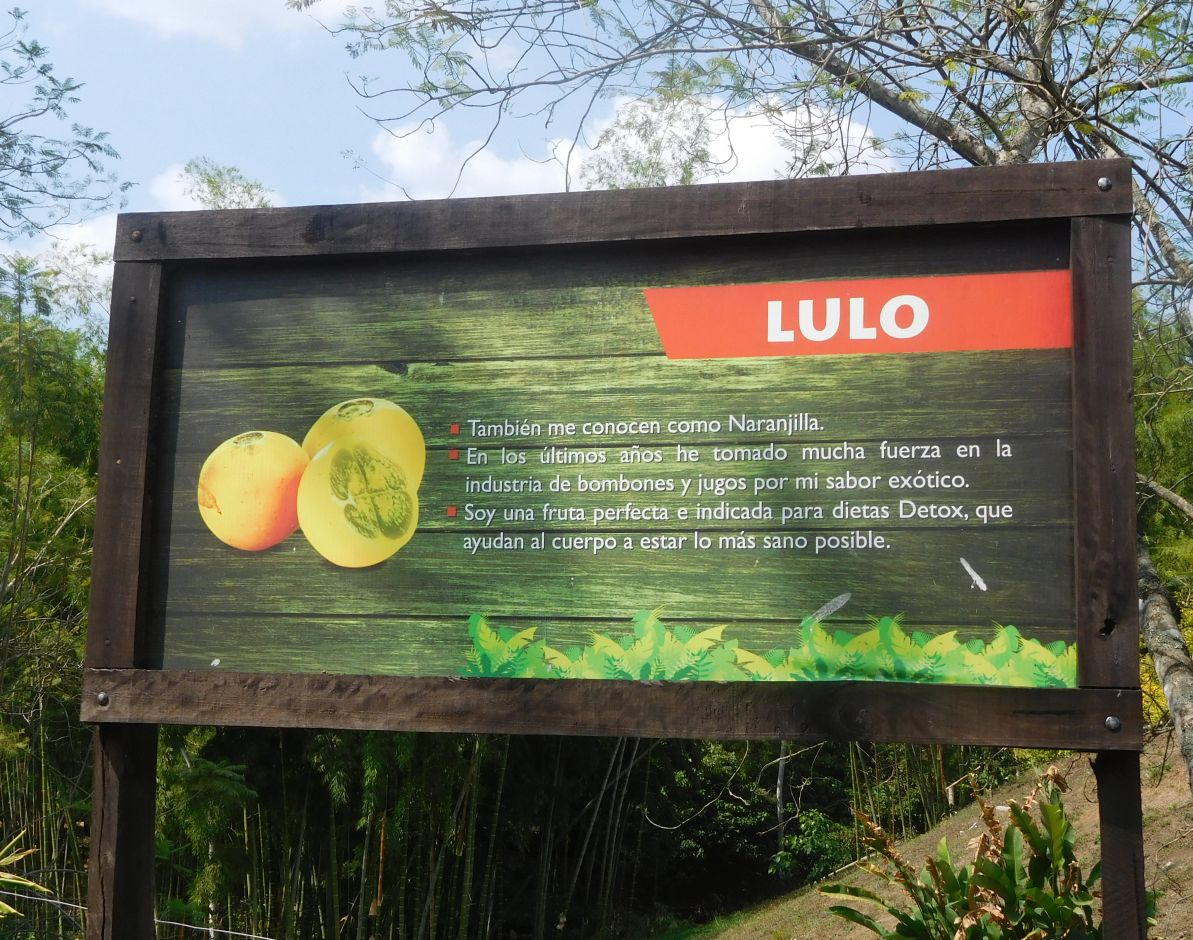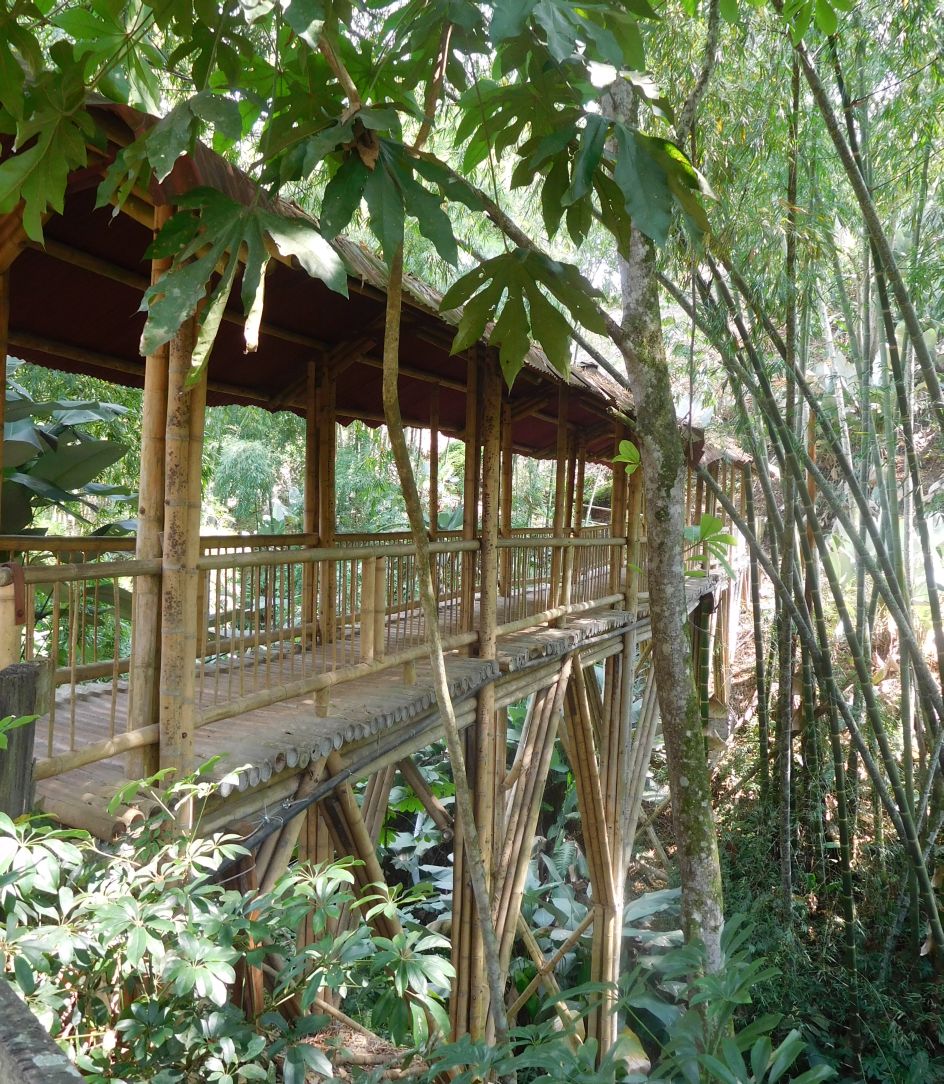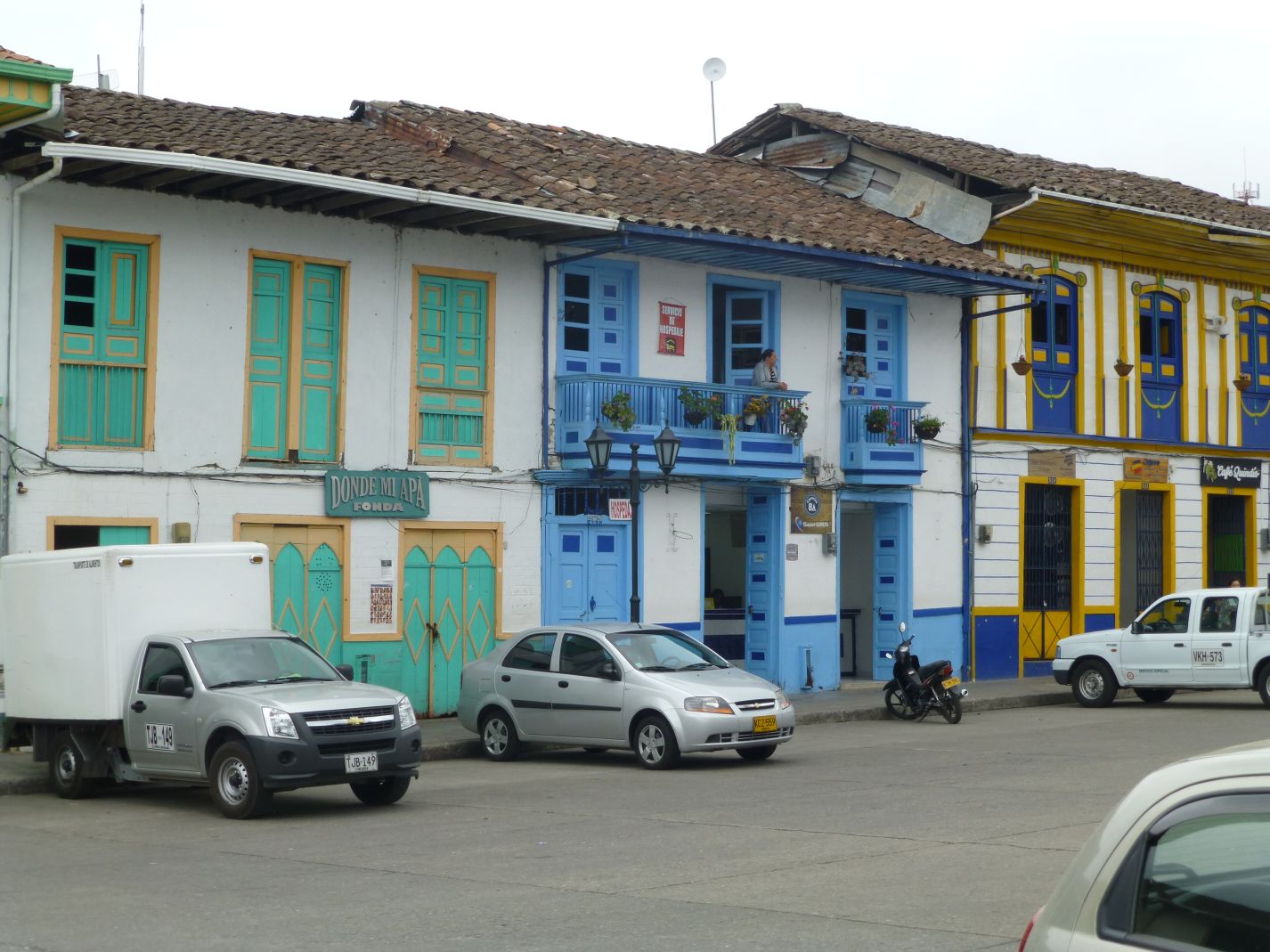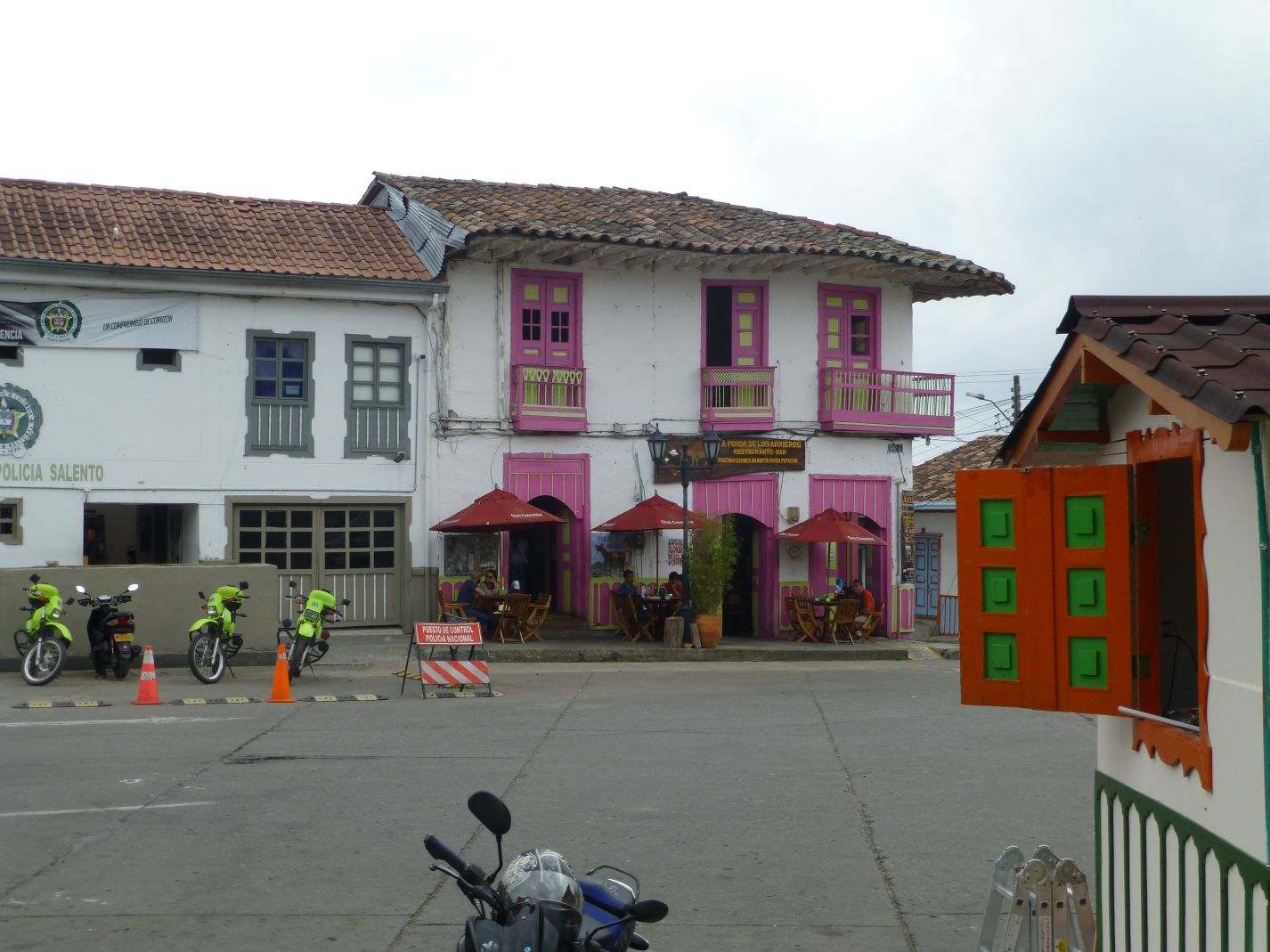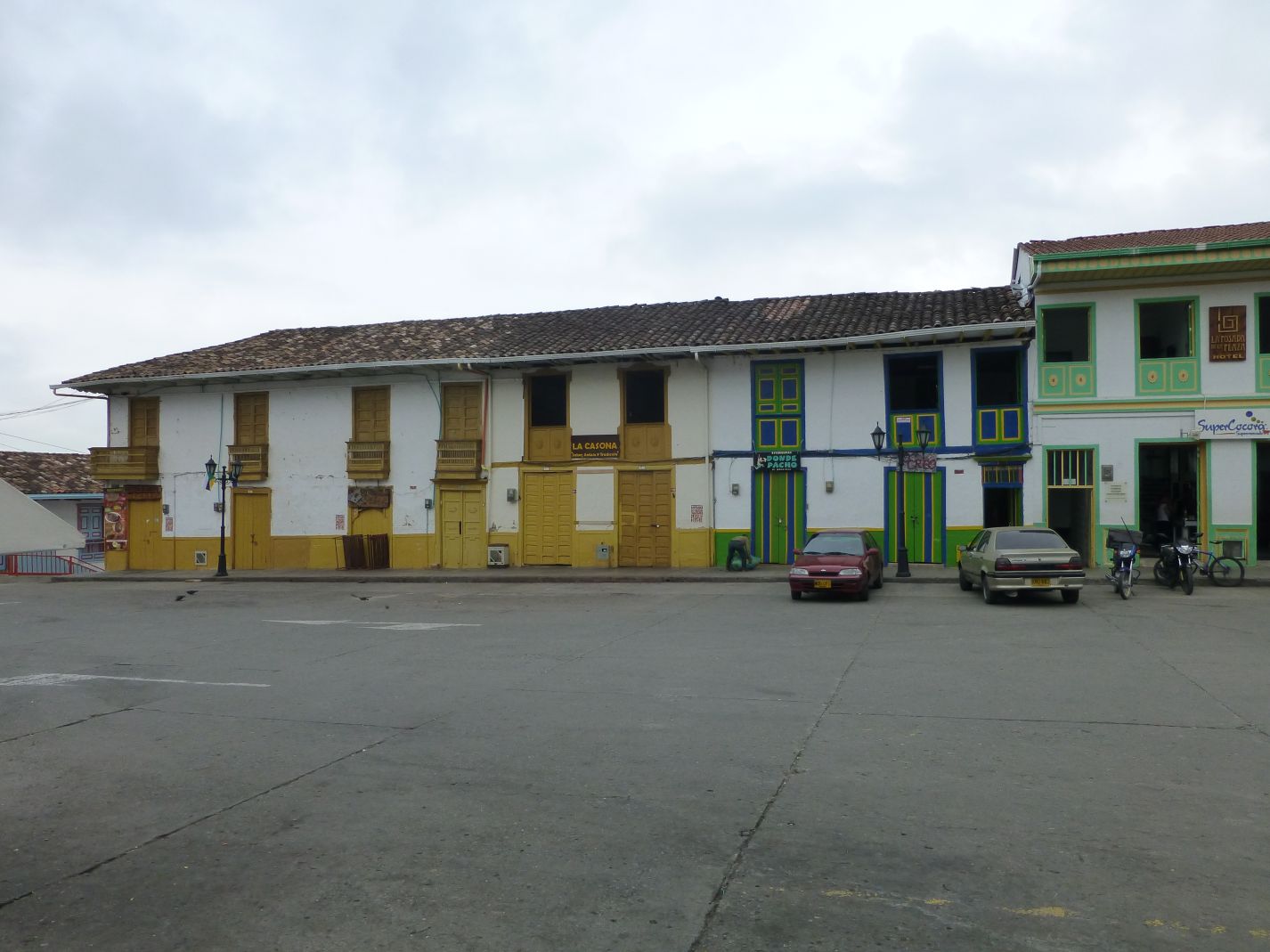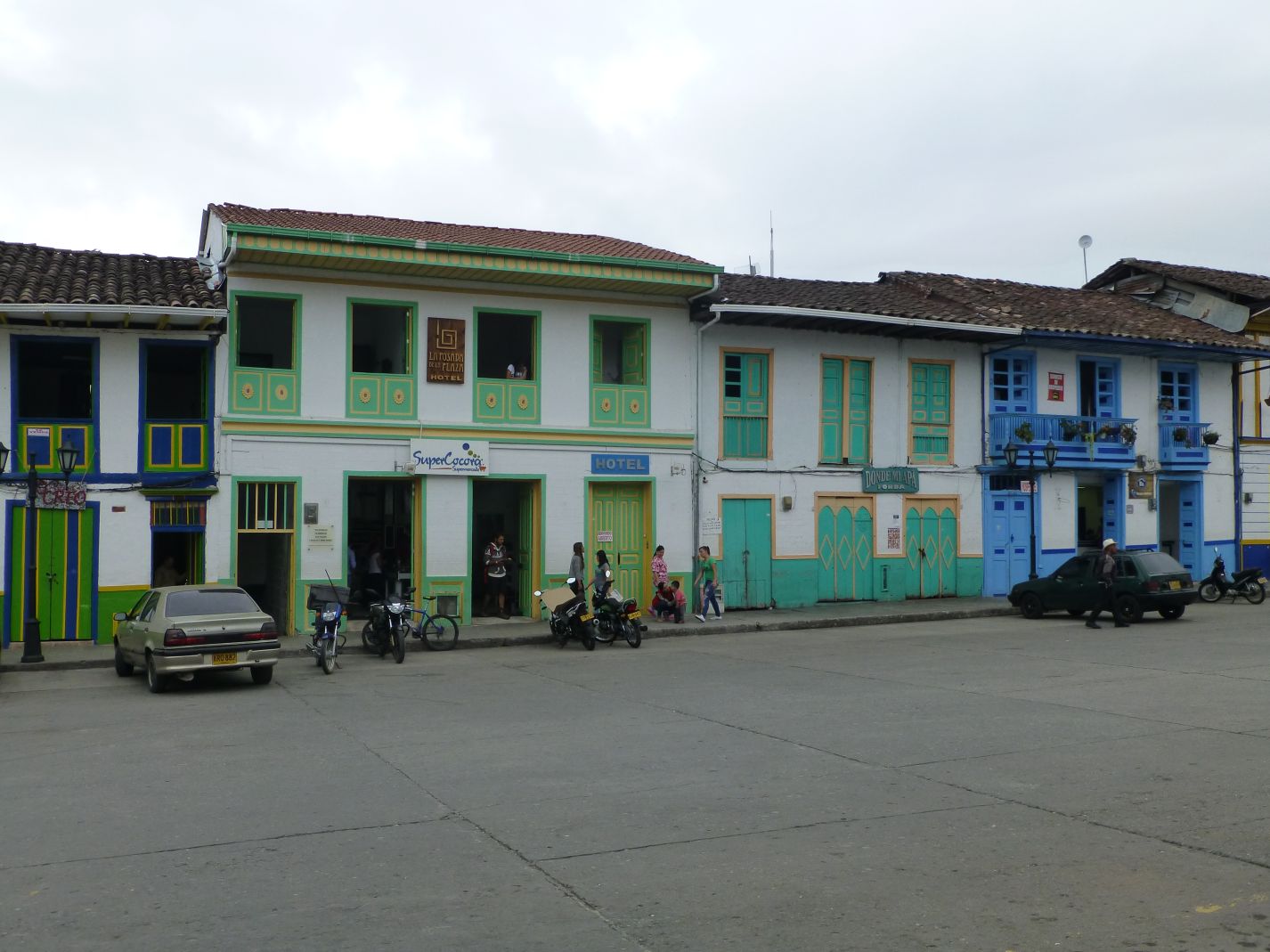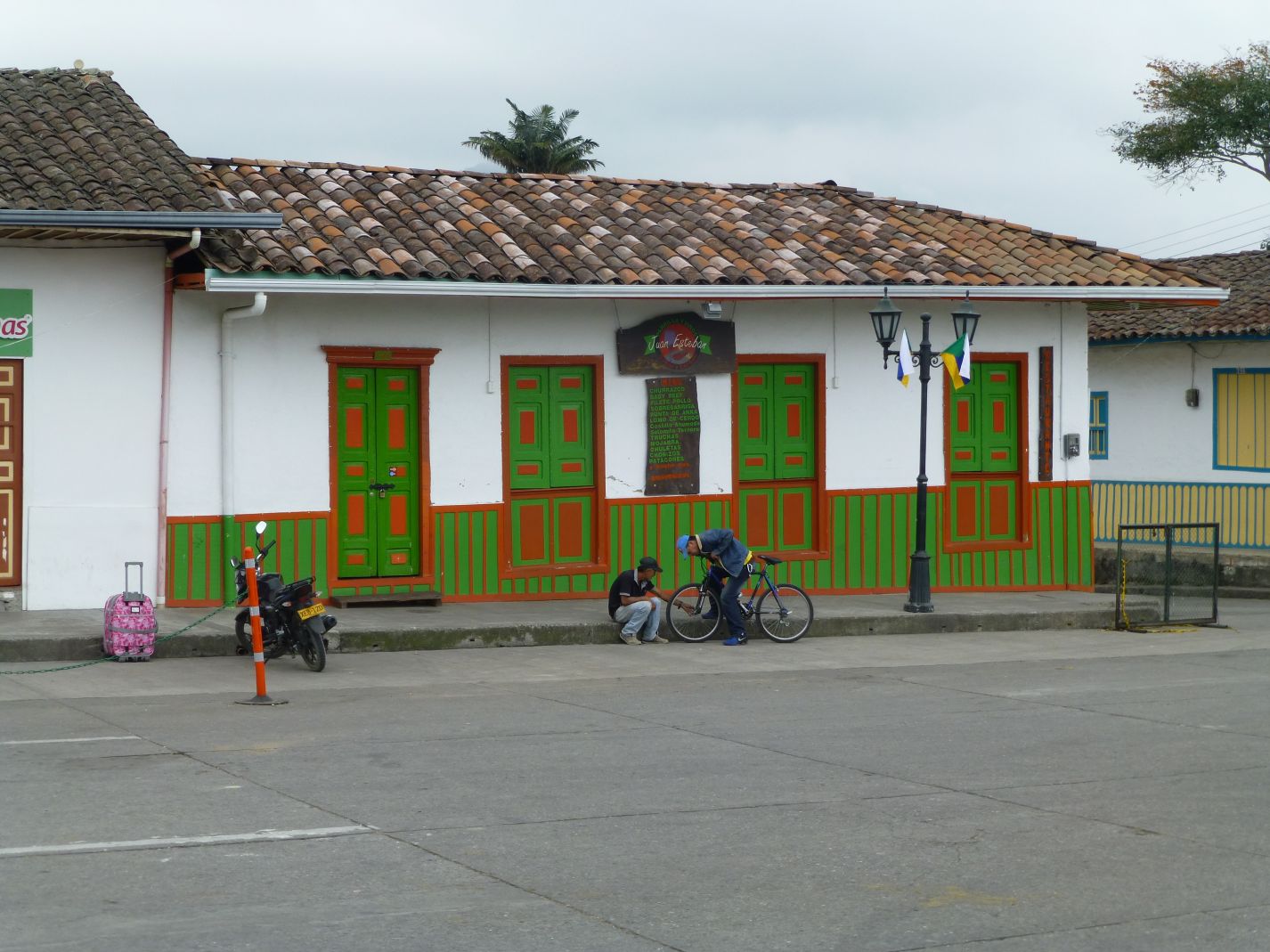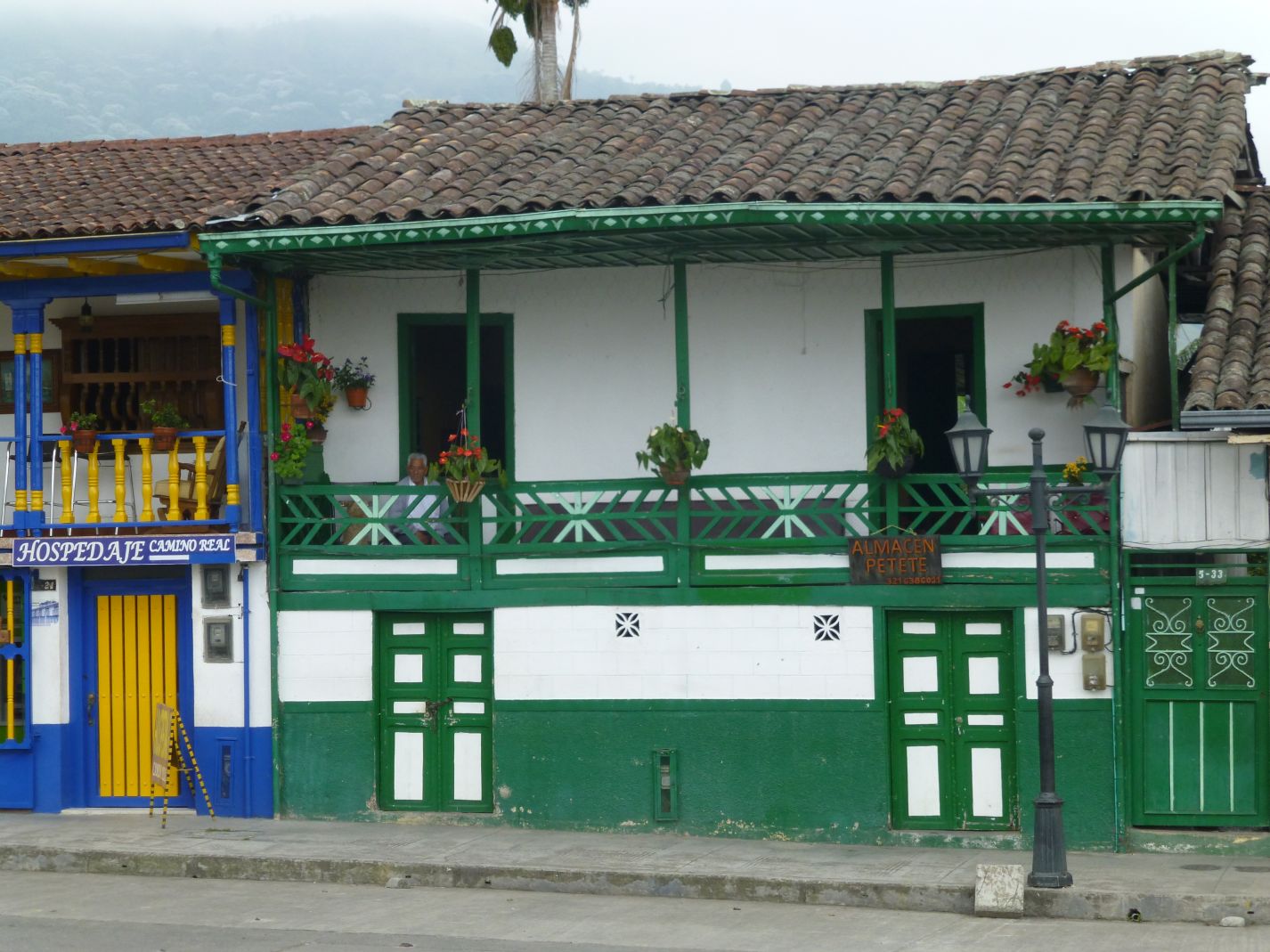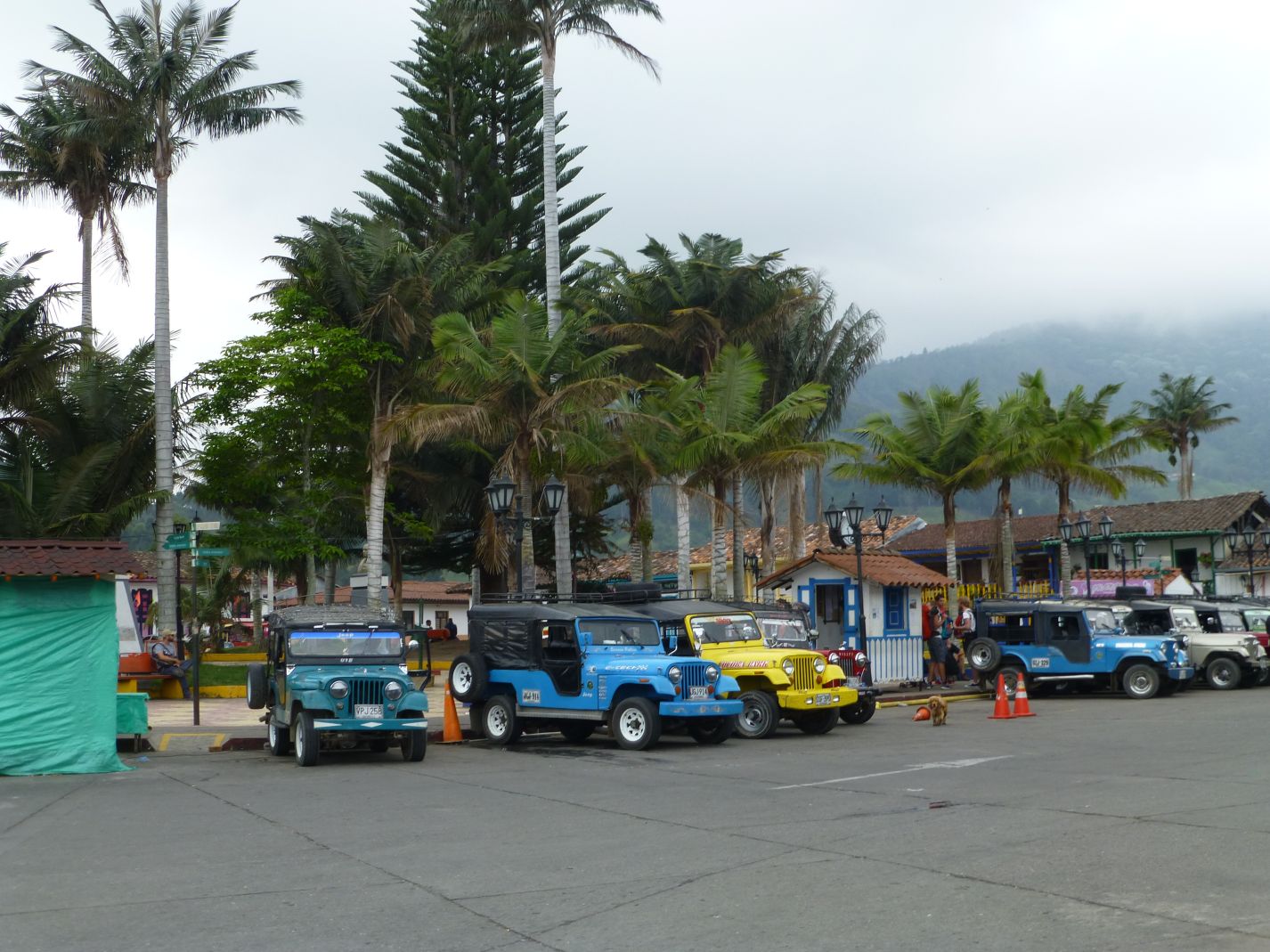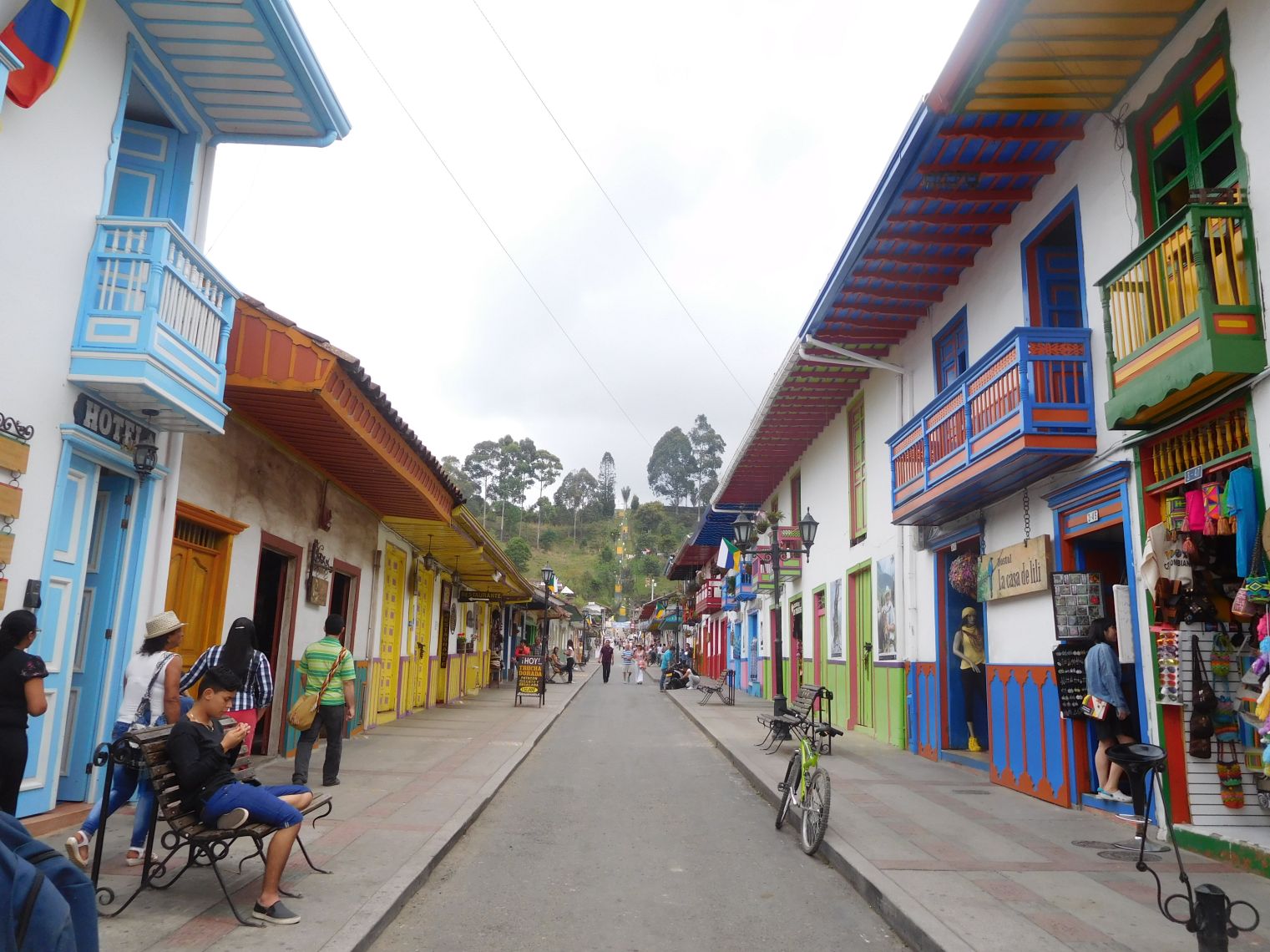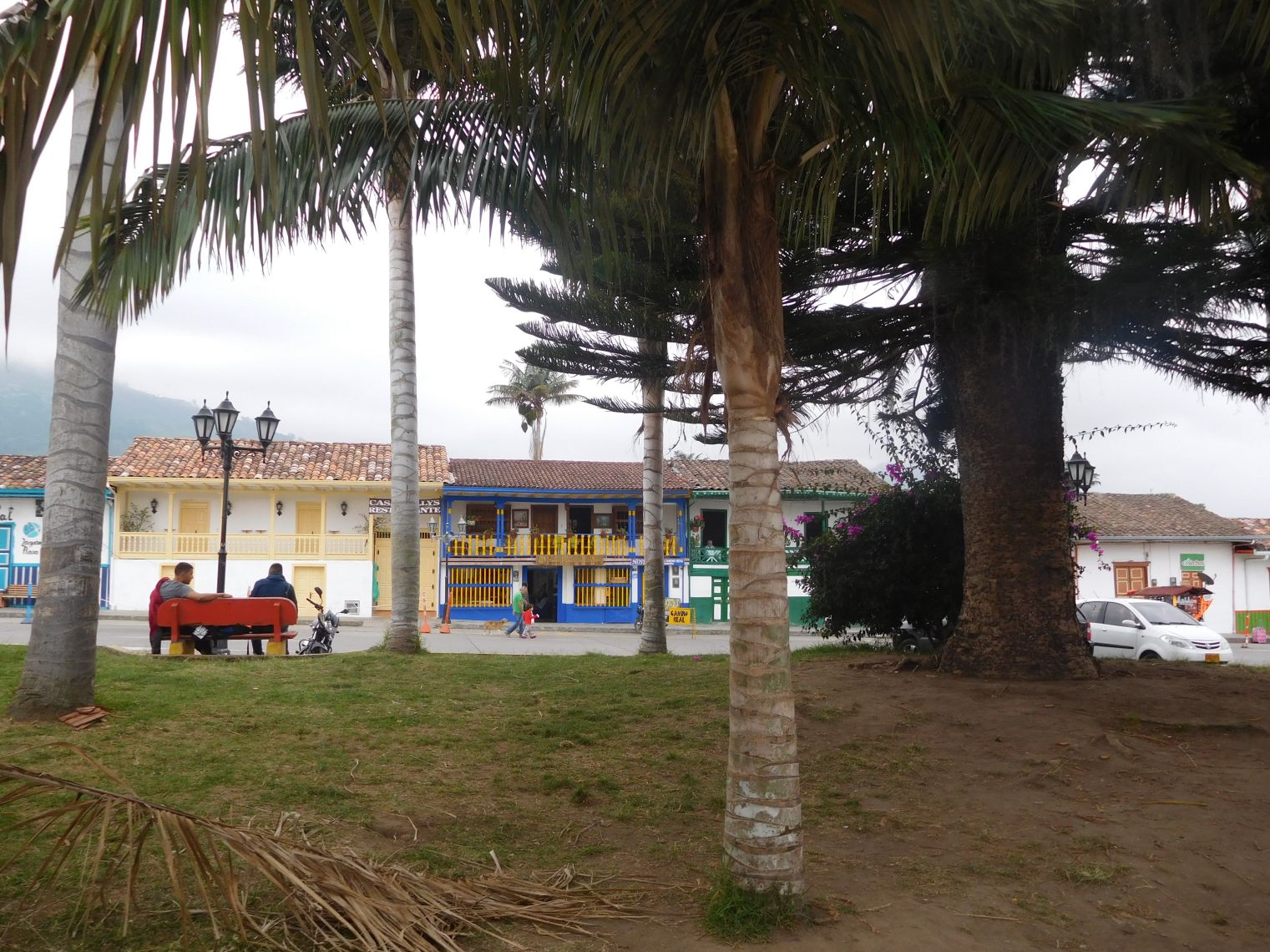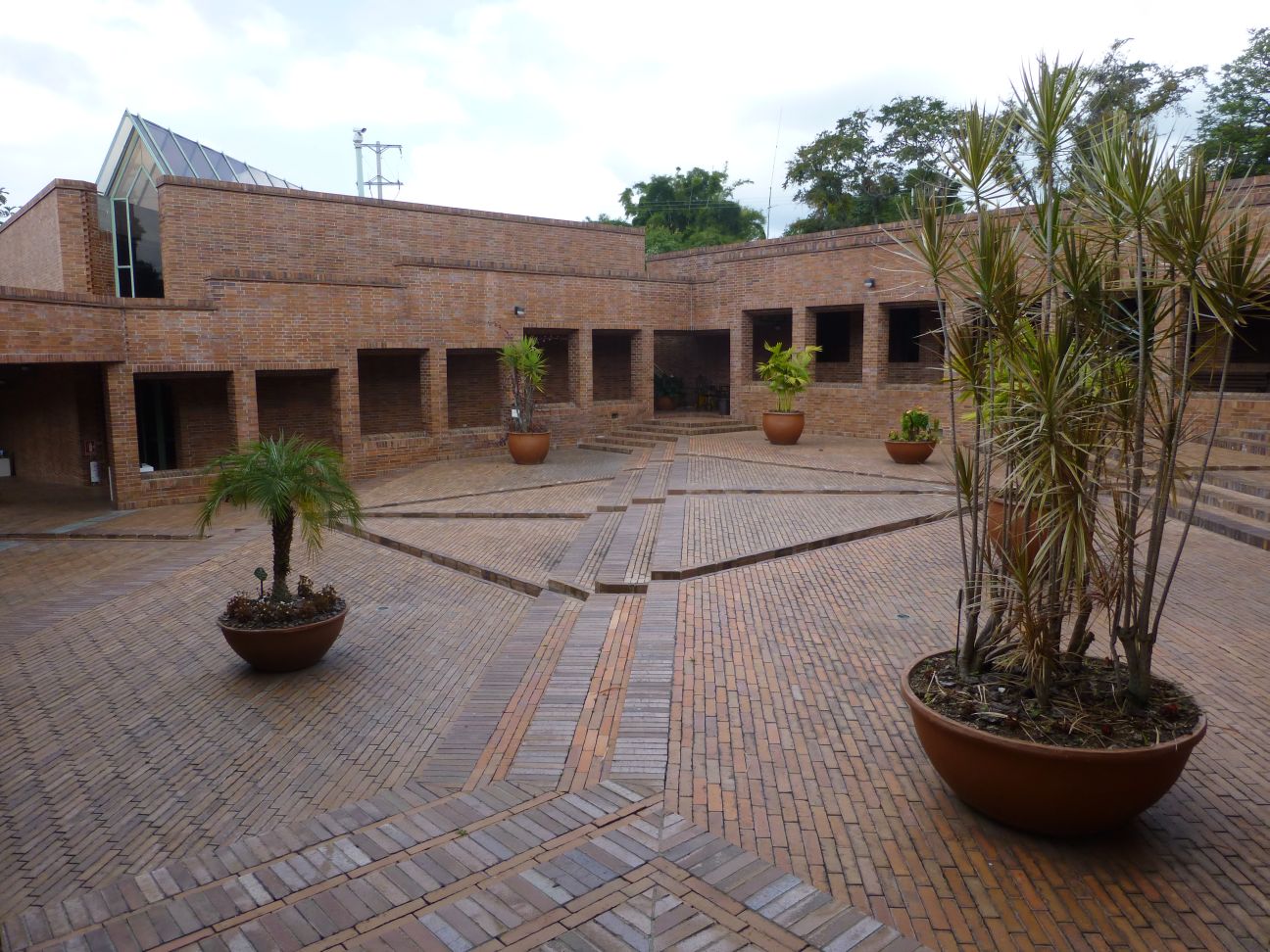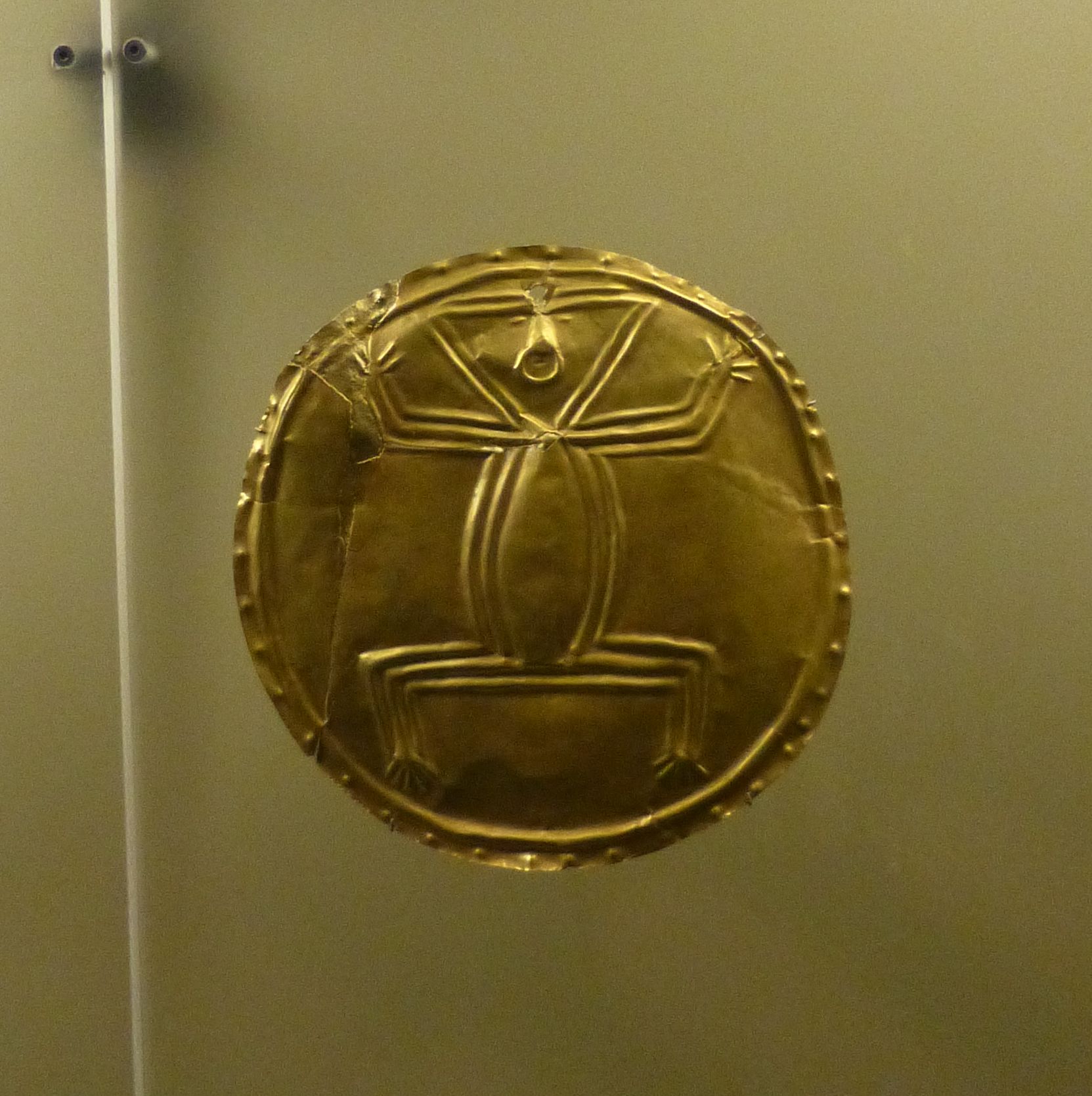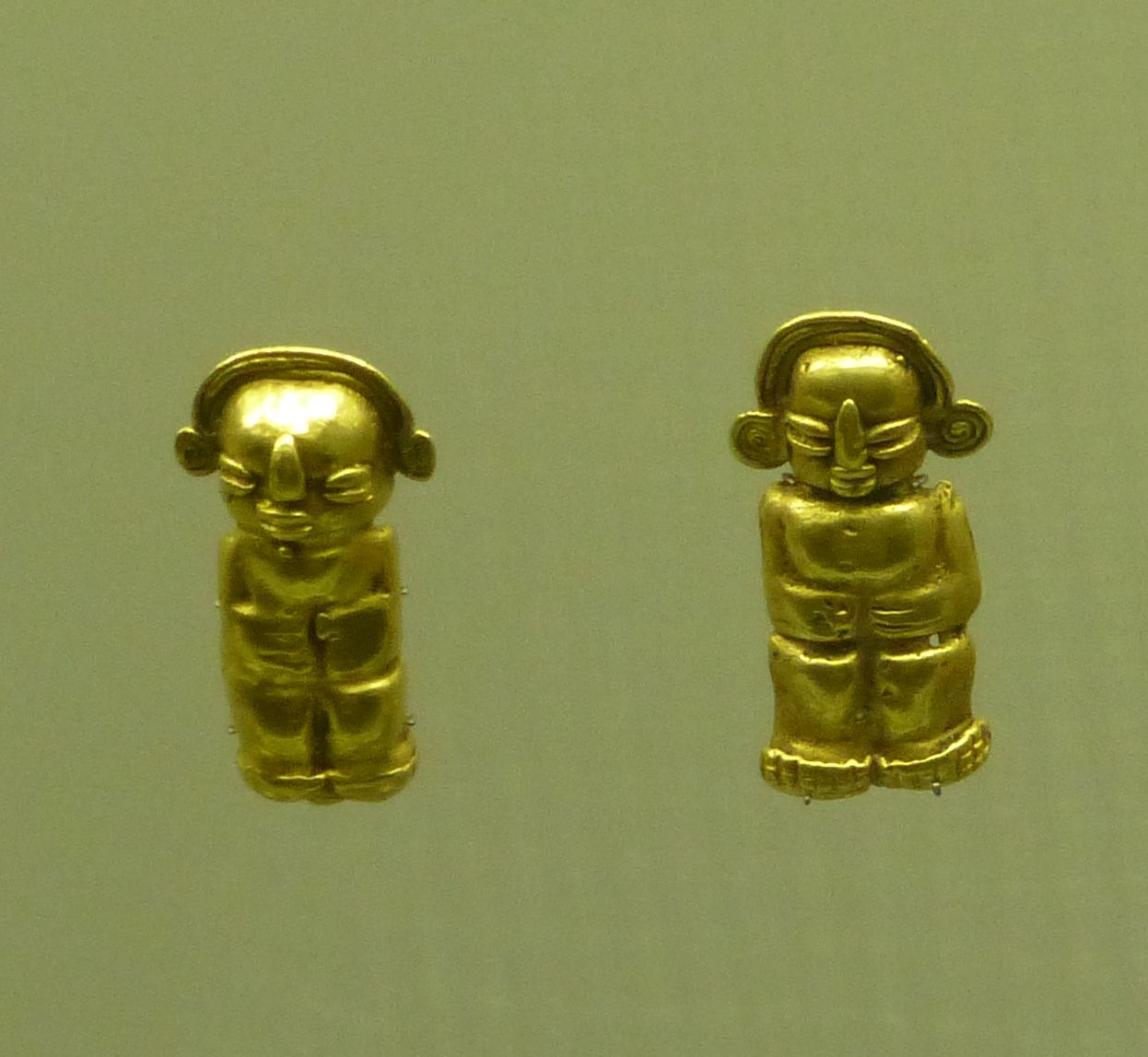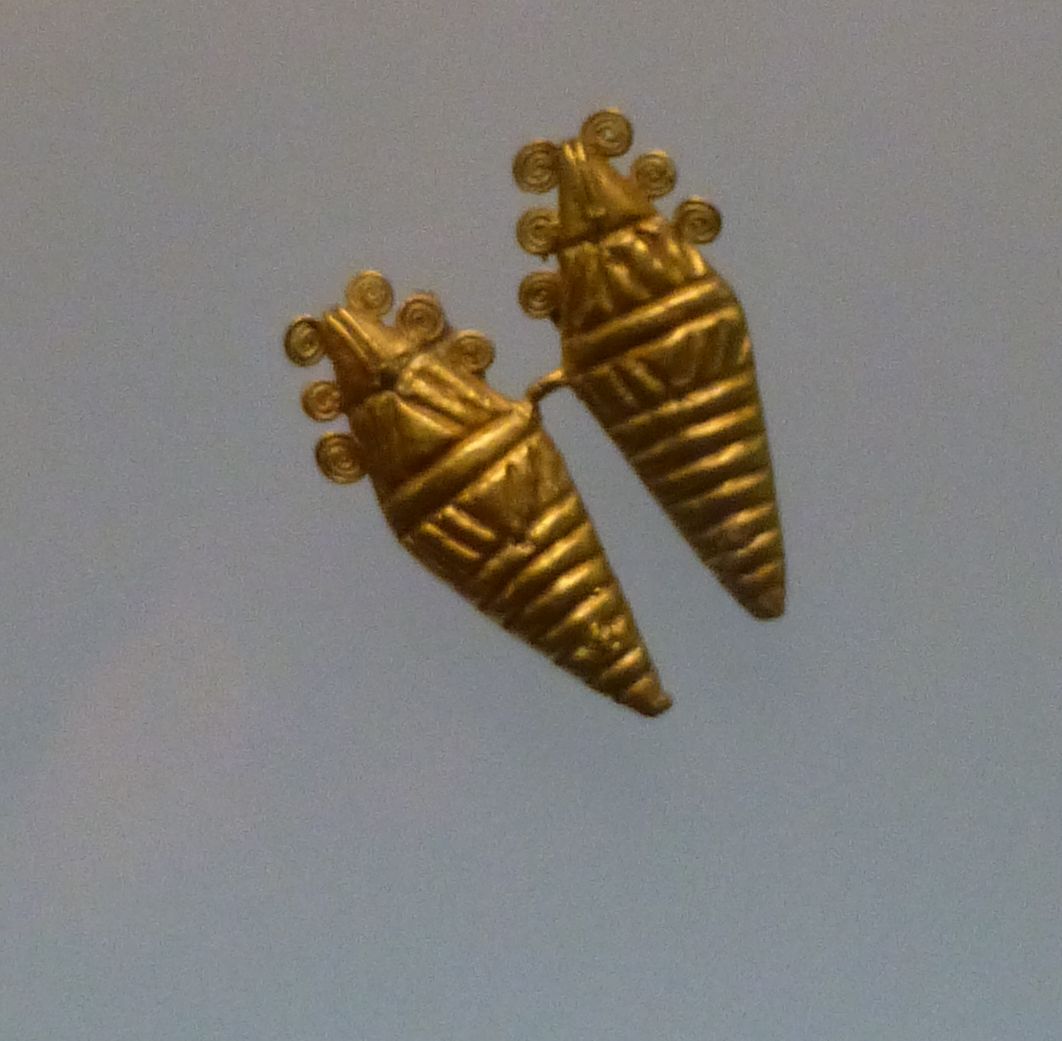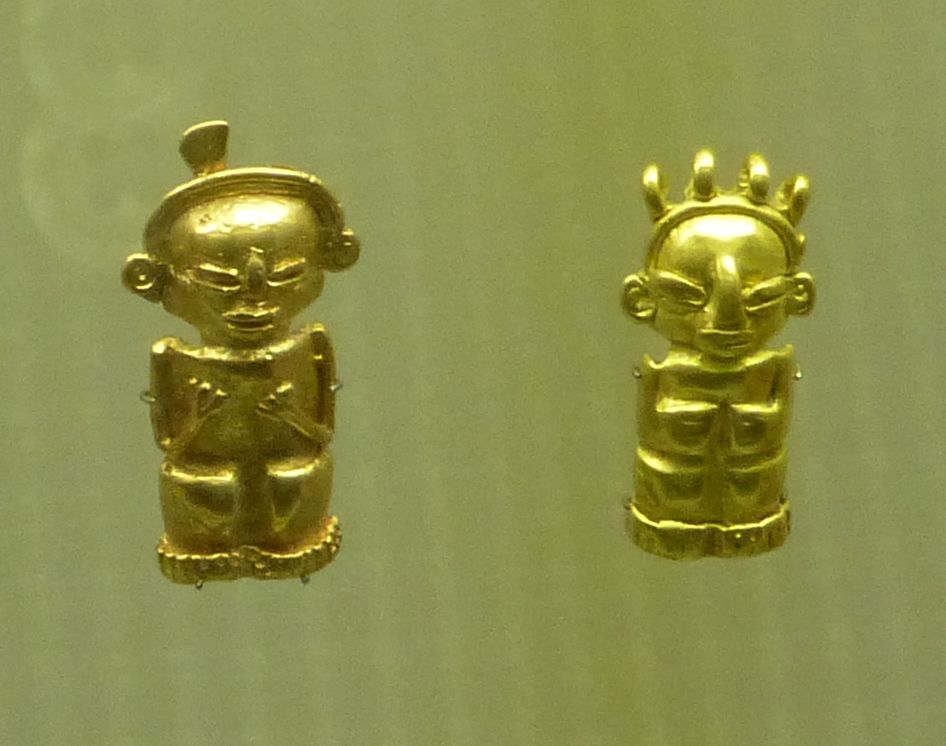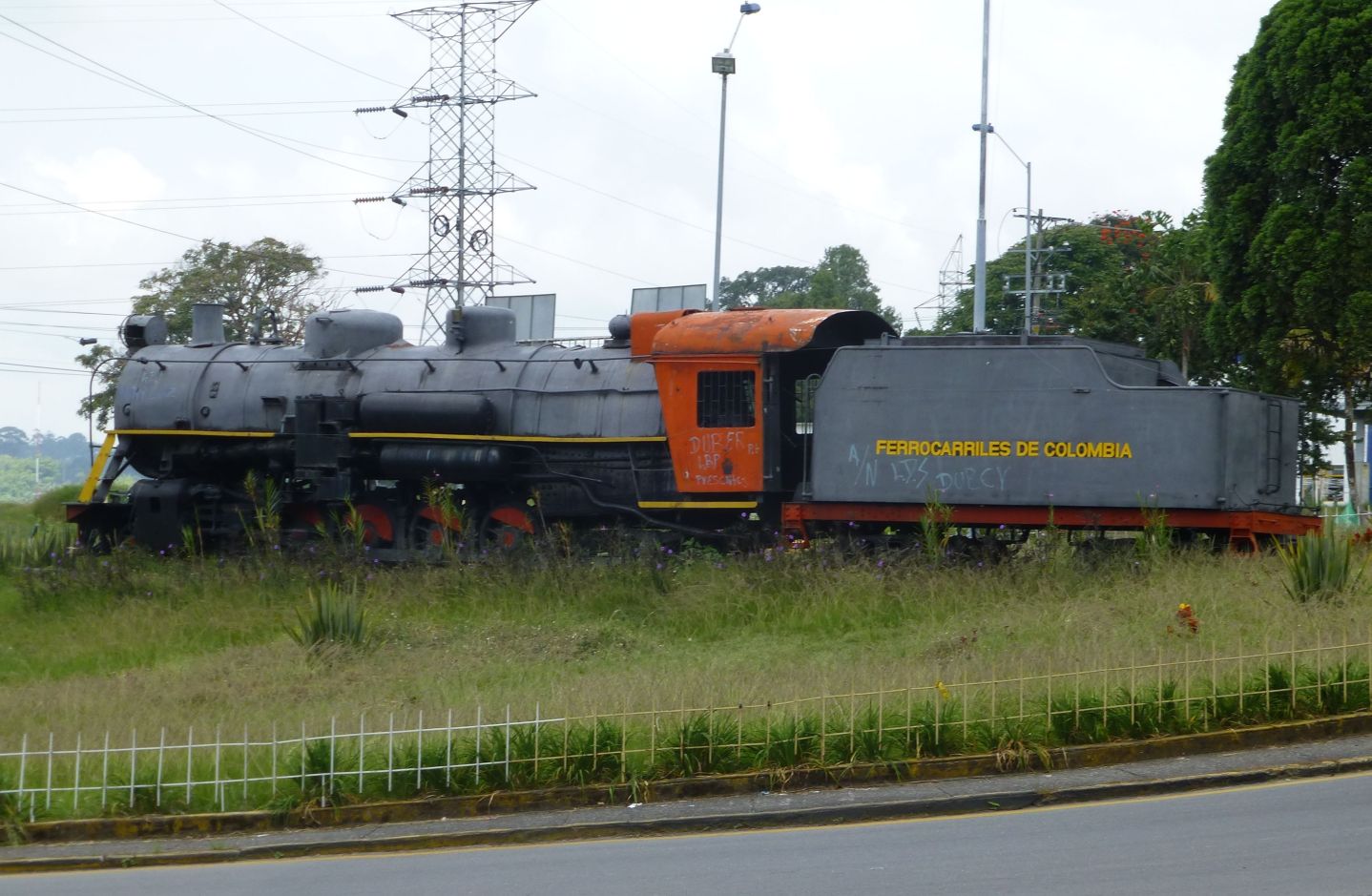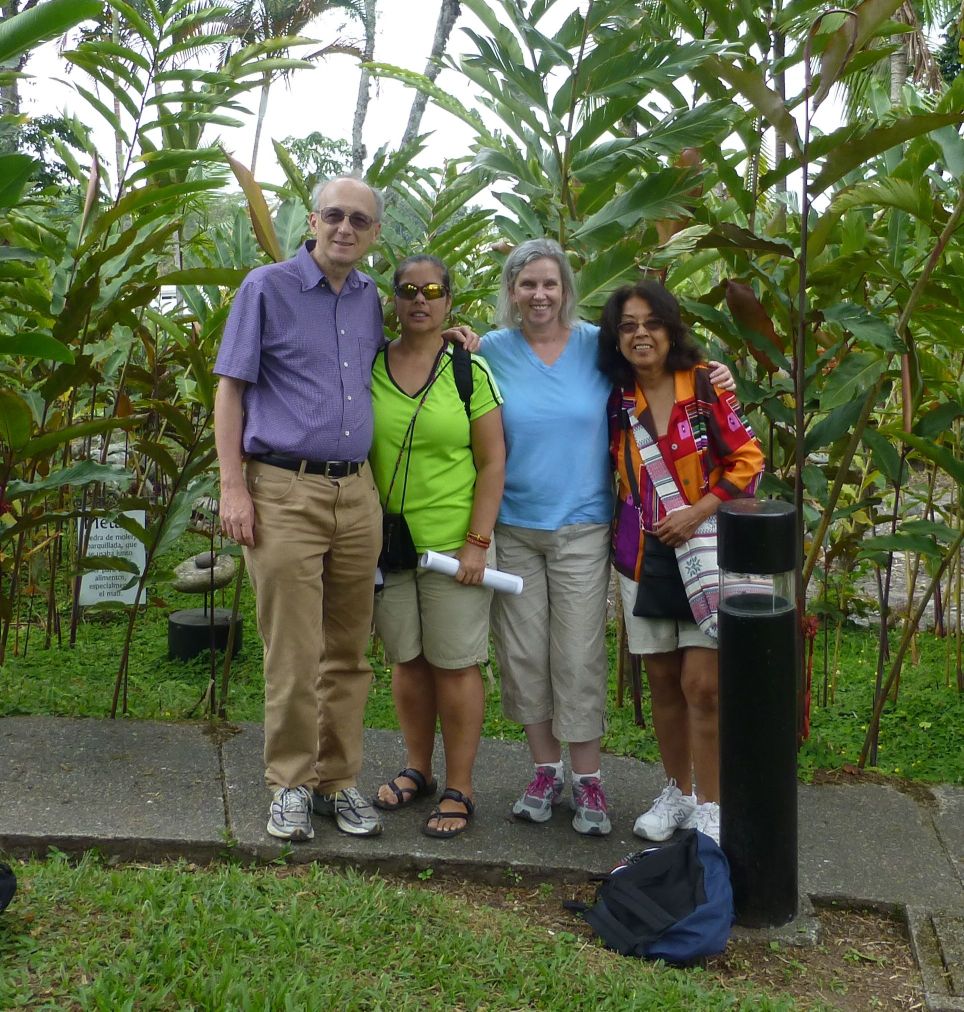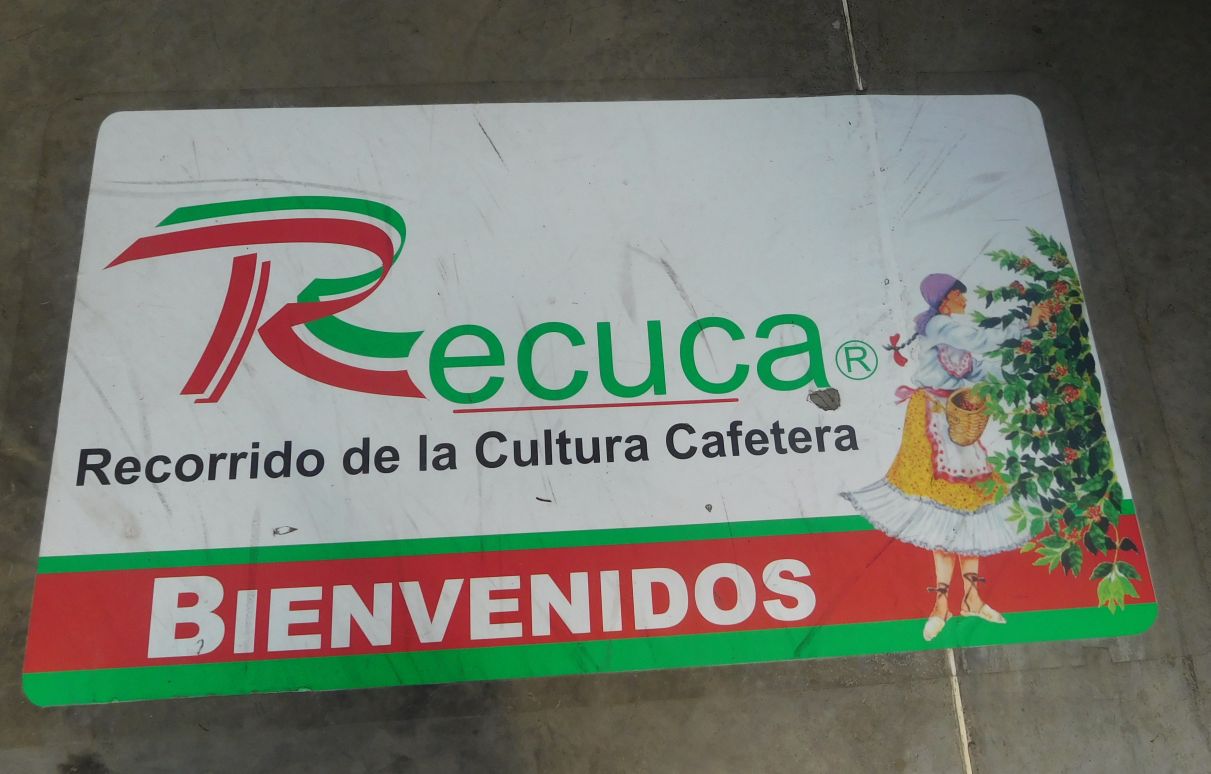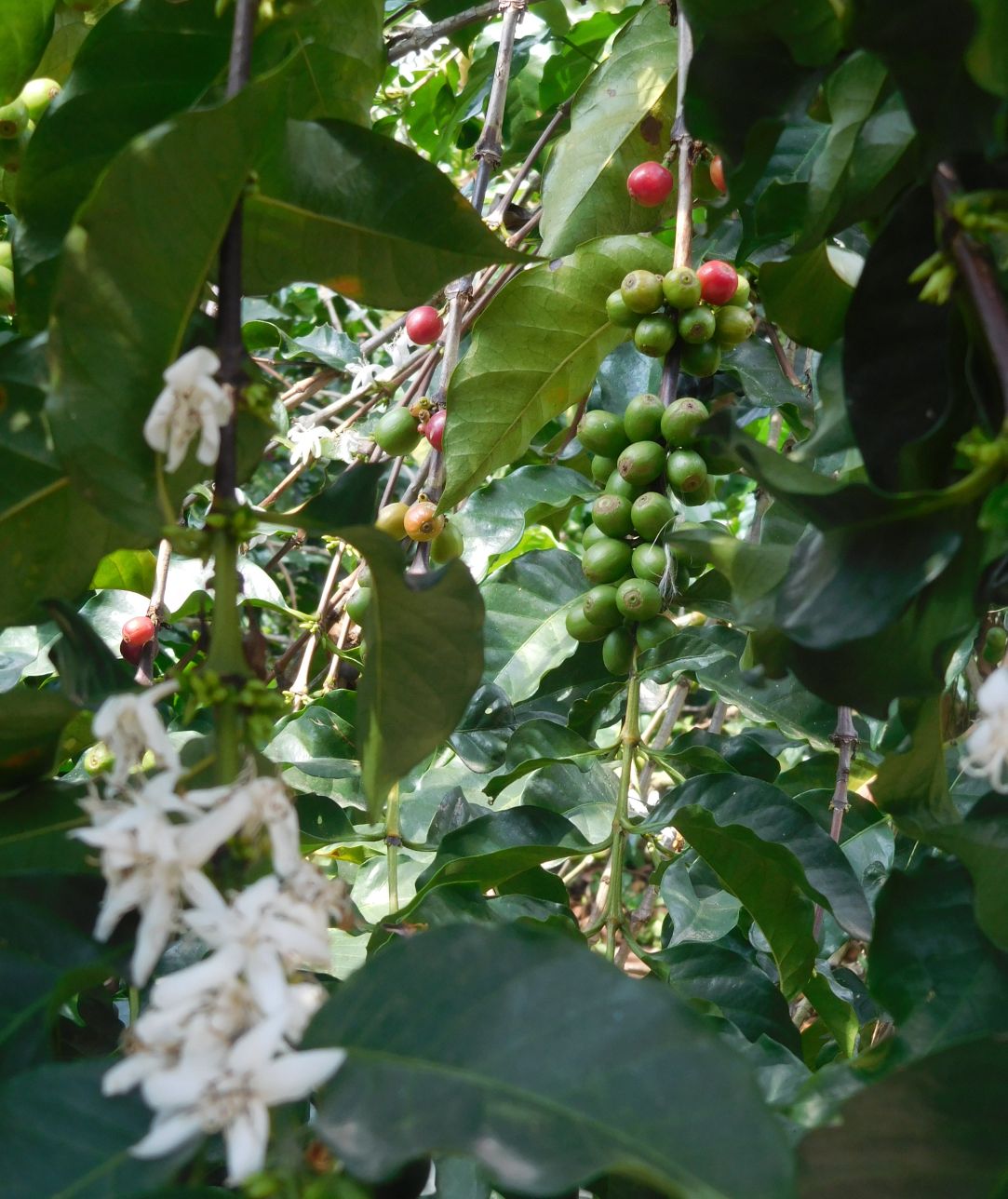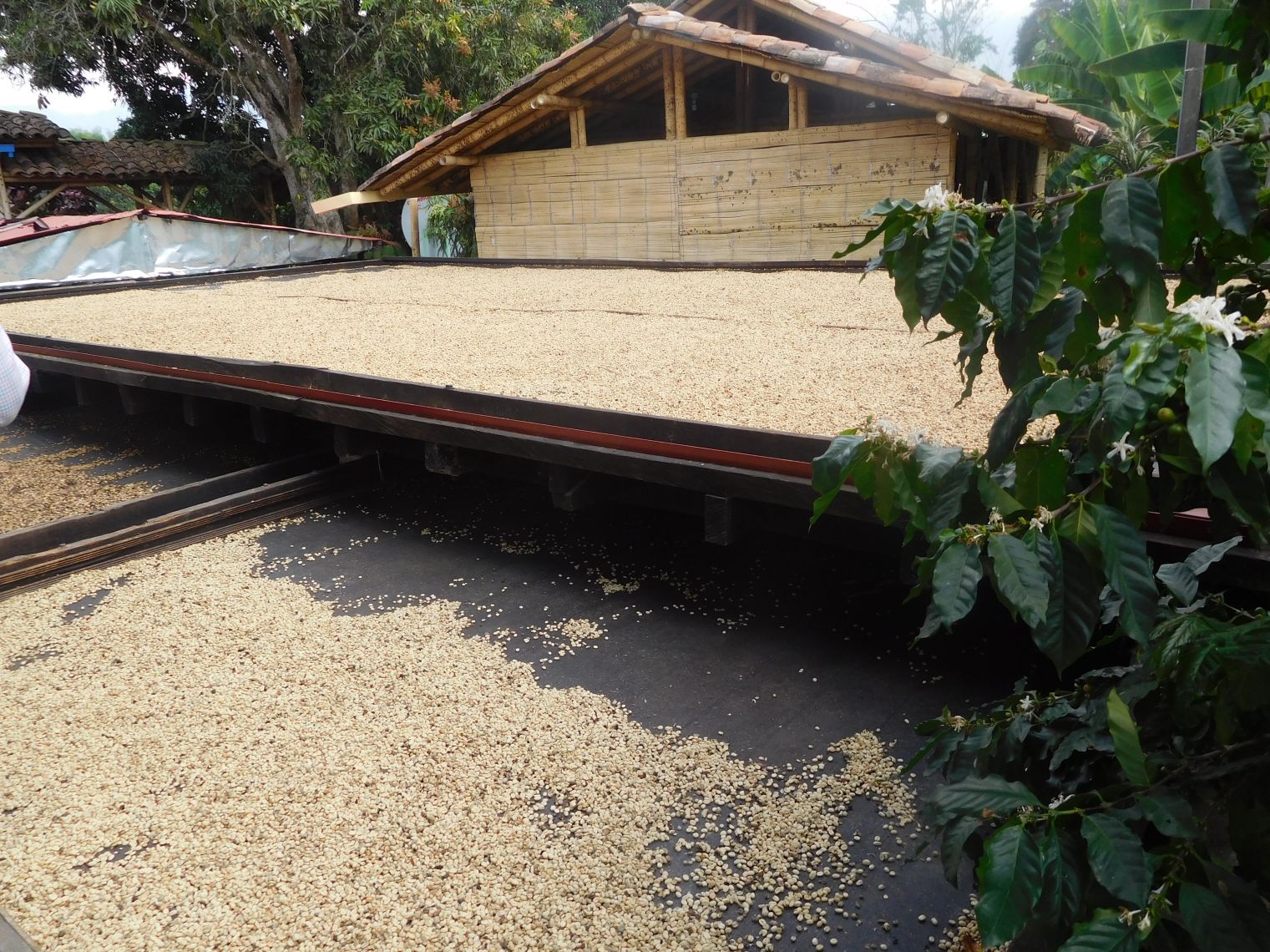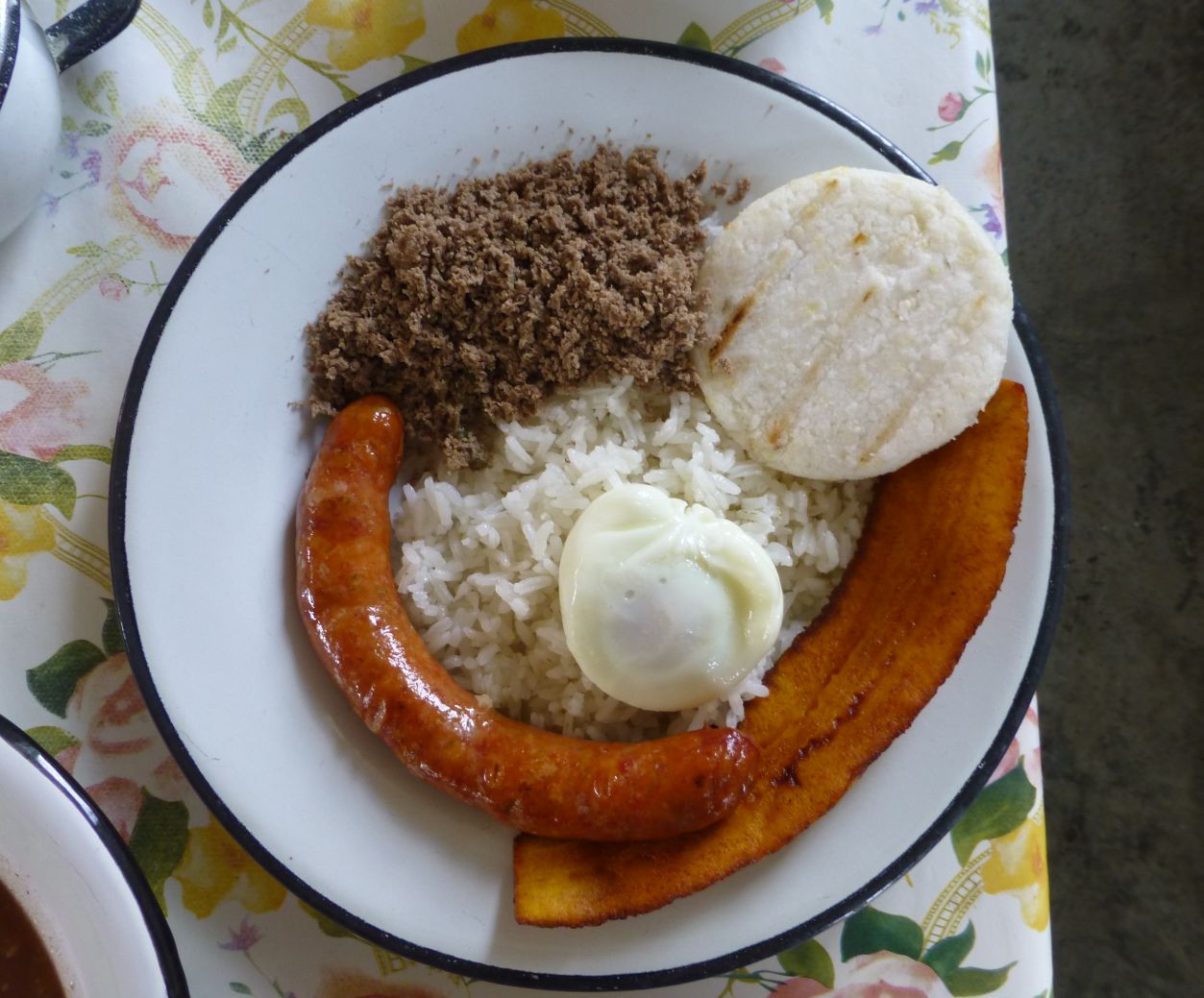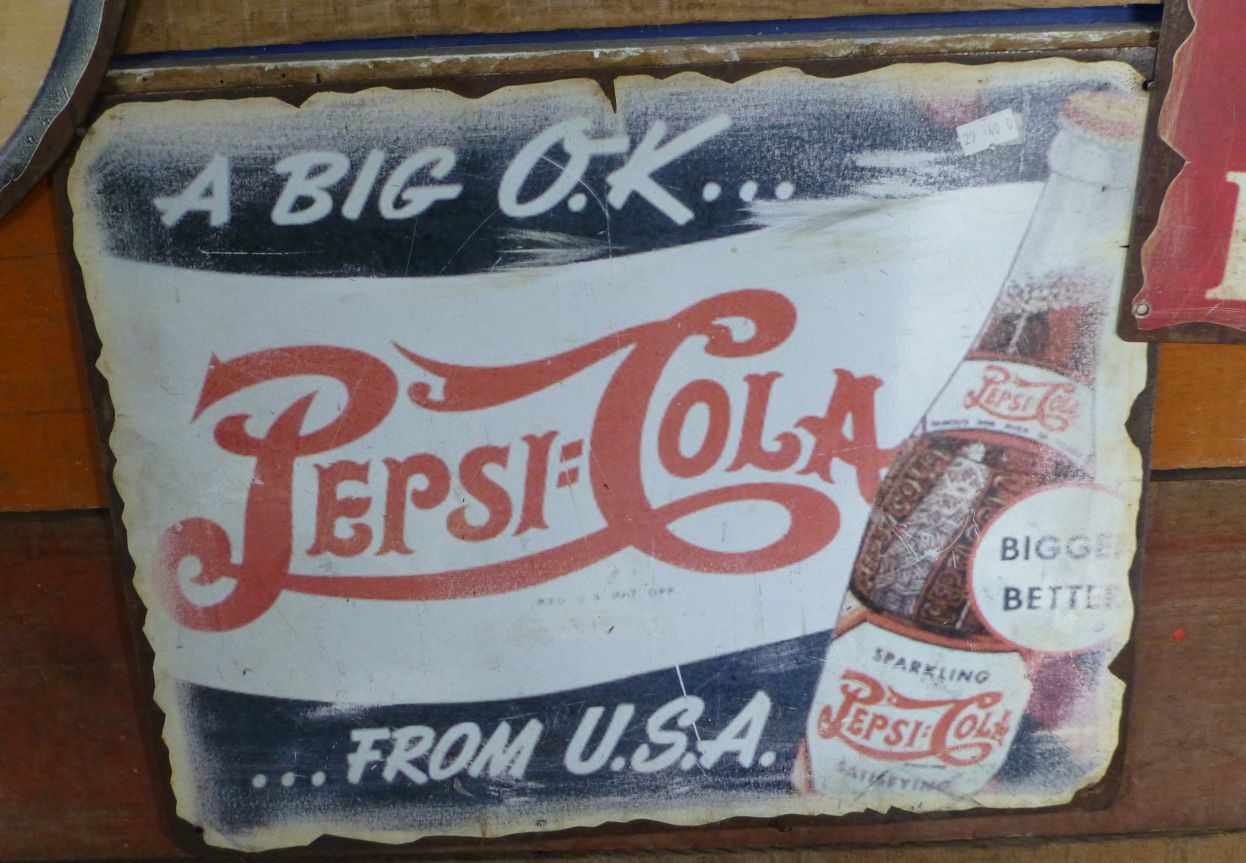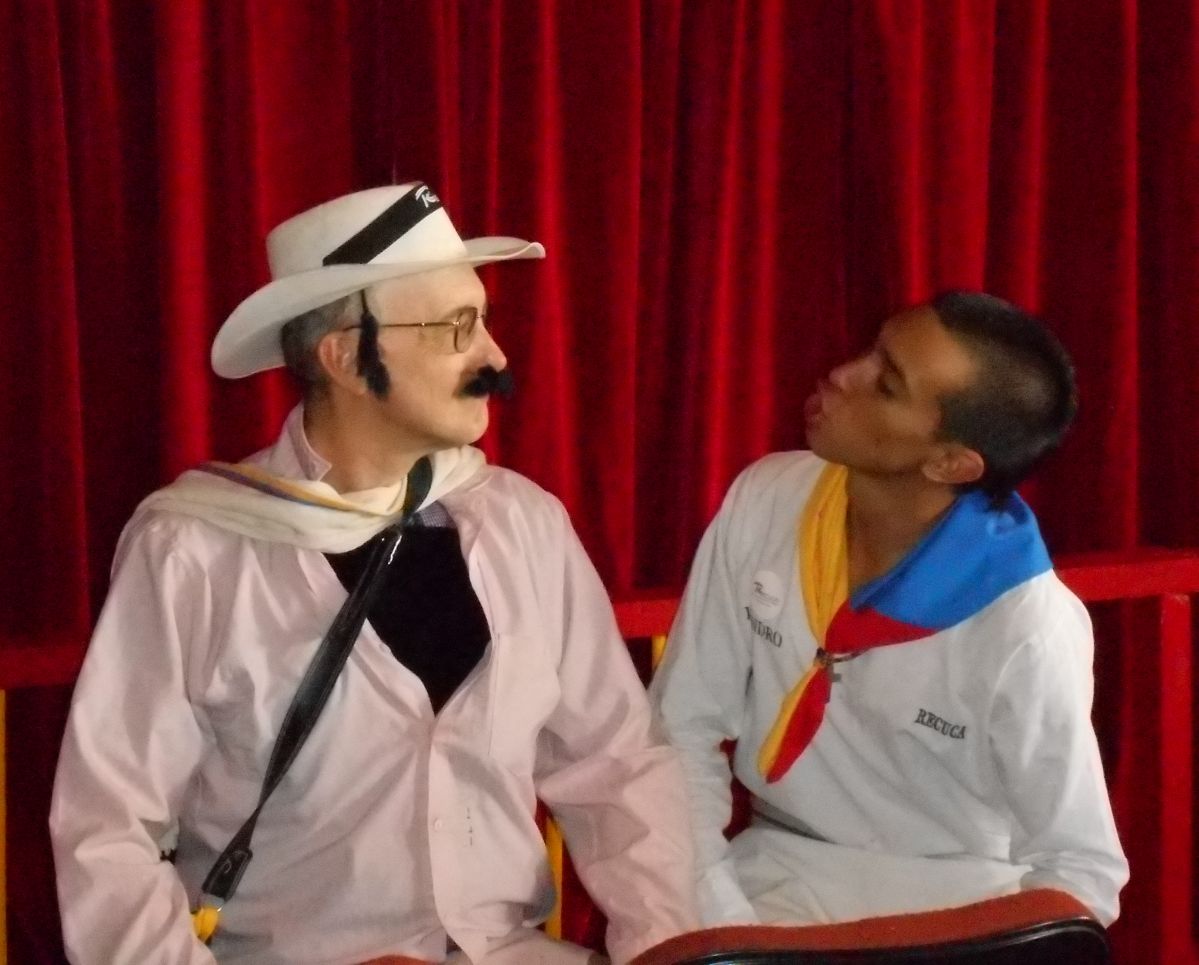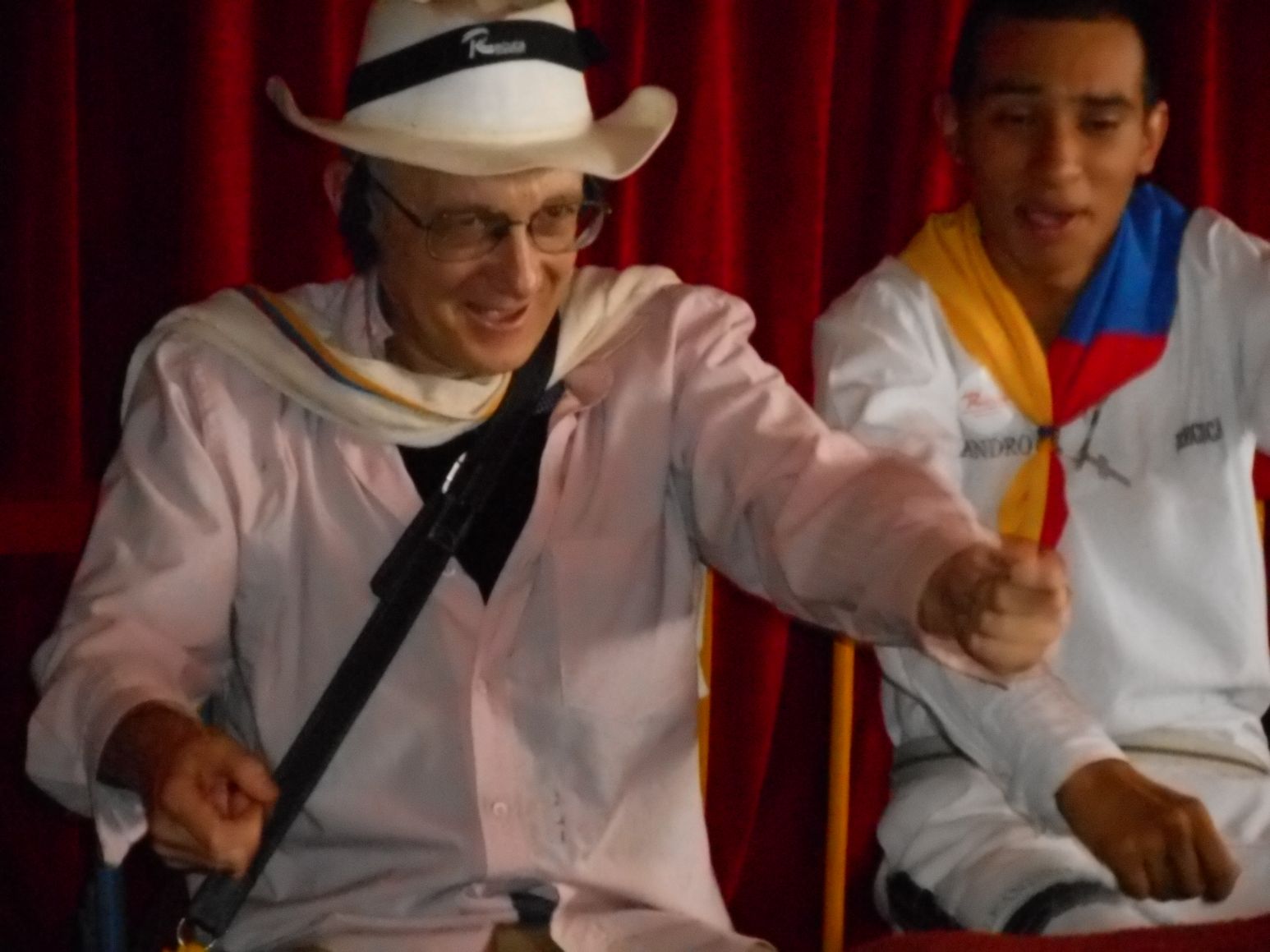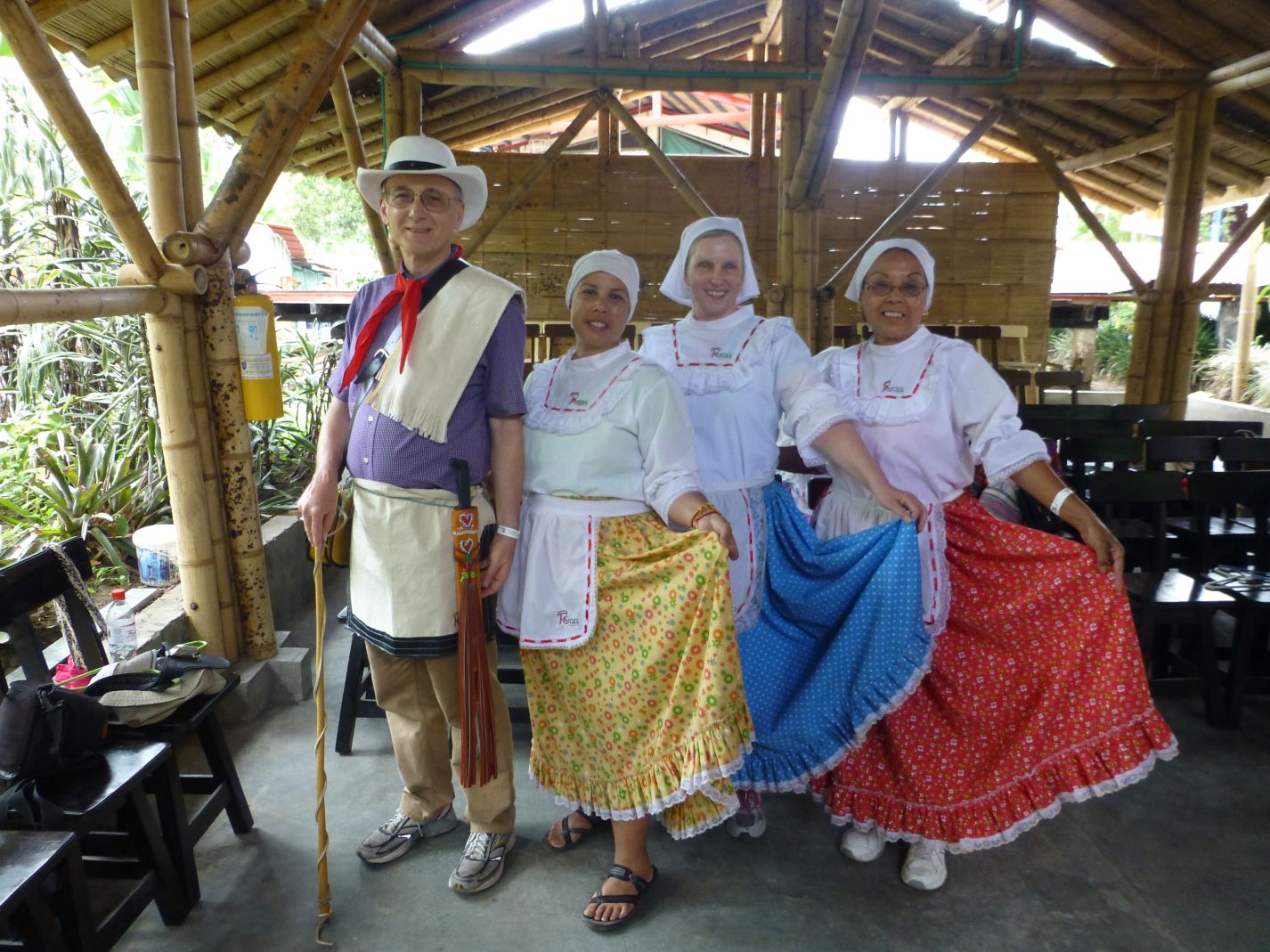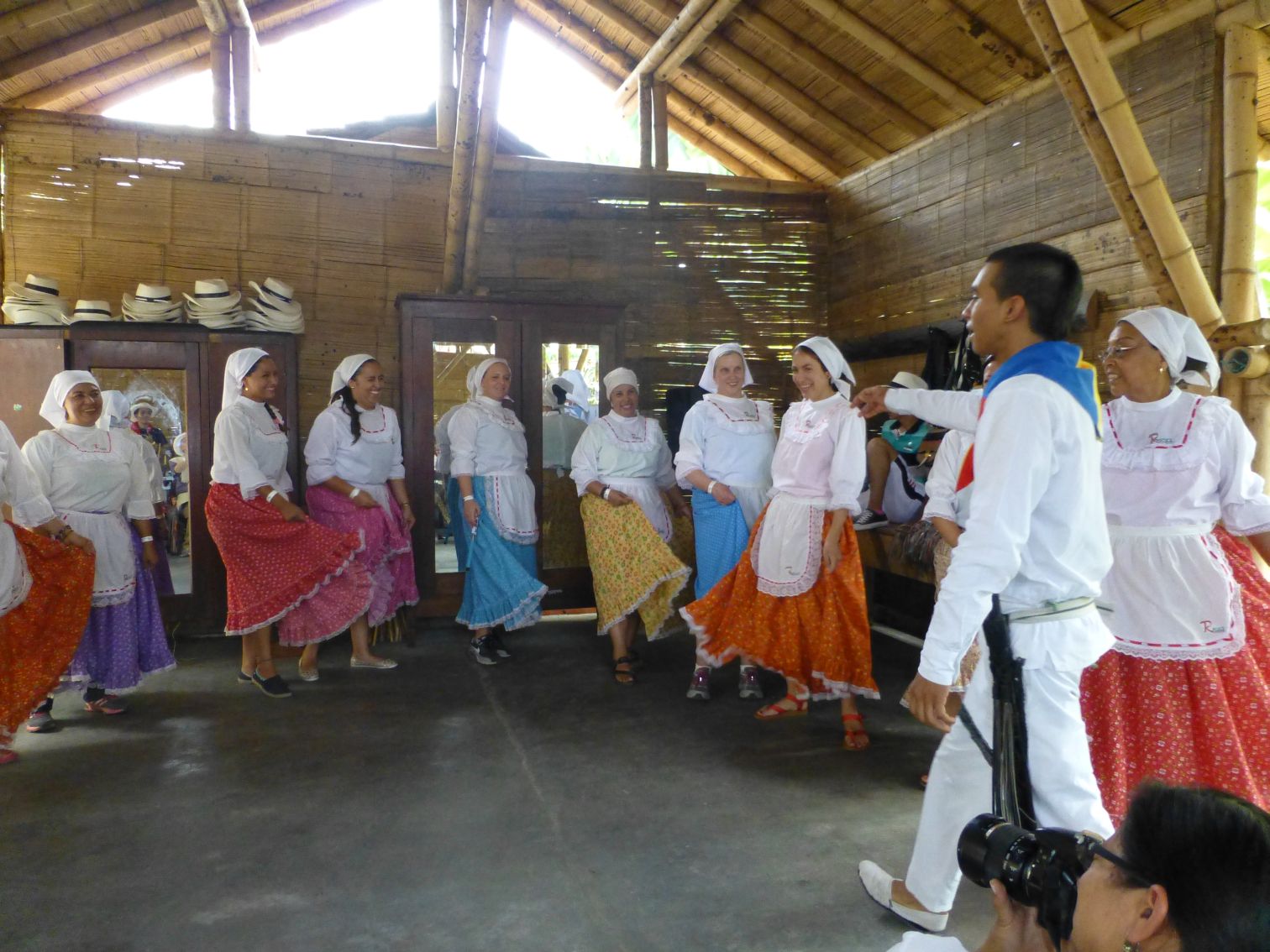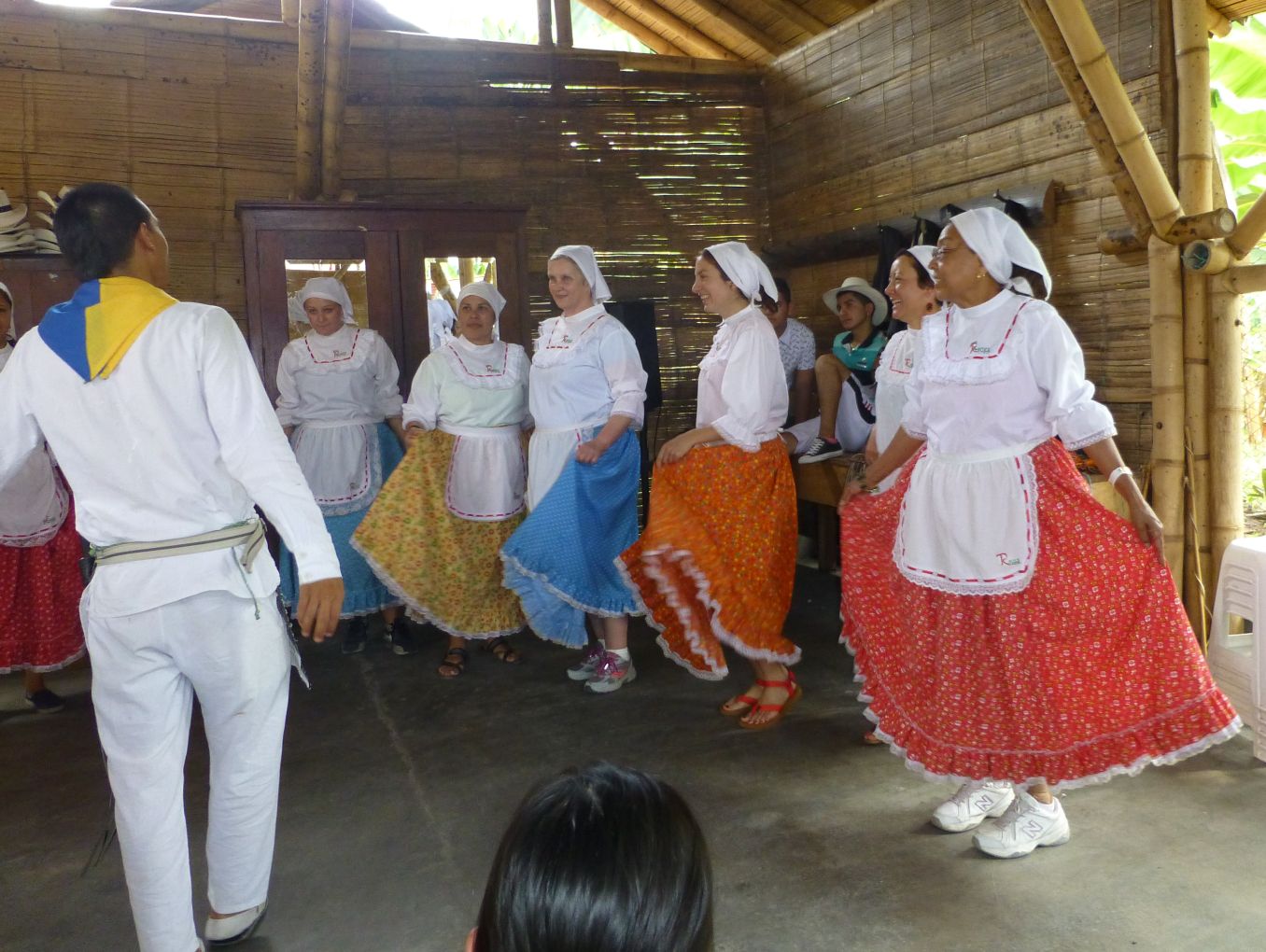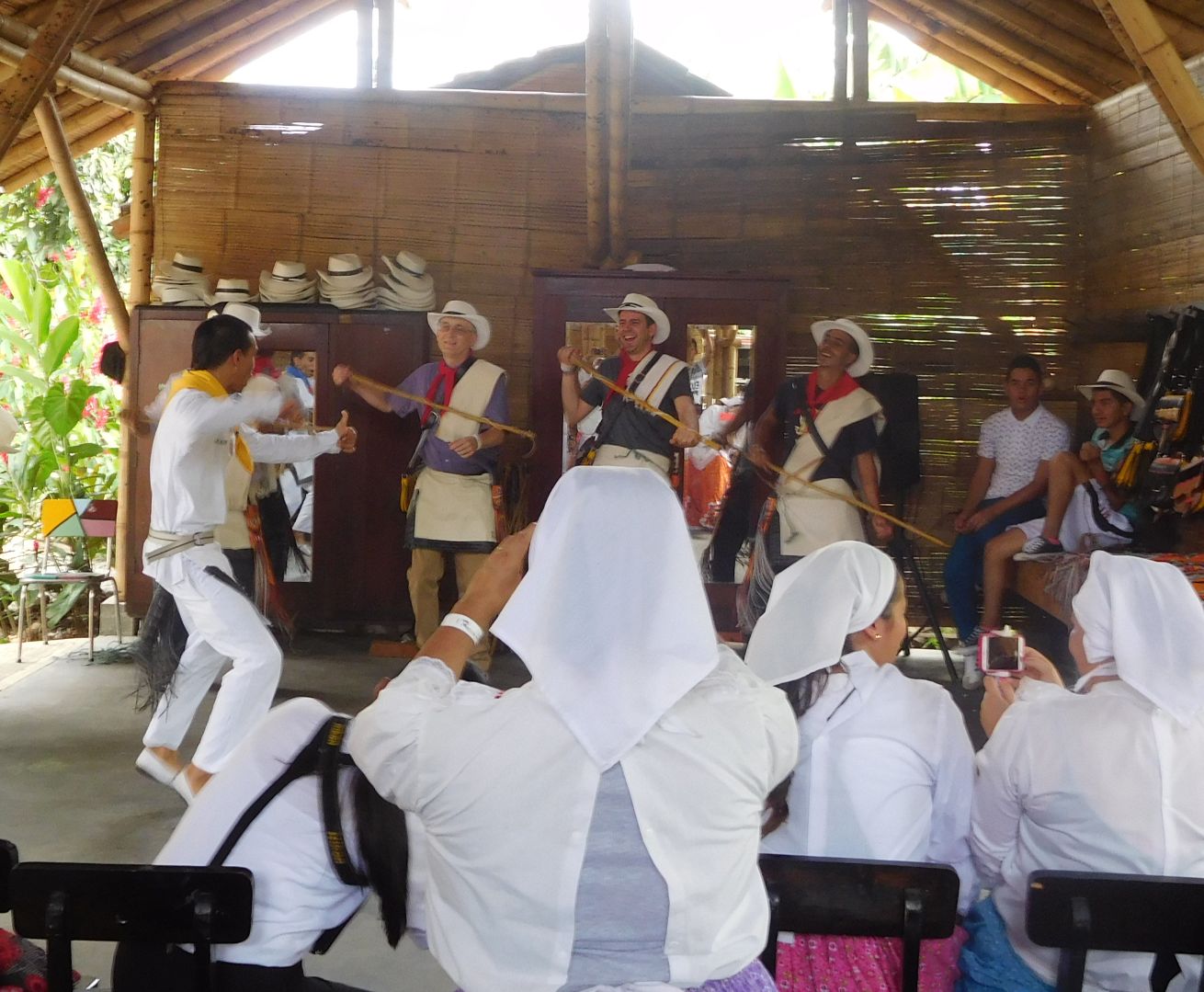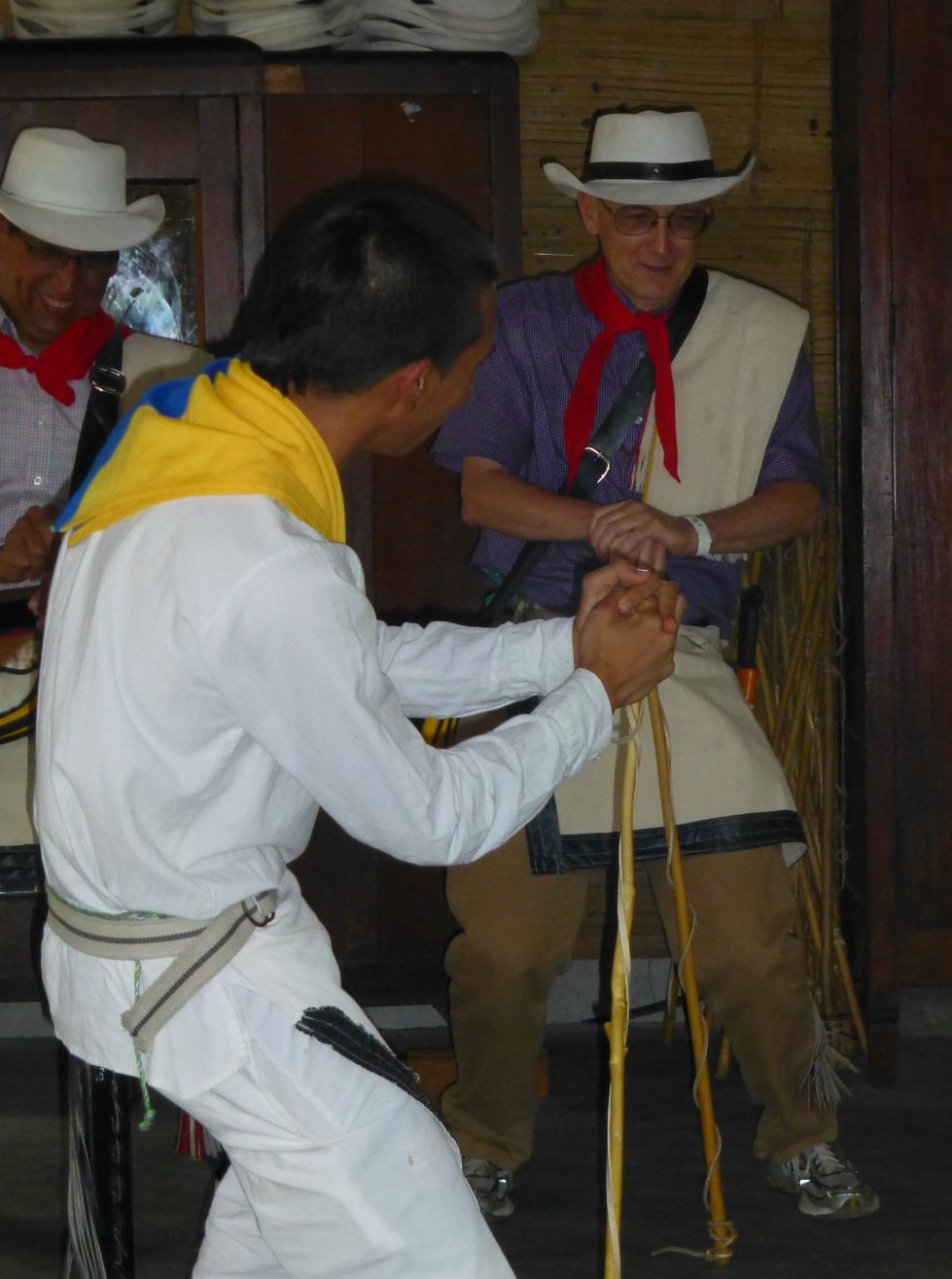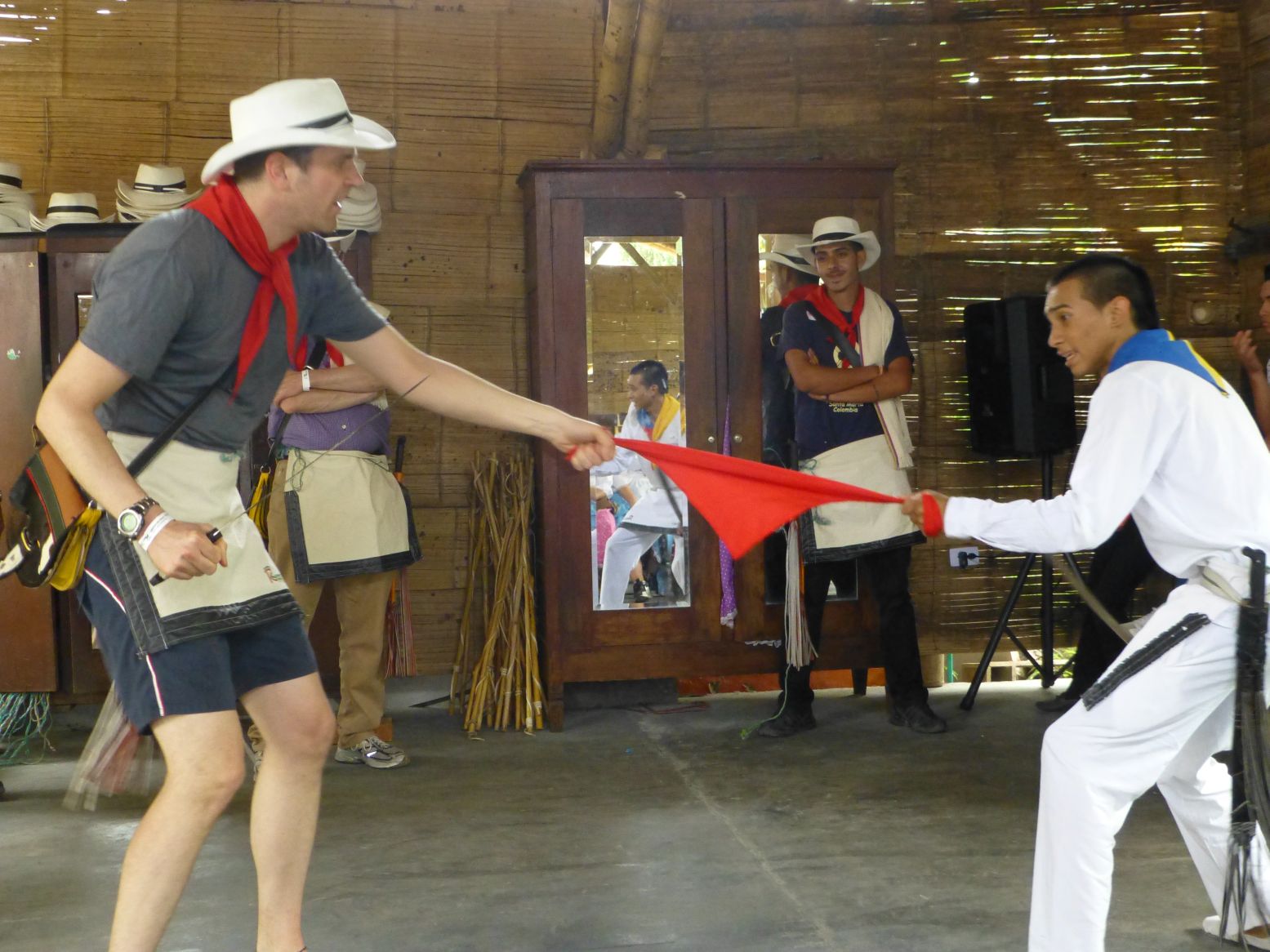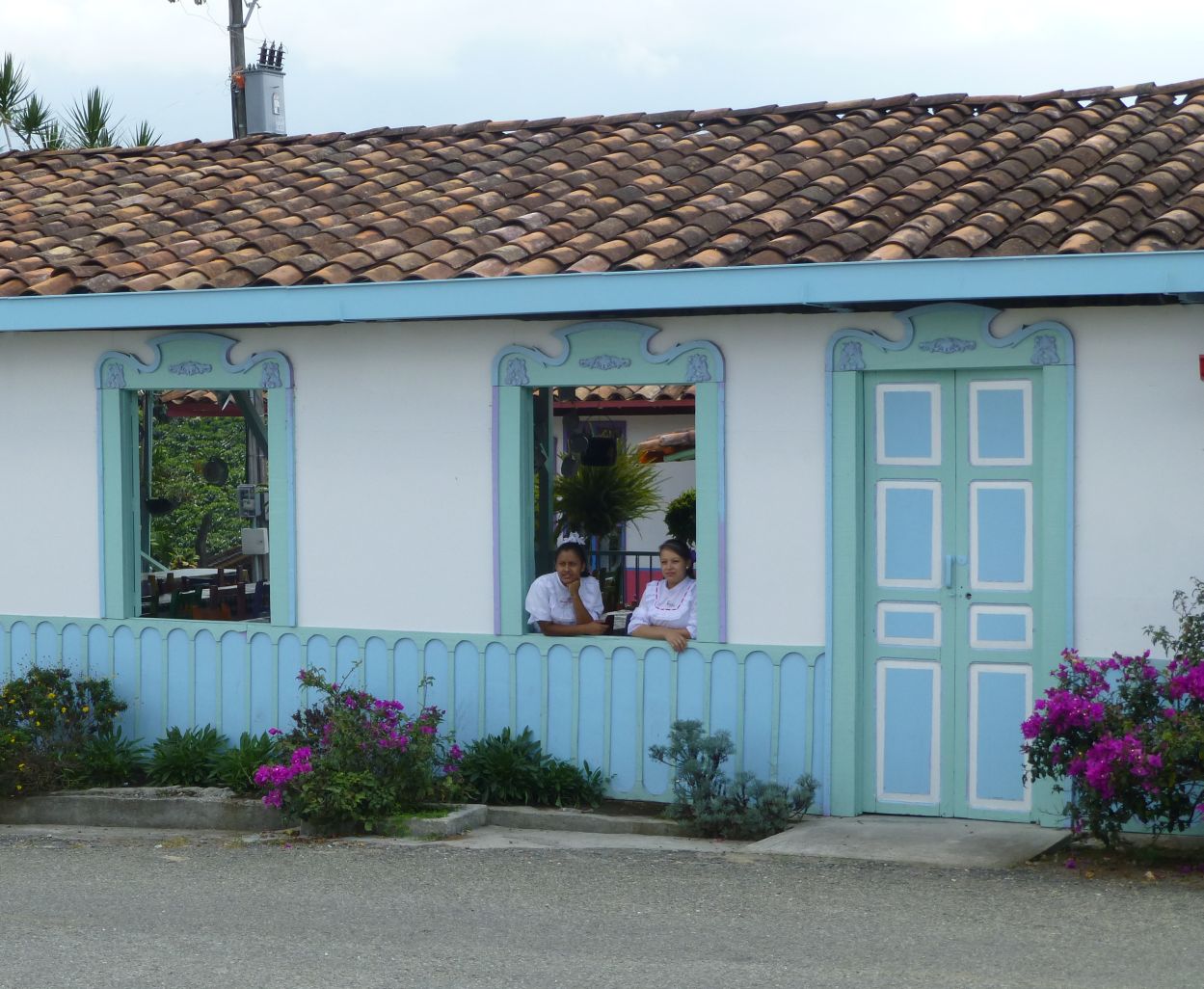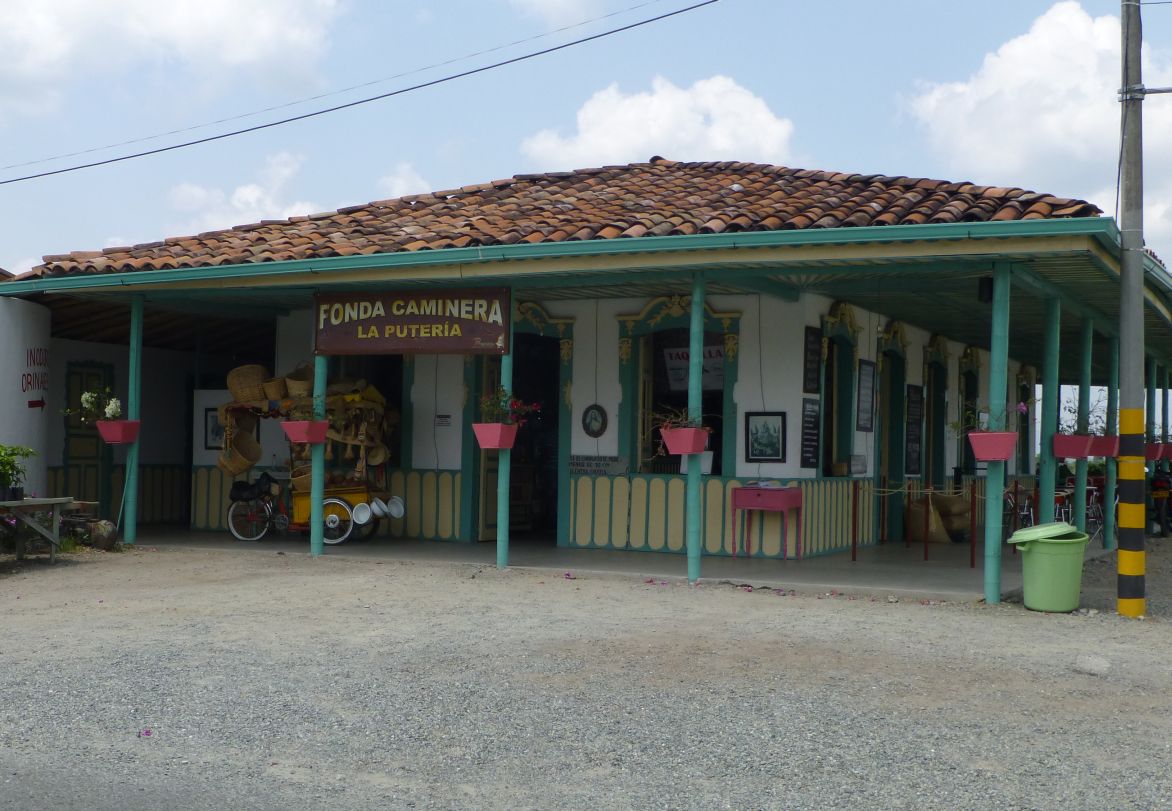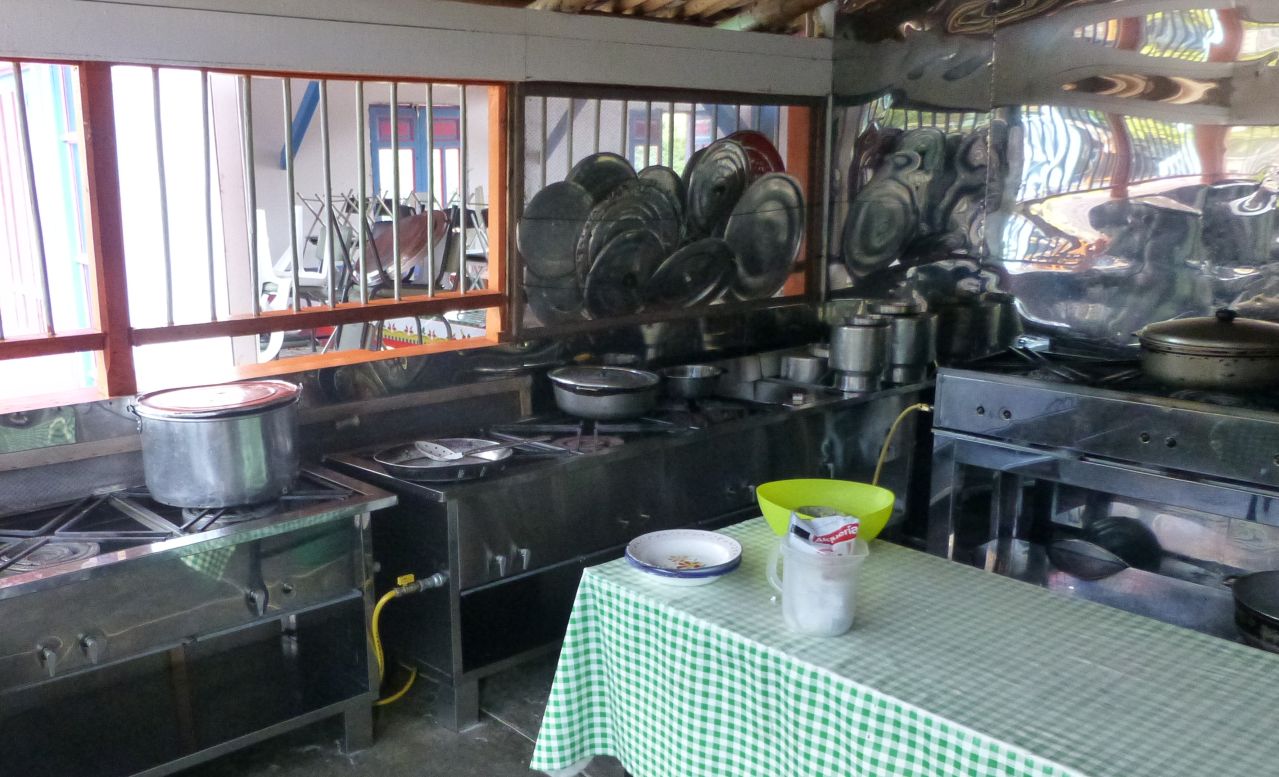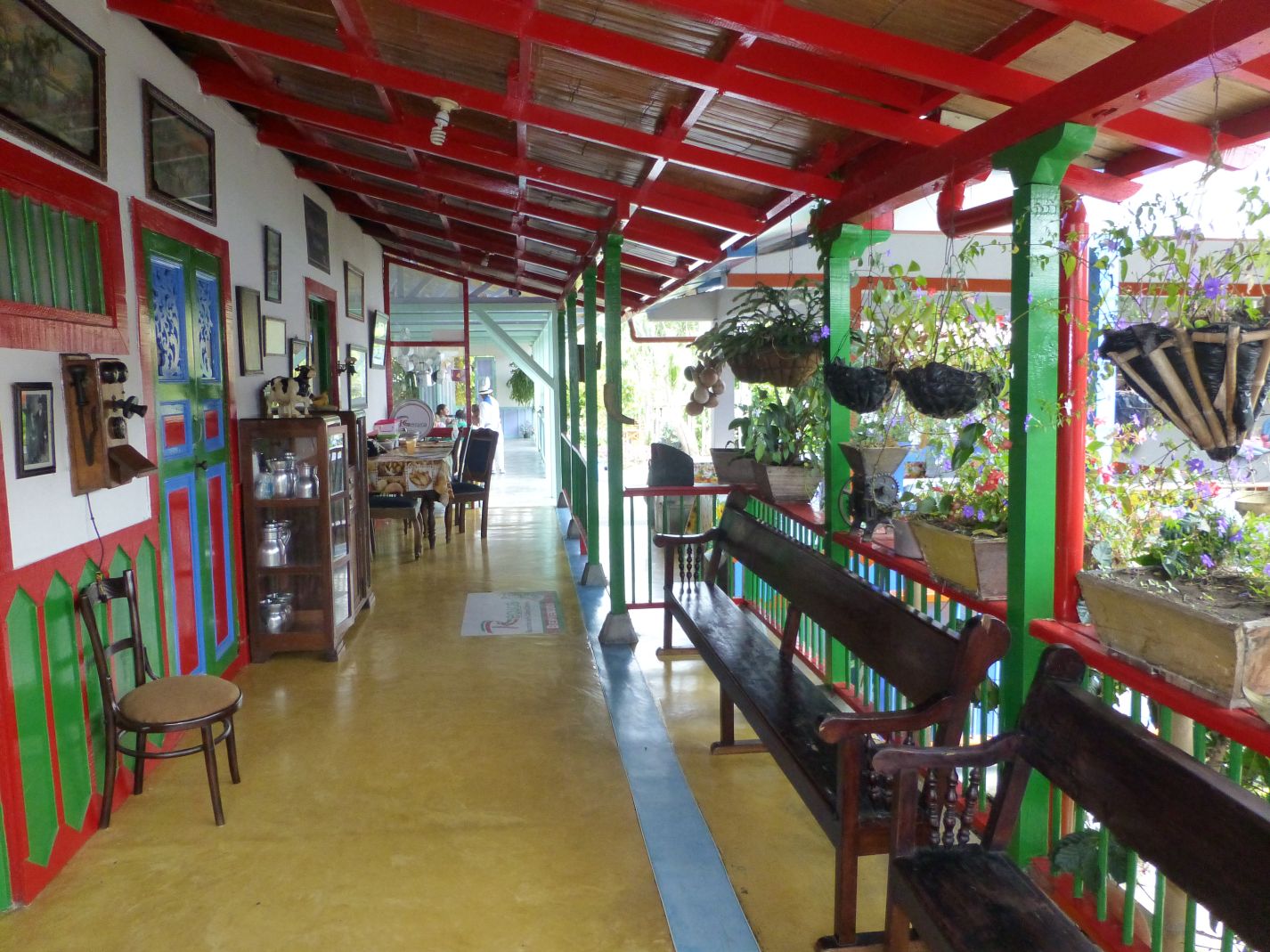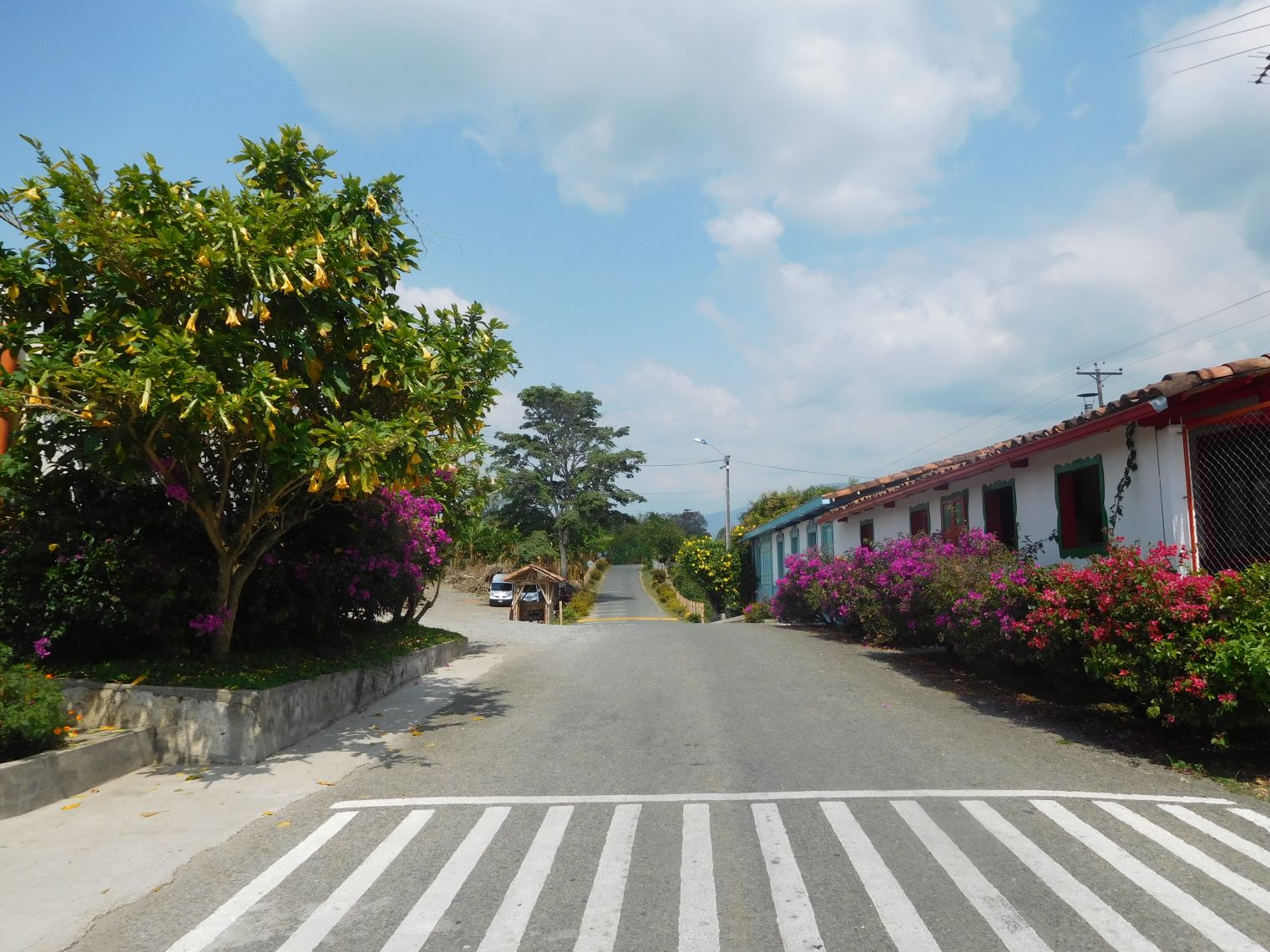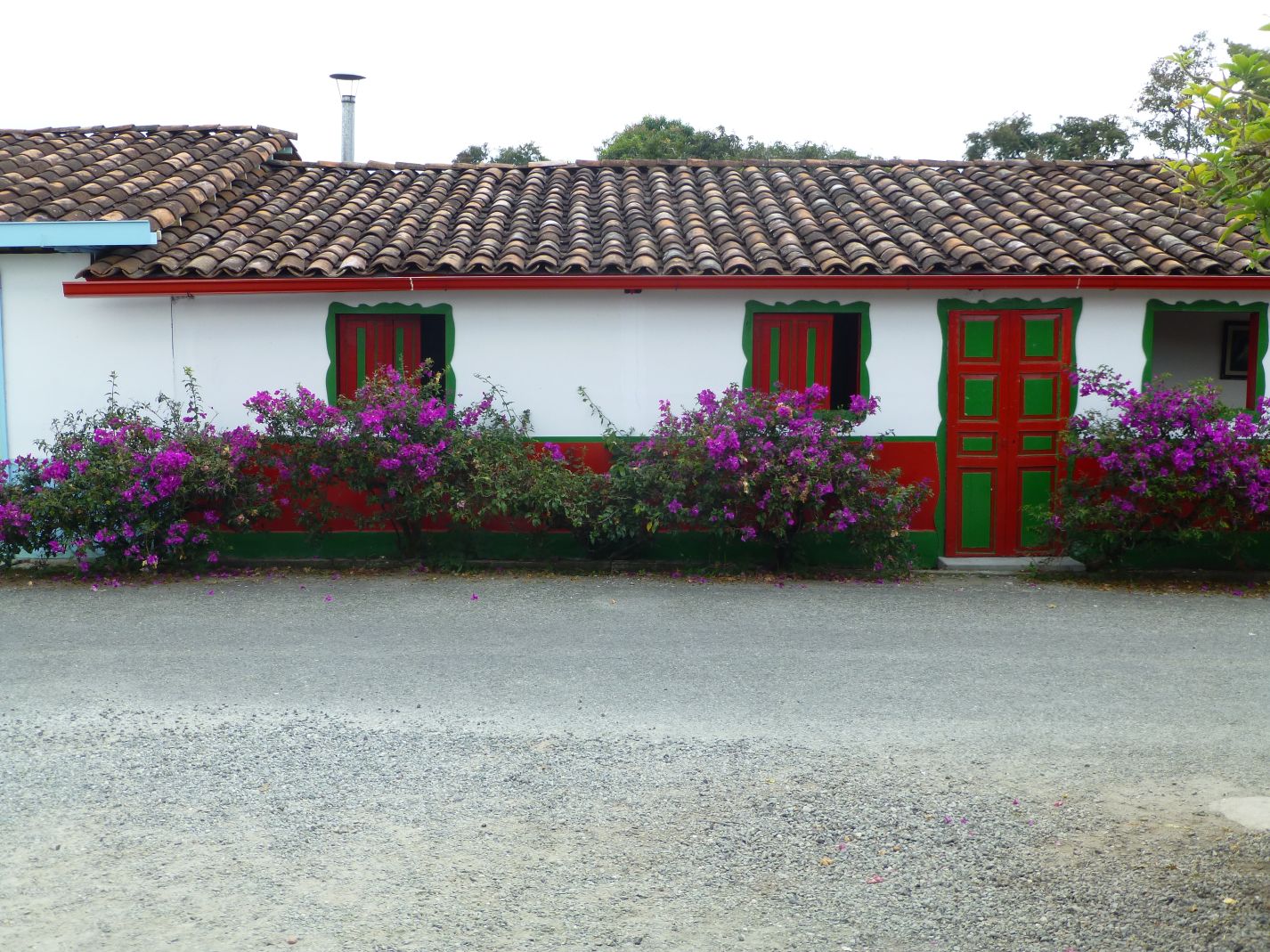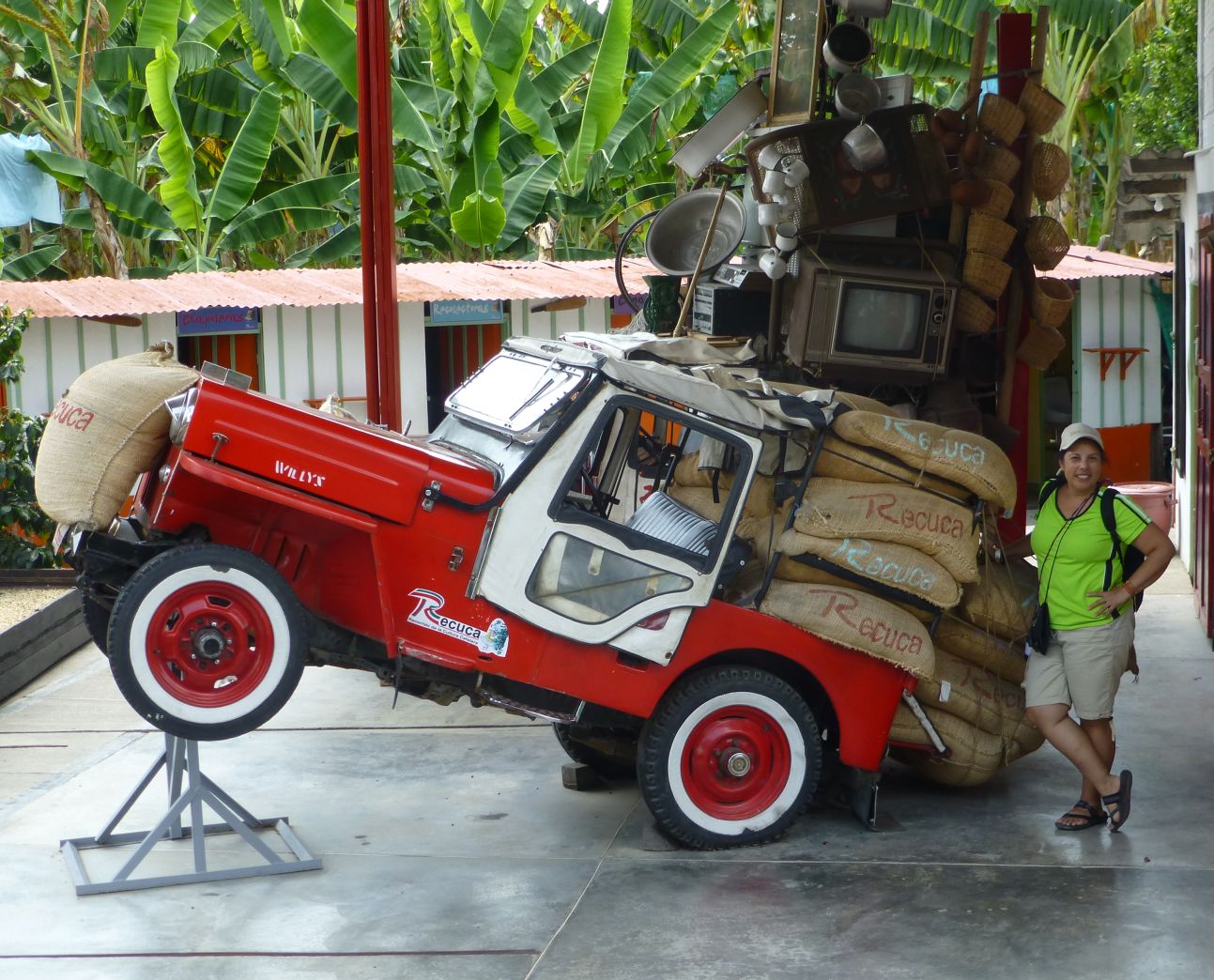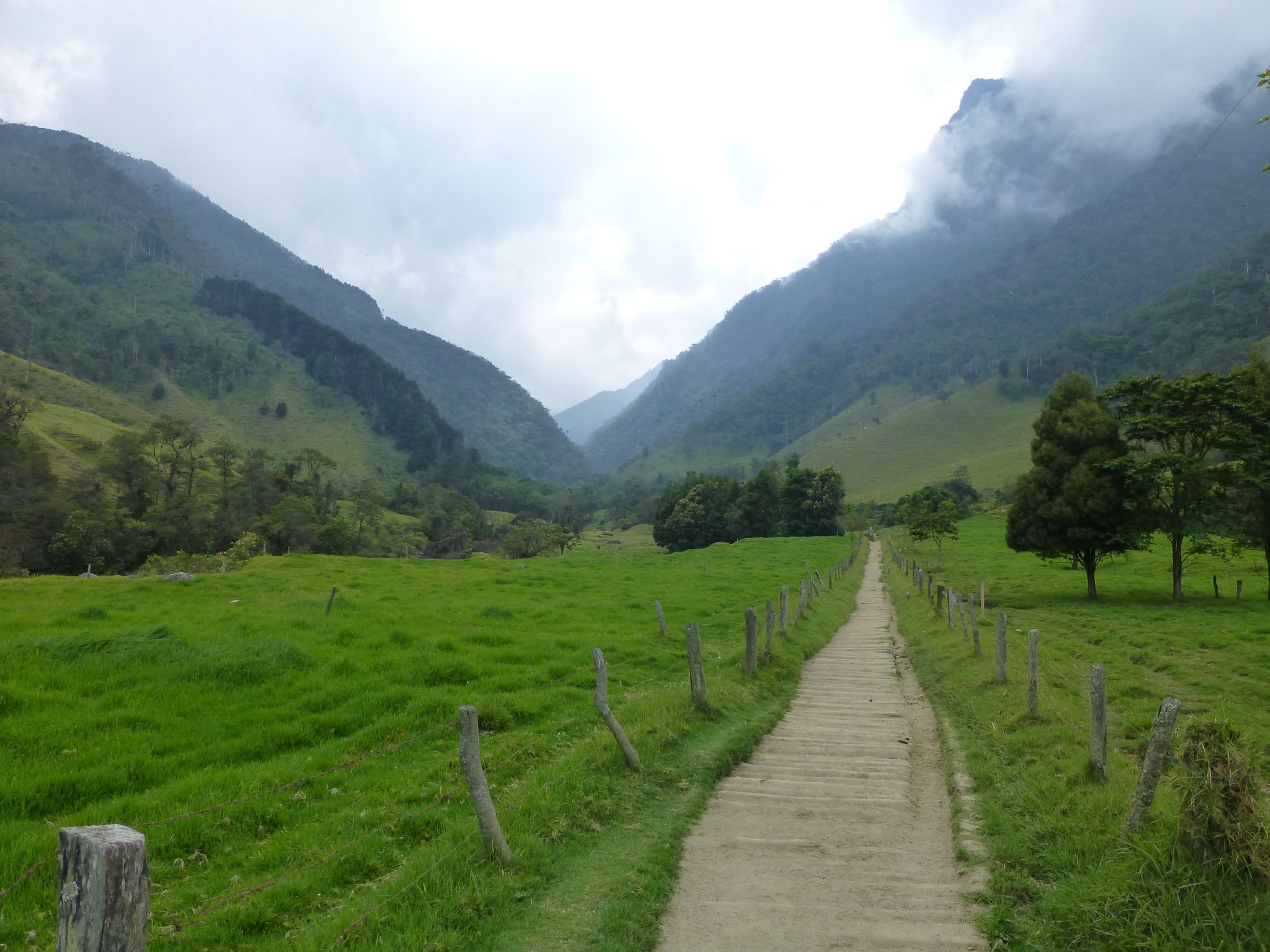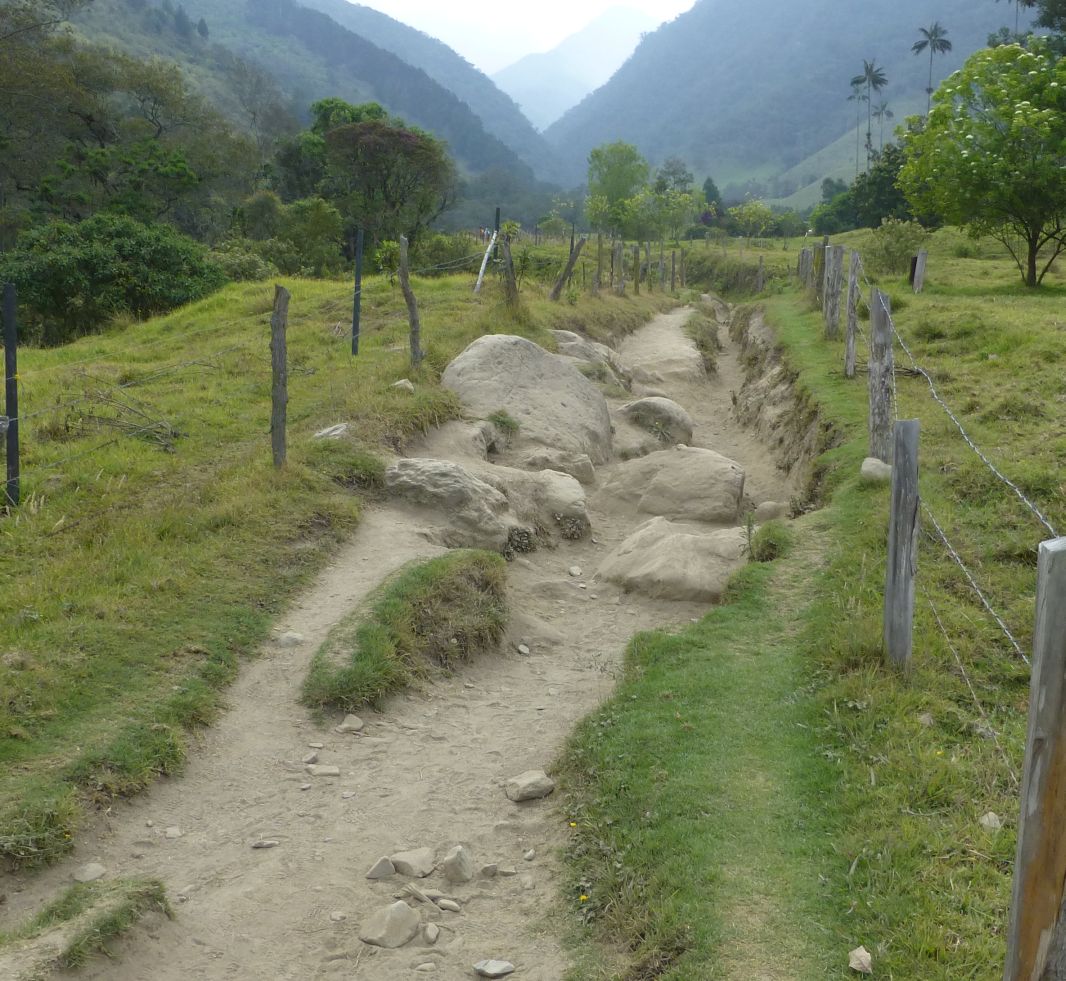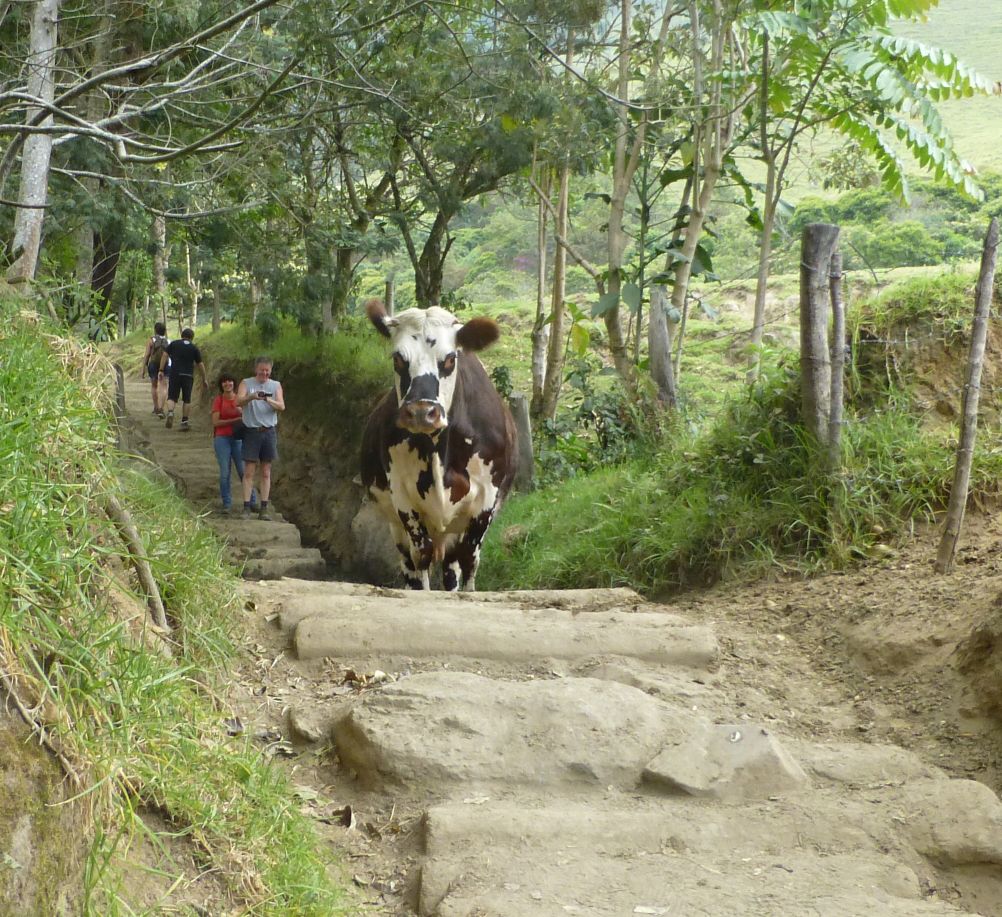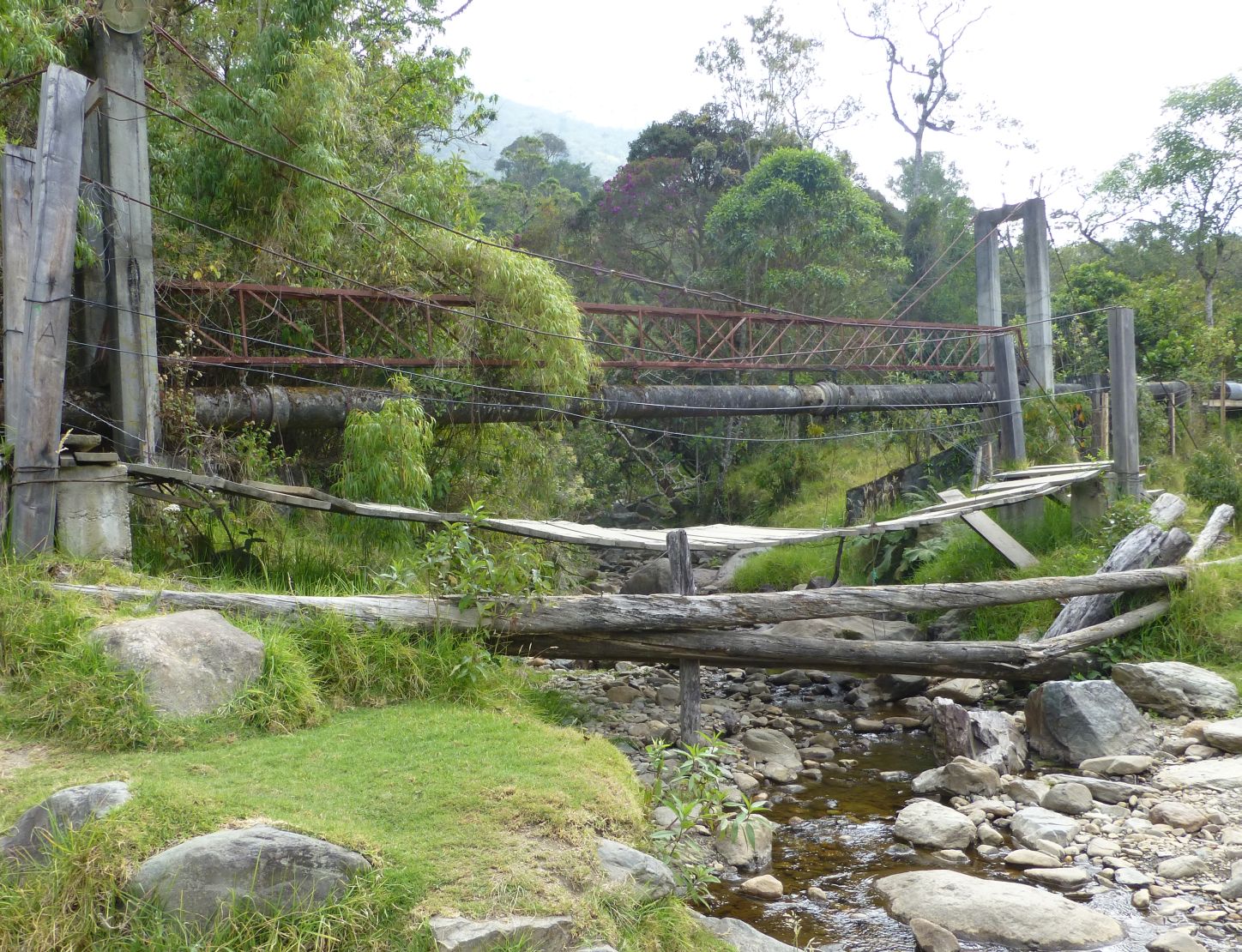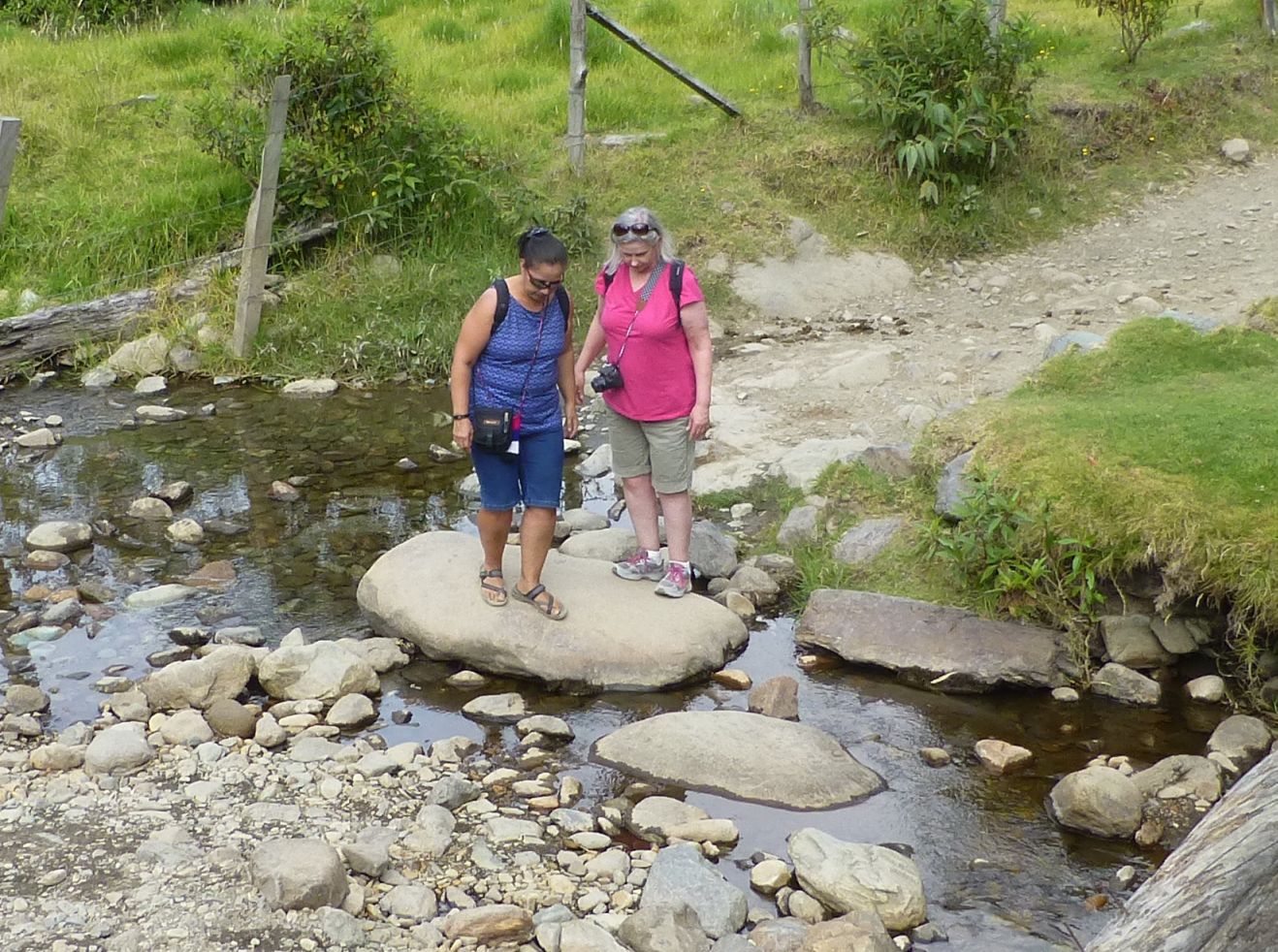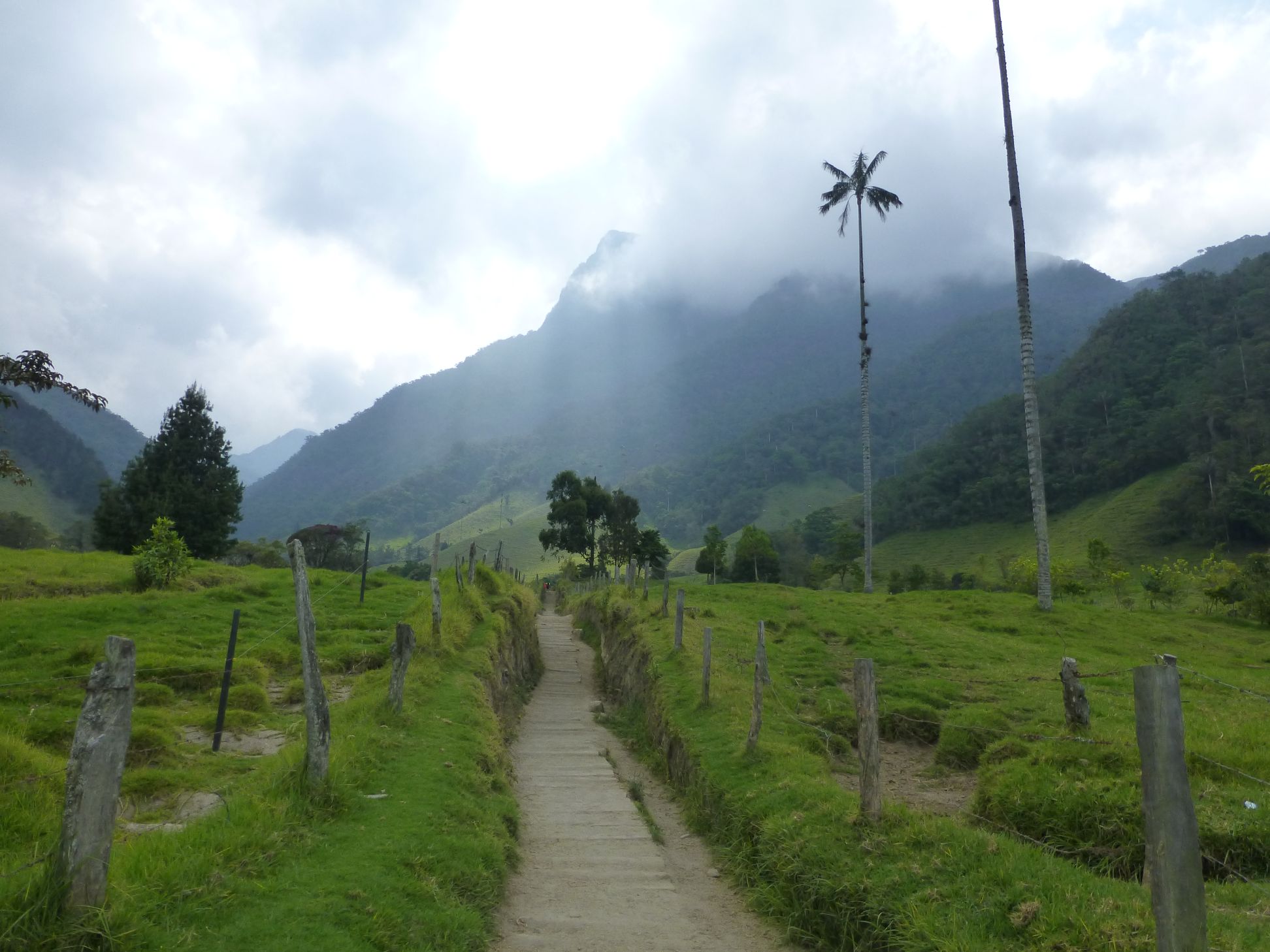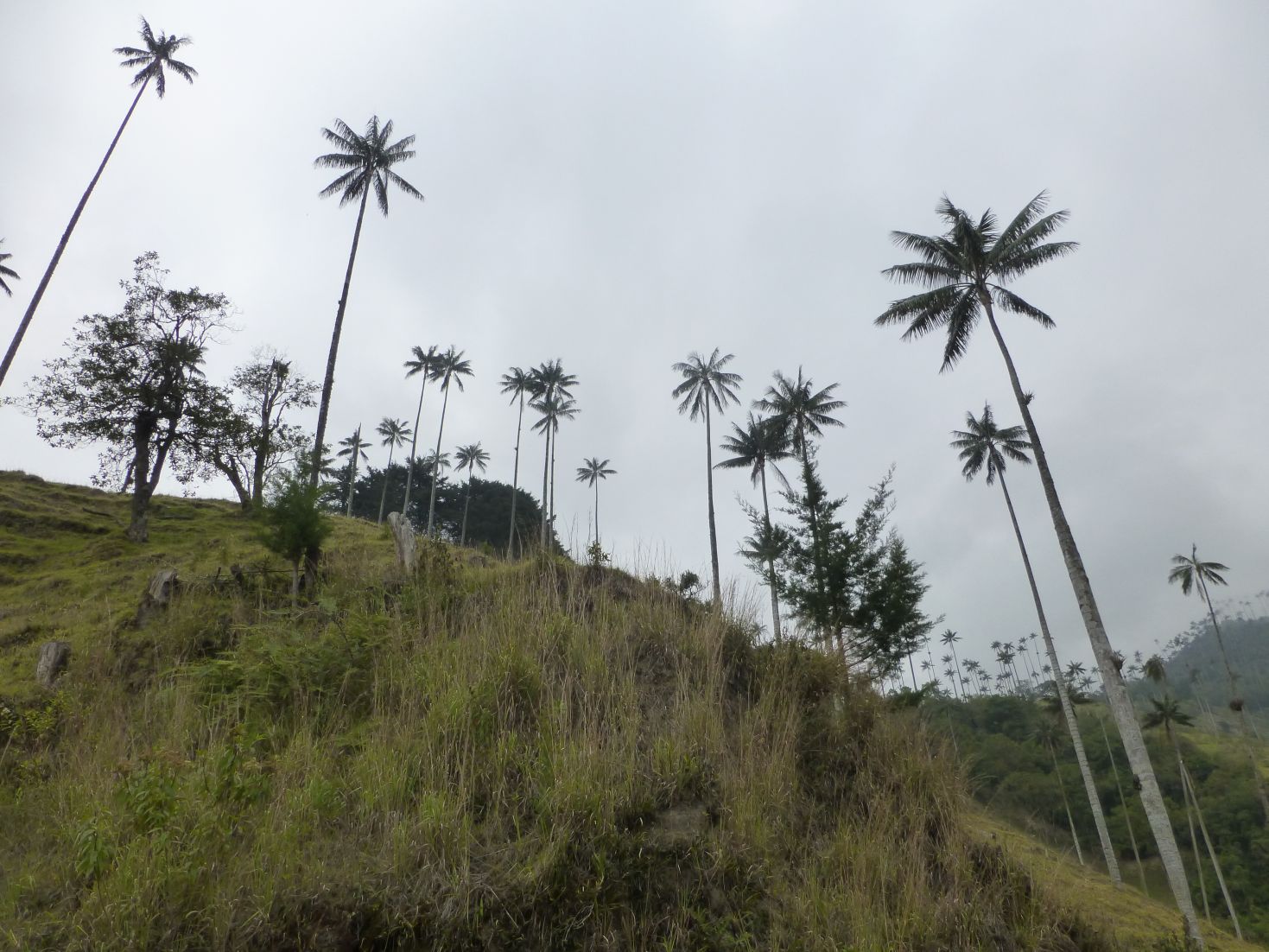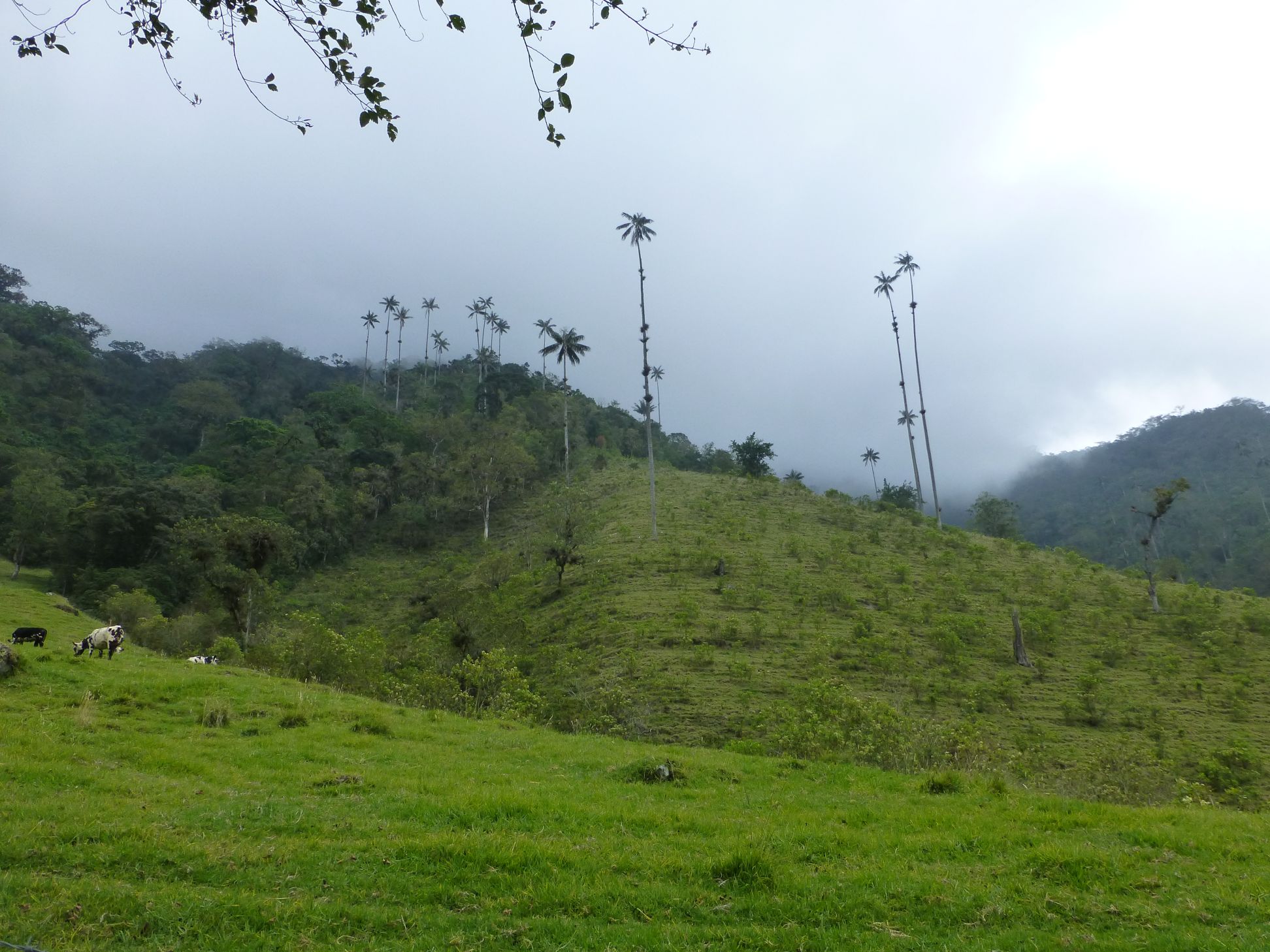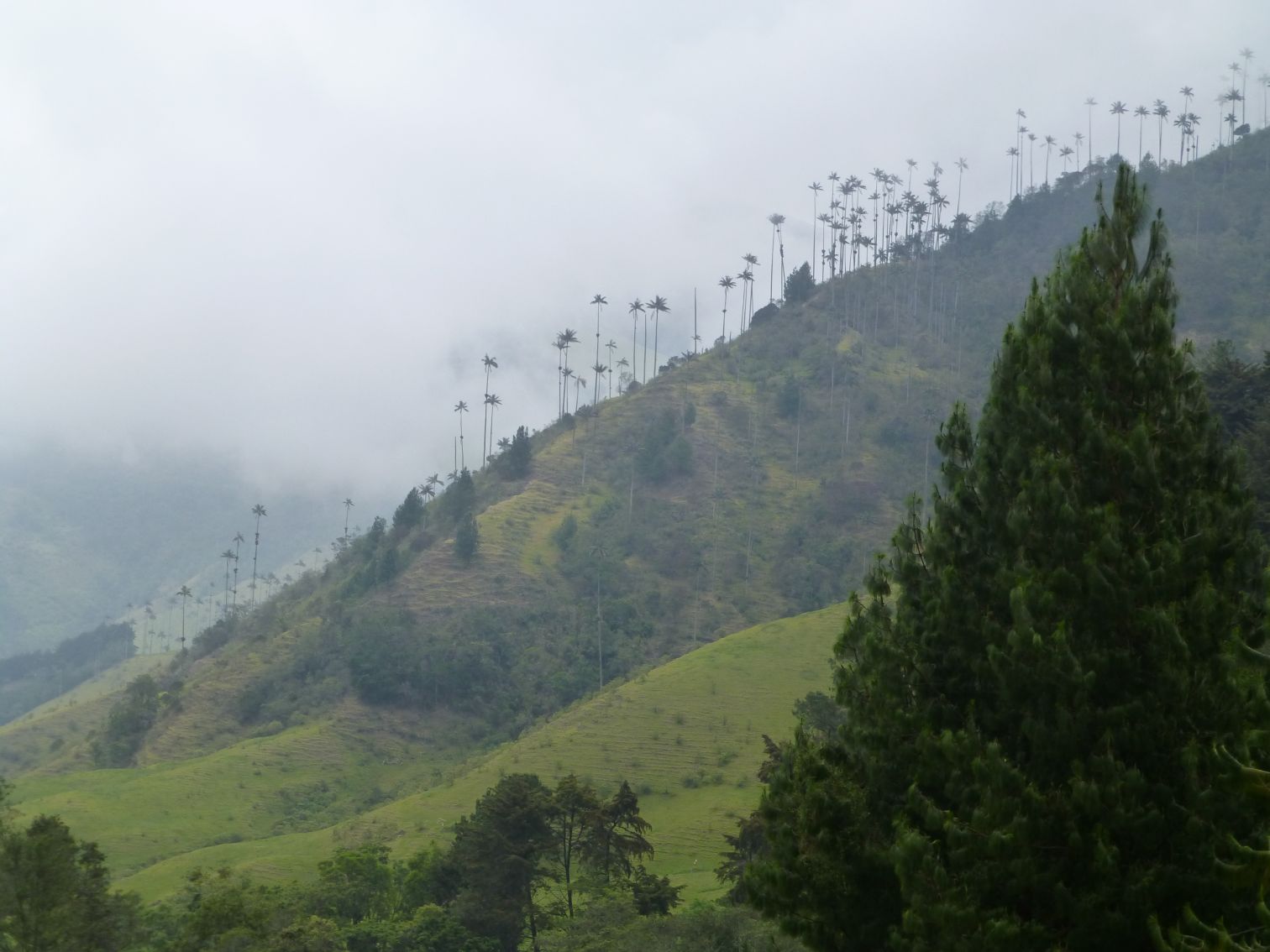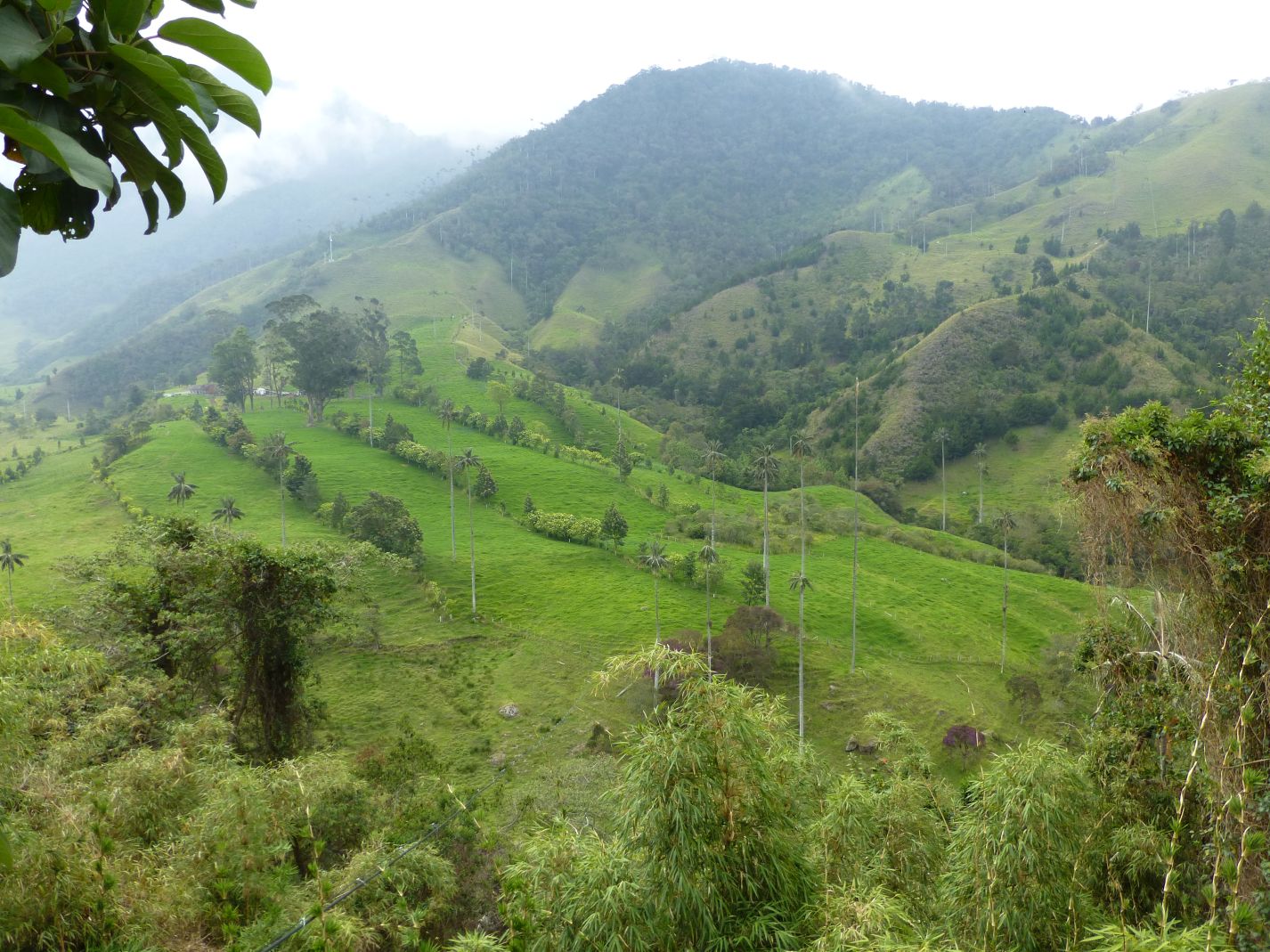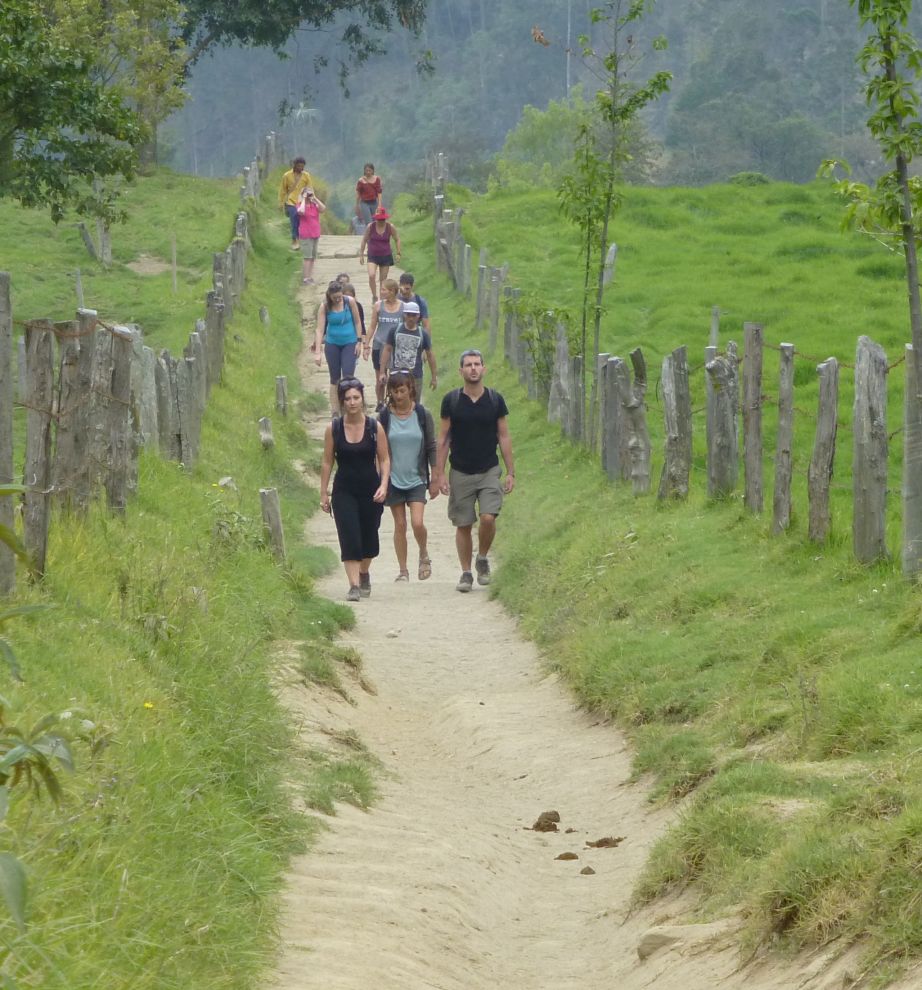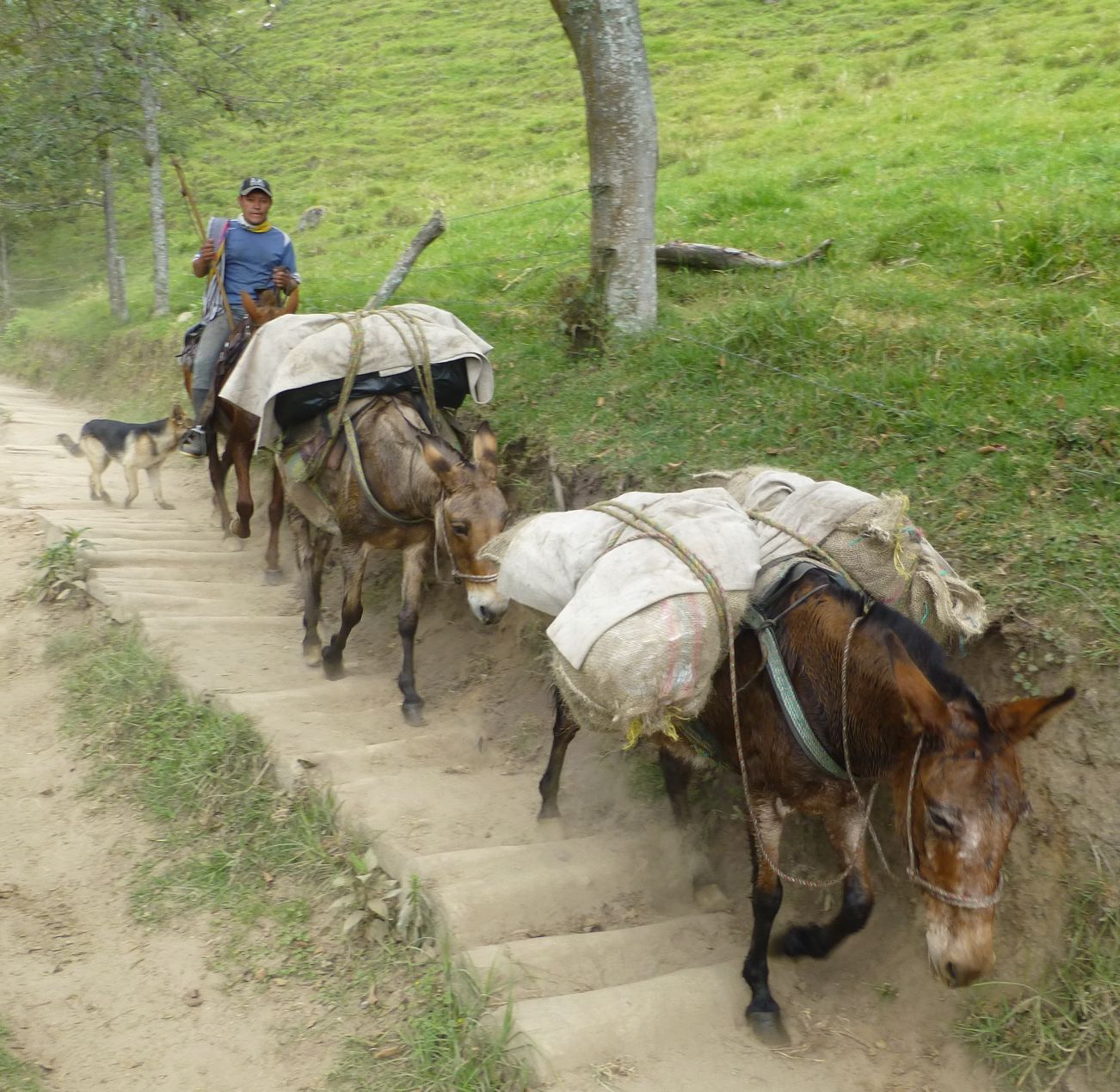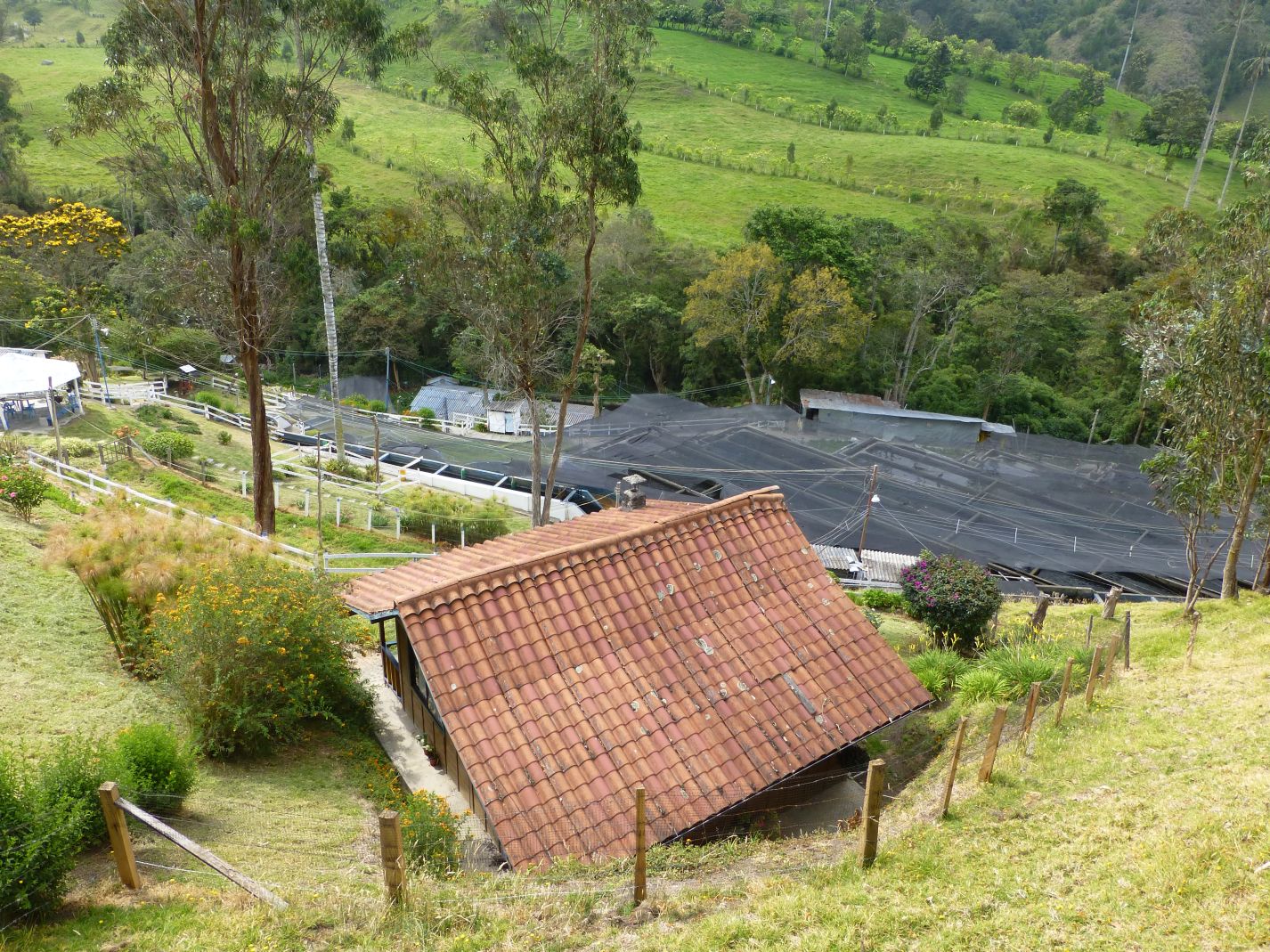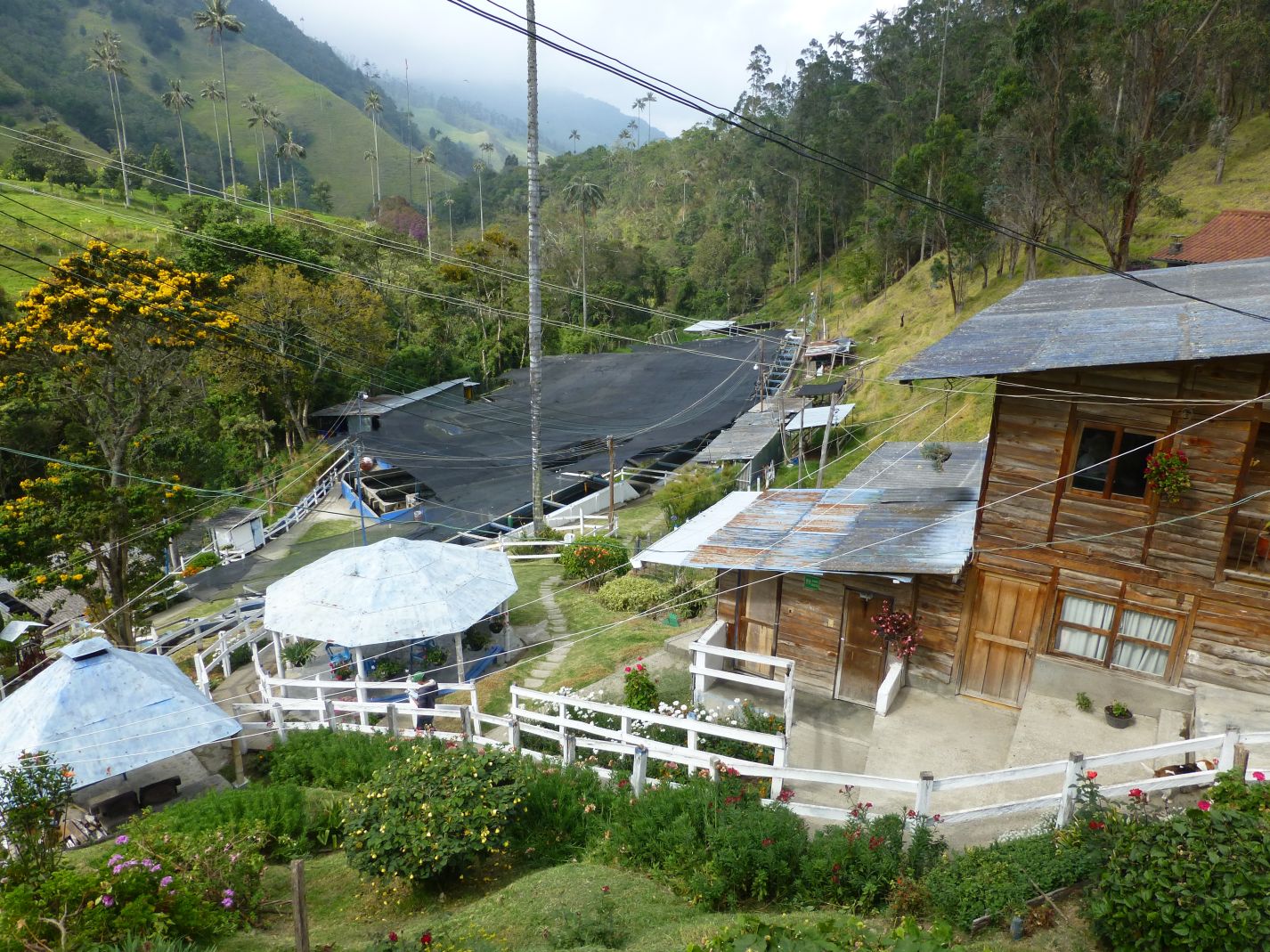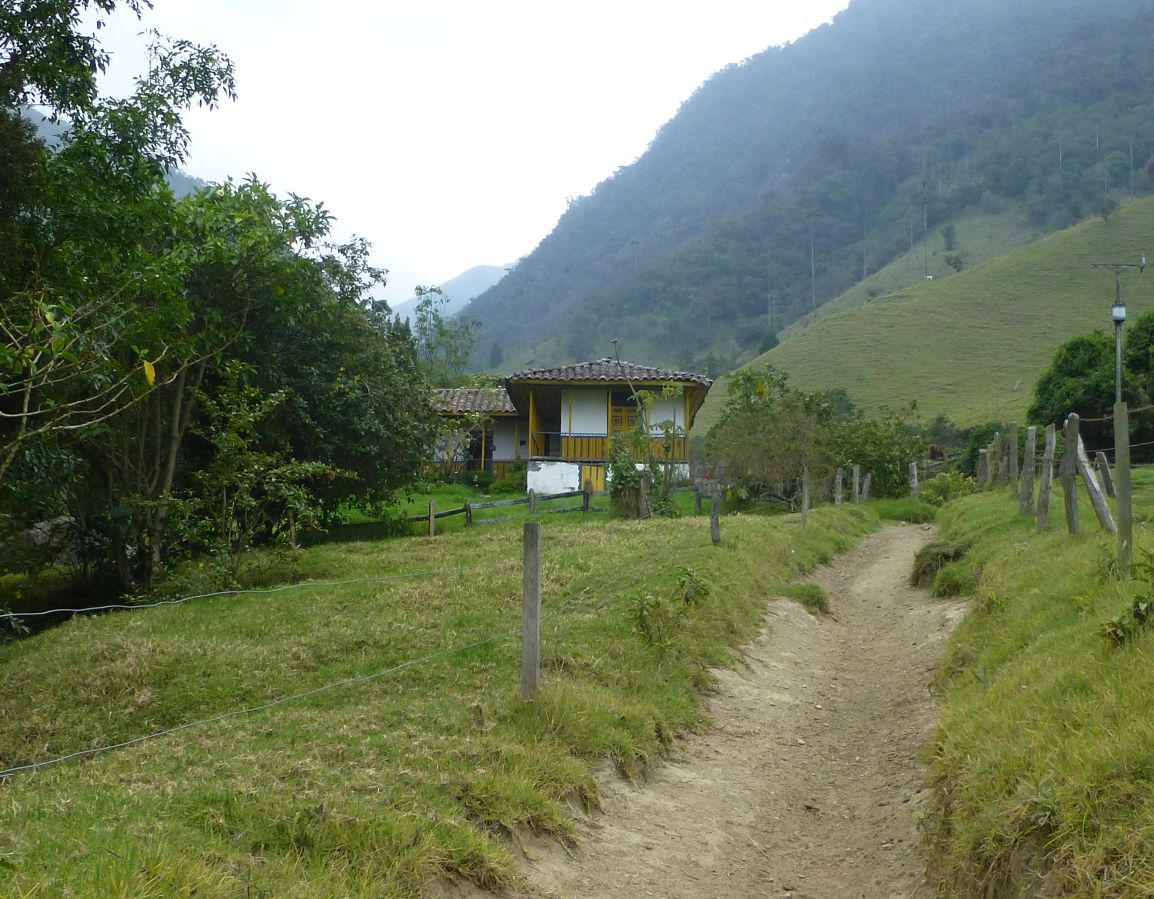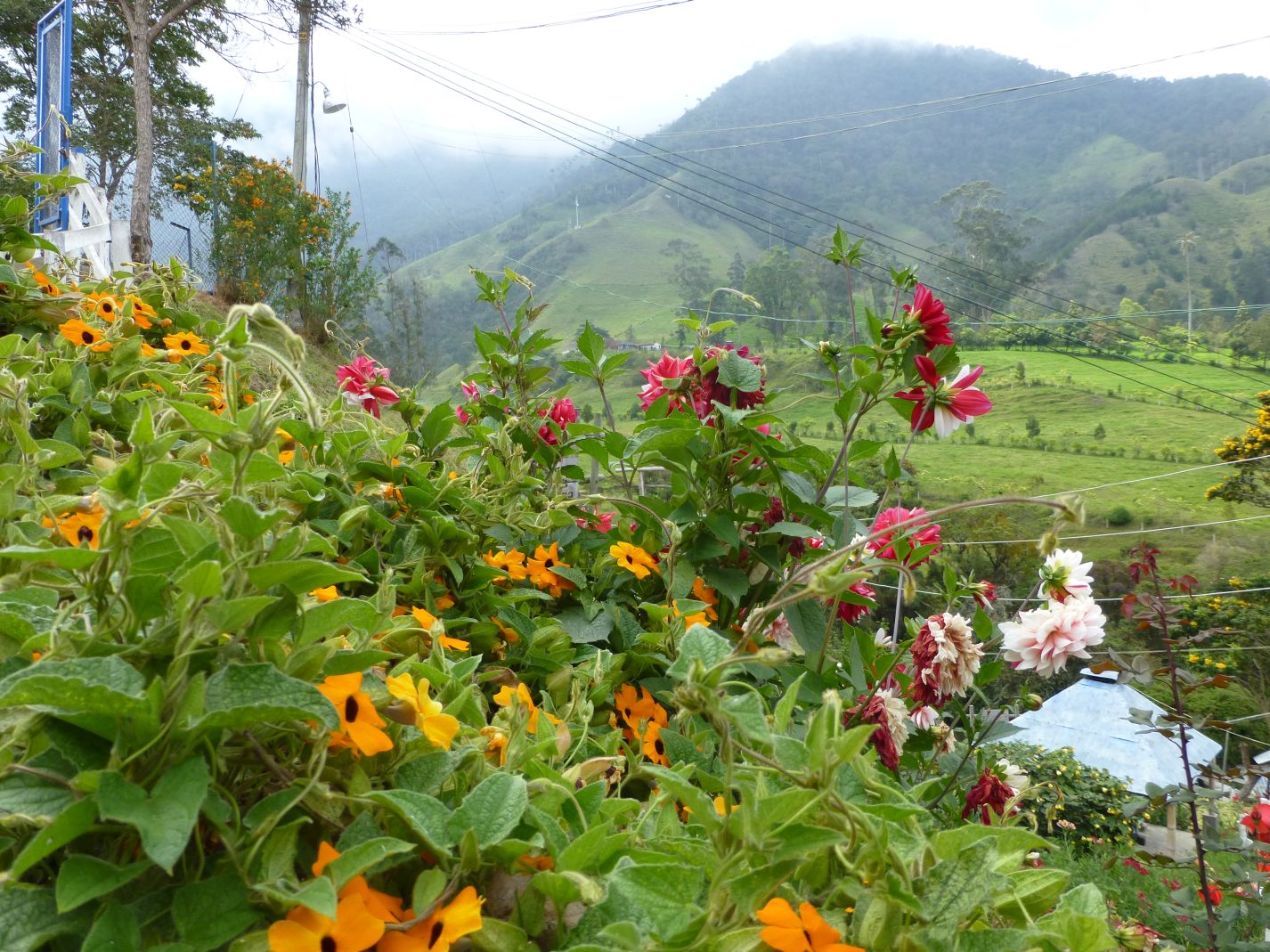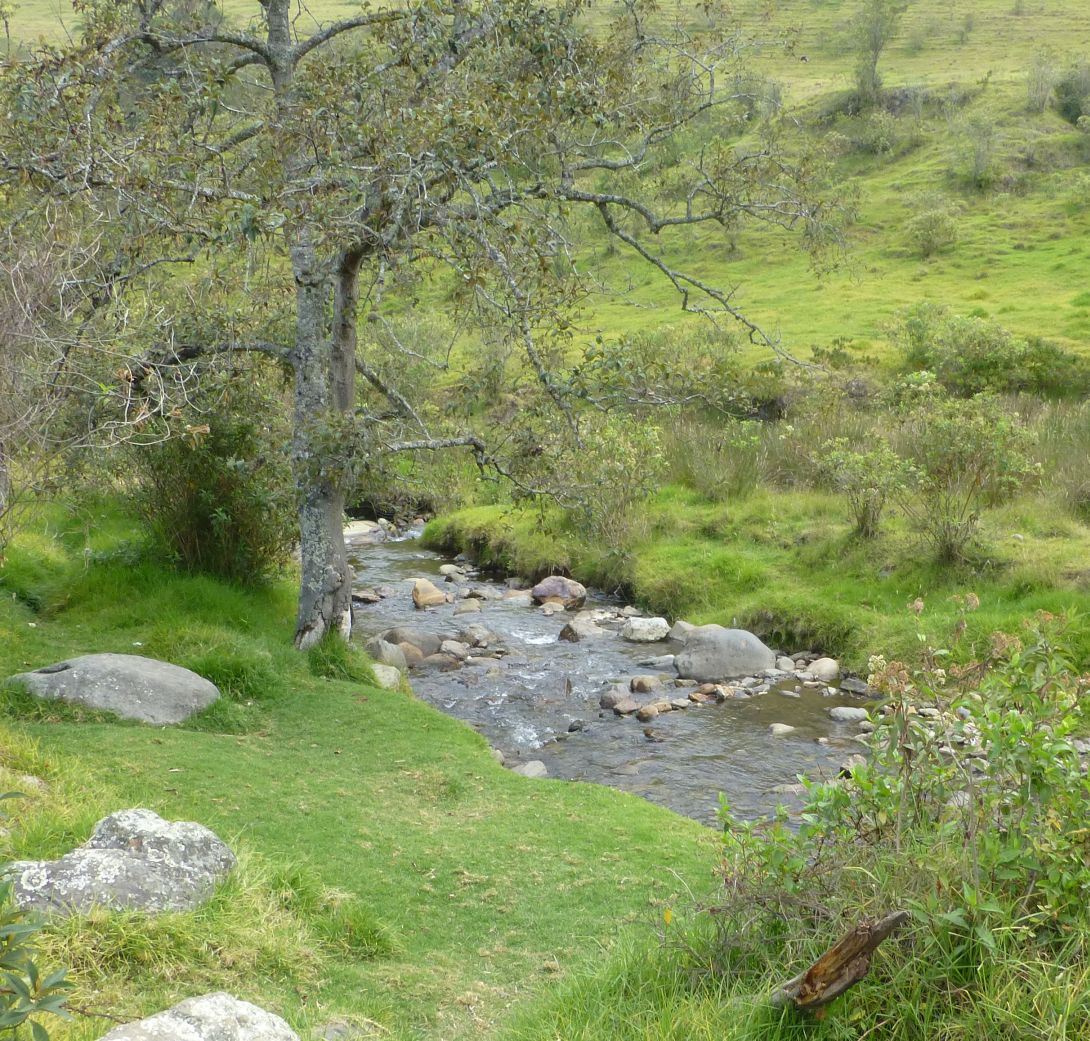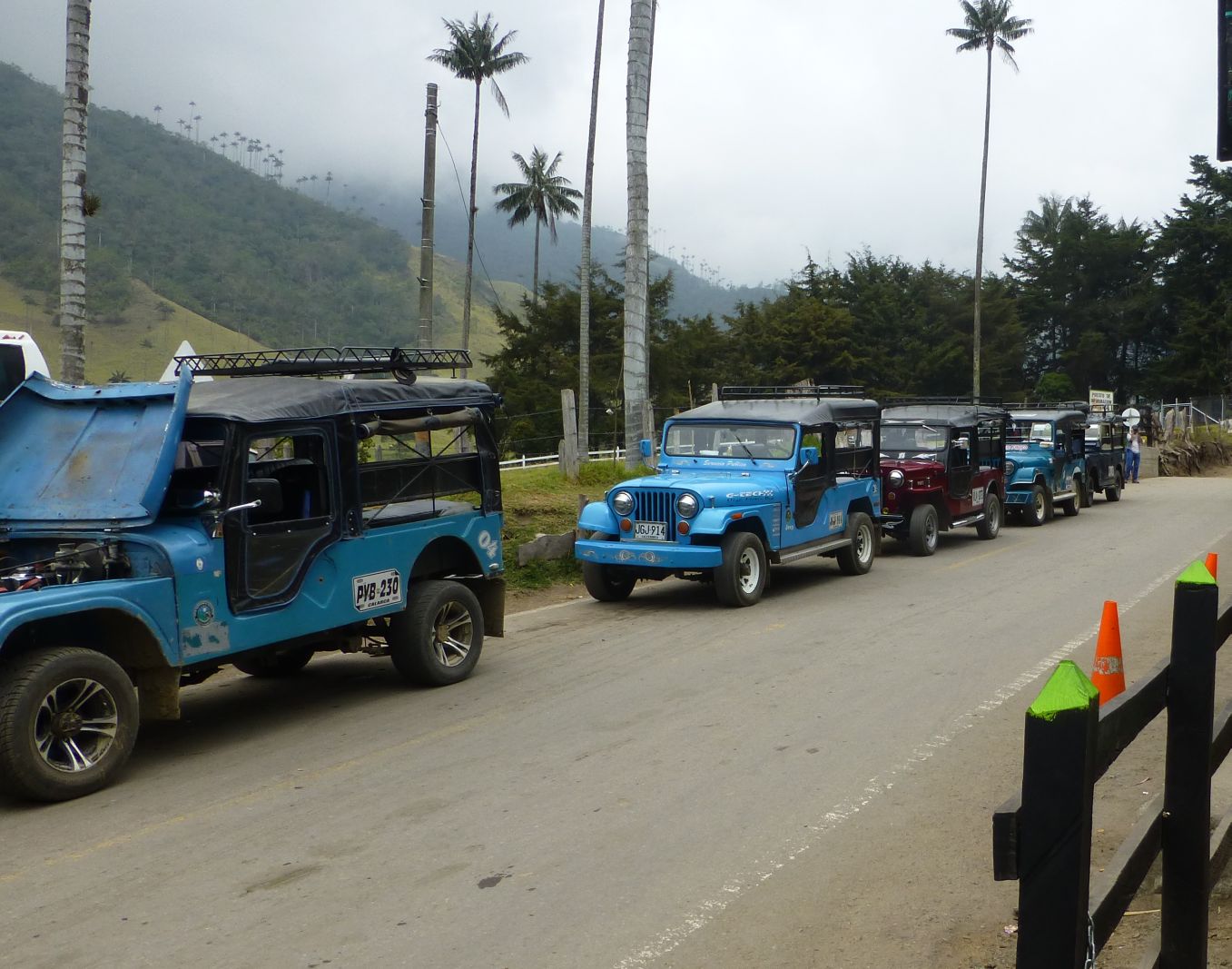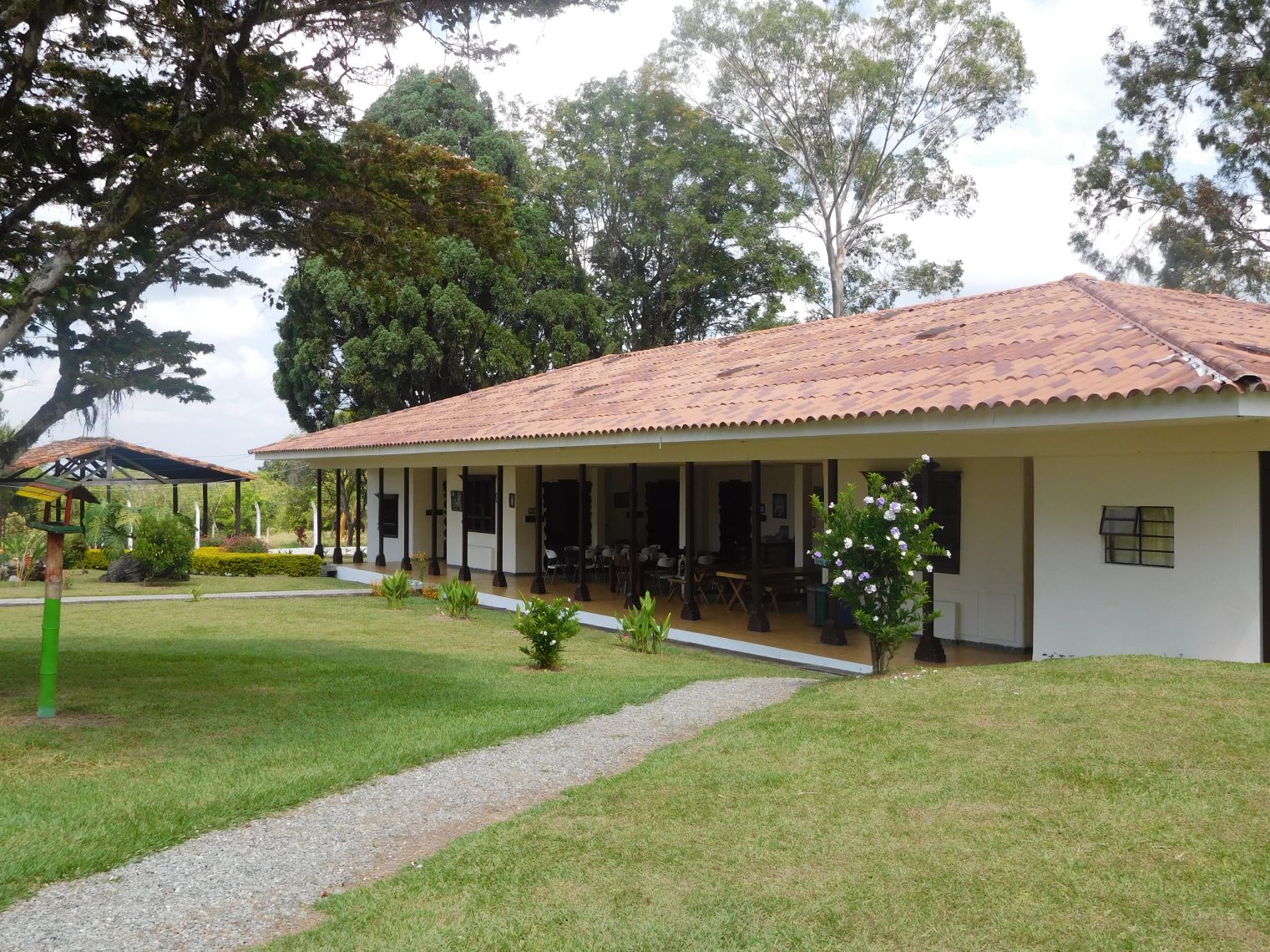
Two Months
in Colombia
Coffee Region
January 28 - February 5, 2016
Coffee is grown in much of Colombia but three small departments (Caldas, Risralda, and Quindio) in the central part of the country grow some of the best. The area is filled with quaint little coffee towns and beautiful mountain scenery. And, it's more-or-less equal distance from each of Colombia's three largest cities of Bogota, Medellin, and Cali. So it's become a prime destination for city people to take rural vacations, especially in Quindio, which also happens to be Colombia's smallest department. The countryside is dotted with dozens of finca hotels, or rural hotels that may also be coffee farms ... or, more likely, are pretending to be. And theme parks, but more on those below.
In a sense, this is also the newest part of Colombia. In the early part of the colonial period the Indians here were largely wiped out by disease and conquest. Because the area was very mountainous and didn't have any mineral wealth the Spanish ignored it. Then around the 1820s coffee became a big international crop and was introduced to the area around Medellin, further to the north. The paisas (as people from the Medellin area are called) realized that those mountains further south would be perfect coffee country. And thus began the great paisa migration to hack coffee fincas out of the mountains.
So there aren't any true colonial towns or cities in the region and the three departmental capitals of Manizales, Pereira, and Armenia were founded in 1849, 1863, and 1889, respectively. And Armenia brings up one thing I find interesting here. As in the United States in the 1800s, the new settlers needed names for their new towns. And, as often in the USA, they turned to the atlas. In this part of Colombia there are cities and towns named after Old World countries, such as Armenia, Montenegro, Circasia, and Filandia. And some were named after US locations, such as Pensilvania, Filadelfia, and Marulanda. Since I'm a native of other Pennsylvania, the town of Pensilvania is on my list of future destinations in Colombia.
Armenia
January 28 to February 1, 2016
For the first four nights we stayed in one of those finca hotels along the highway about a mile outside the city of Armenia.
Click on photos to see full size
Parque Nacional del Cafe
January 30, 2016
The most famous park in the Eje Cafetero is the Parque Nacional del Cafe just outside the town of Montenegro. The center of the park is a mock-up of a traditional town square complete with a tiny church. There are a couple dozen amusement park rides: slalom, roller coaster, bumper cars, train, etc. and, of course, lots of food stands. There was also a spectucular folk dance show (no pictures allowed). The park itself is in gorgeous natural surroundings. The entrance is at the top of the ridge while the main part of the park is in the valley down below. There are two options in and out - either walk or take the cable car.
Click on photos to see full size
PANACA
January 31, 2016
PANACA is another theme park just up the road from Armenia outside the town of Quimbaya. The theme here is to give city people a taste of life in the country and, especially, let them get up close to farm animals. There were cows, pigs, chickens, horses, ostriches (yes), sheep, goats, etc., etc. It's probably more appropriate for families with children, not 50+ adults. And, I'm kind of familiar with what farm animals look like ... I did live in Iowa over over two decades, you know. I more enjoyed the natural beauty of the place and the opportunities for some additional activities.
Click on photos to see full size
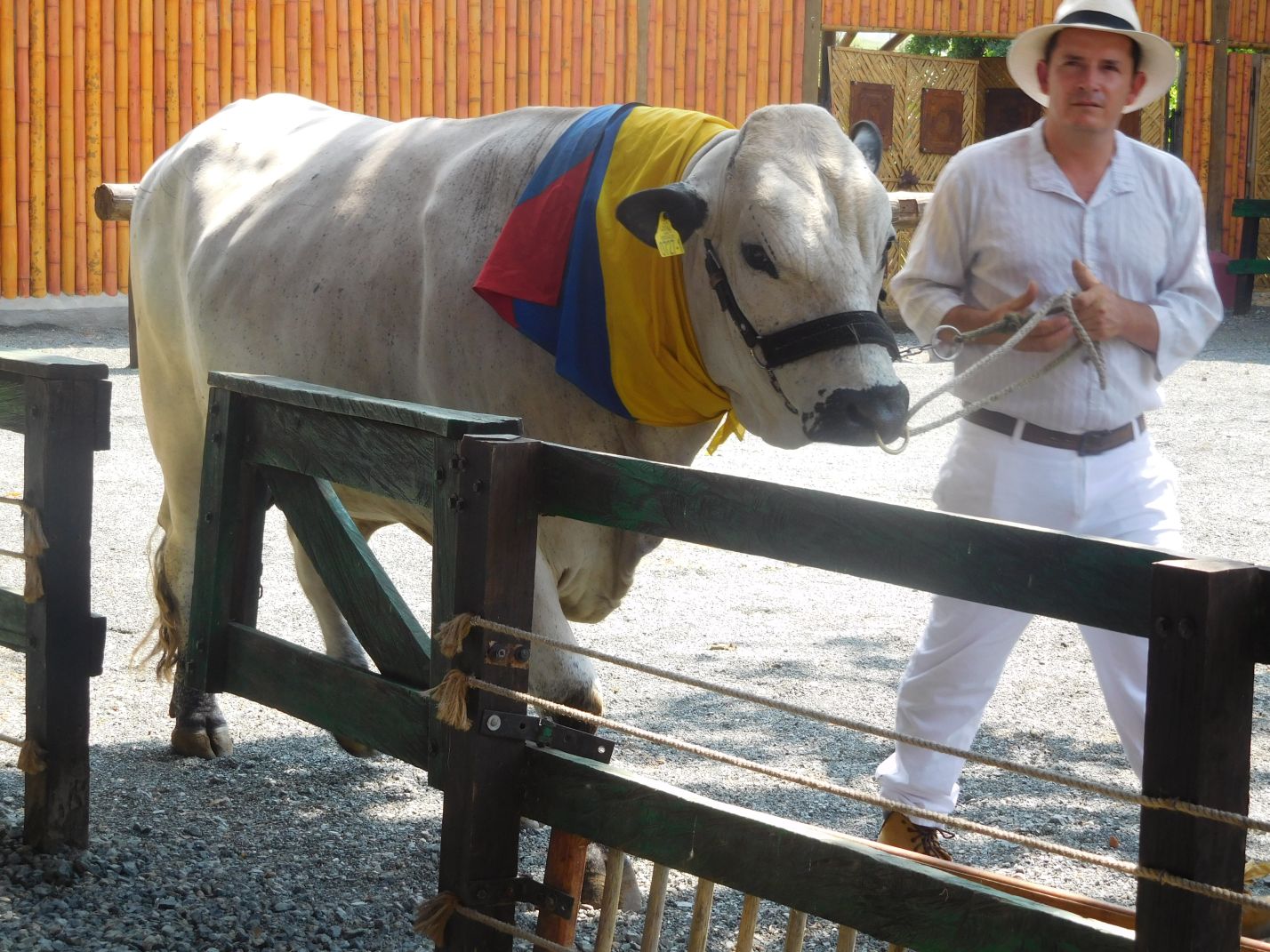
One of many breeds at the cattle show.
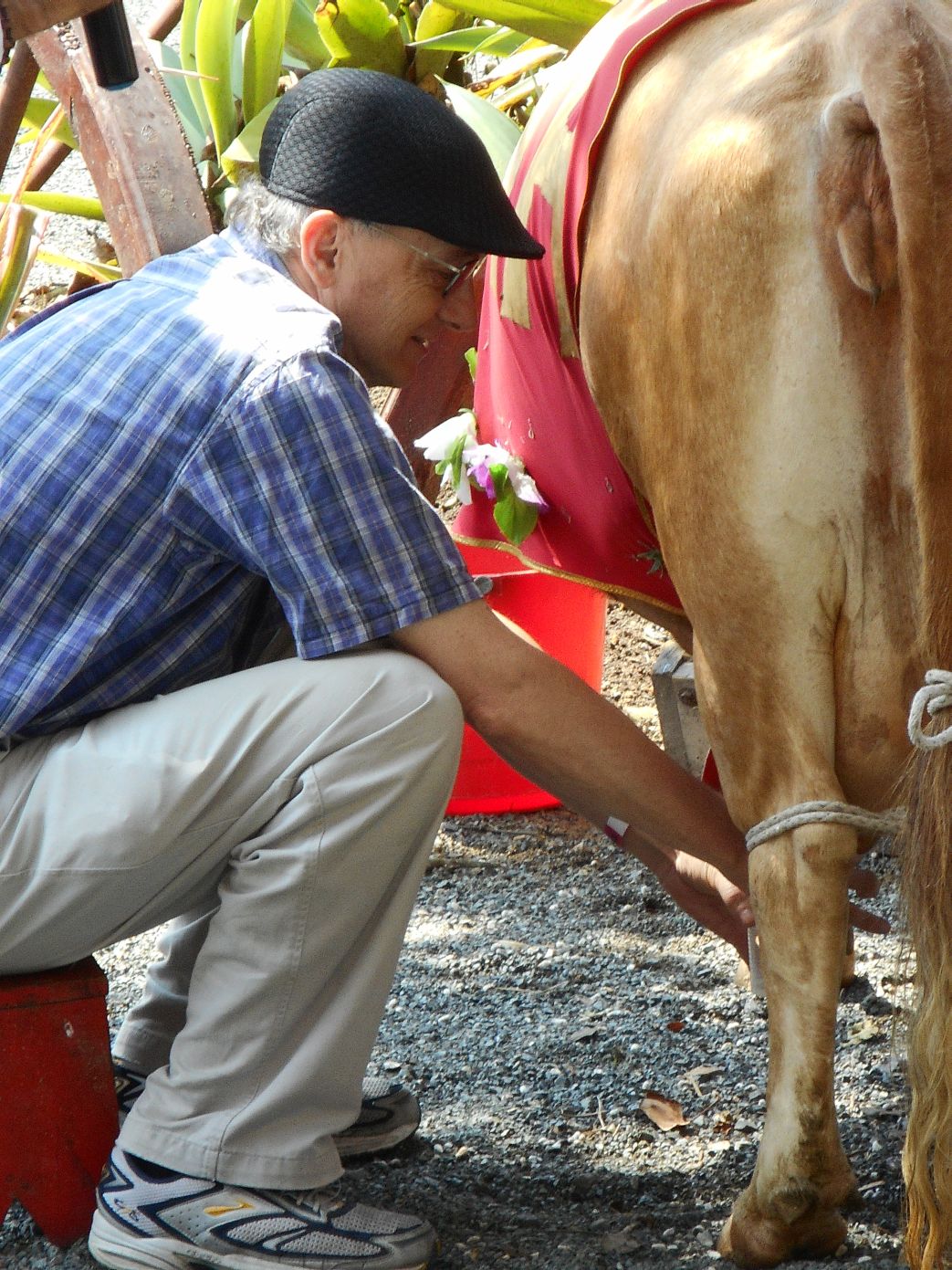
I was "volunteered" for the milking contest.
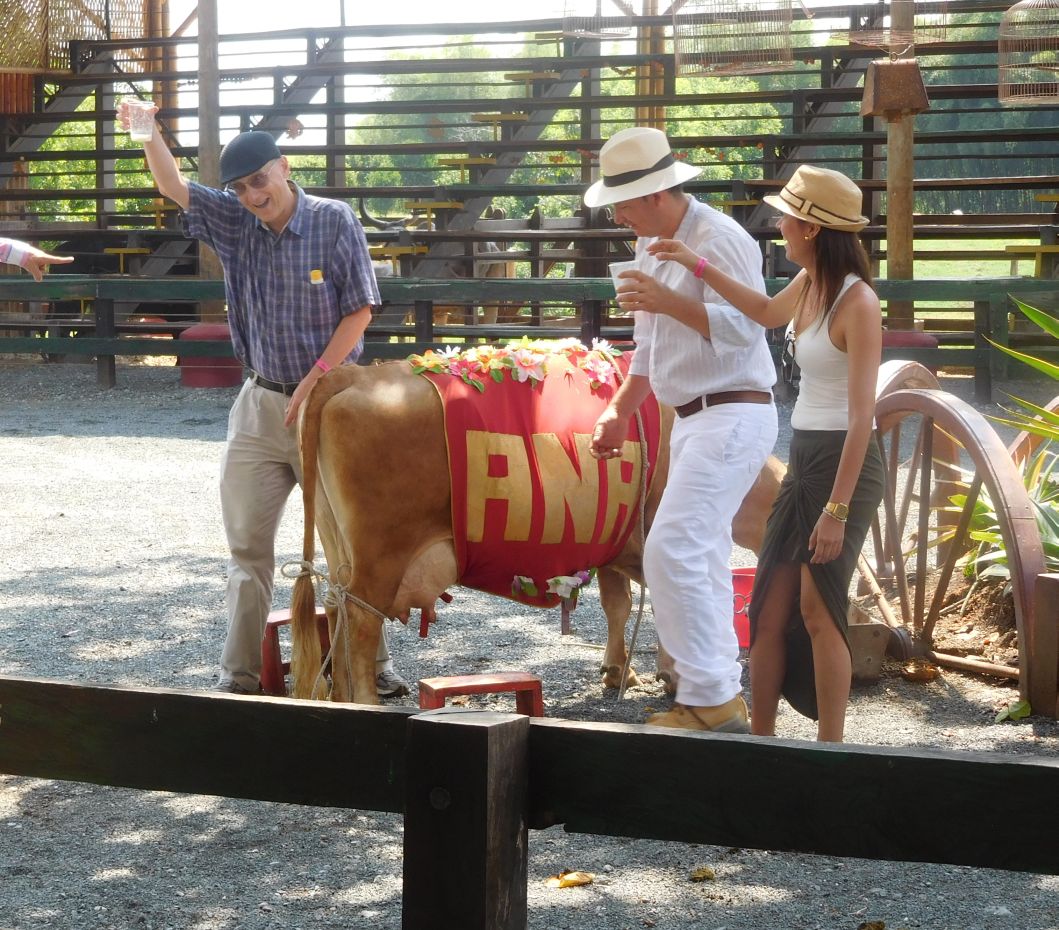
And least I won! (Just don't measure how much is in that cup.)
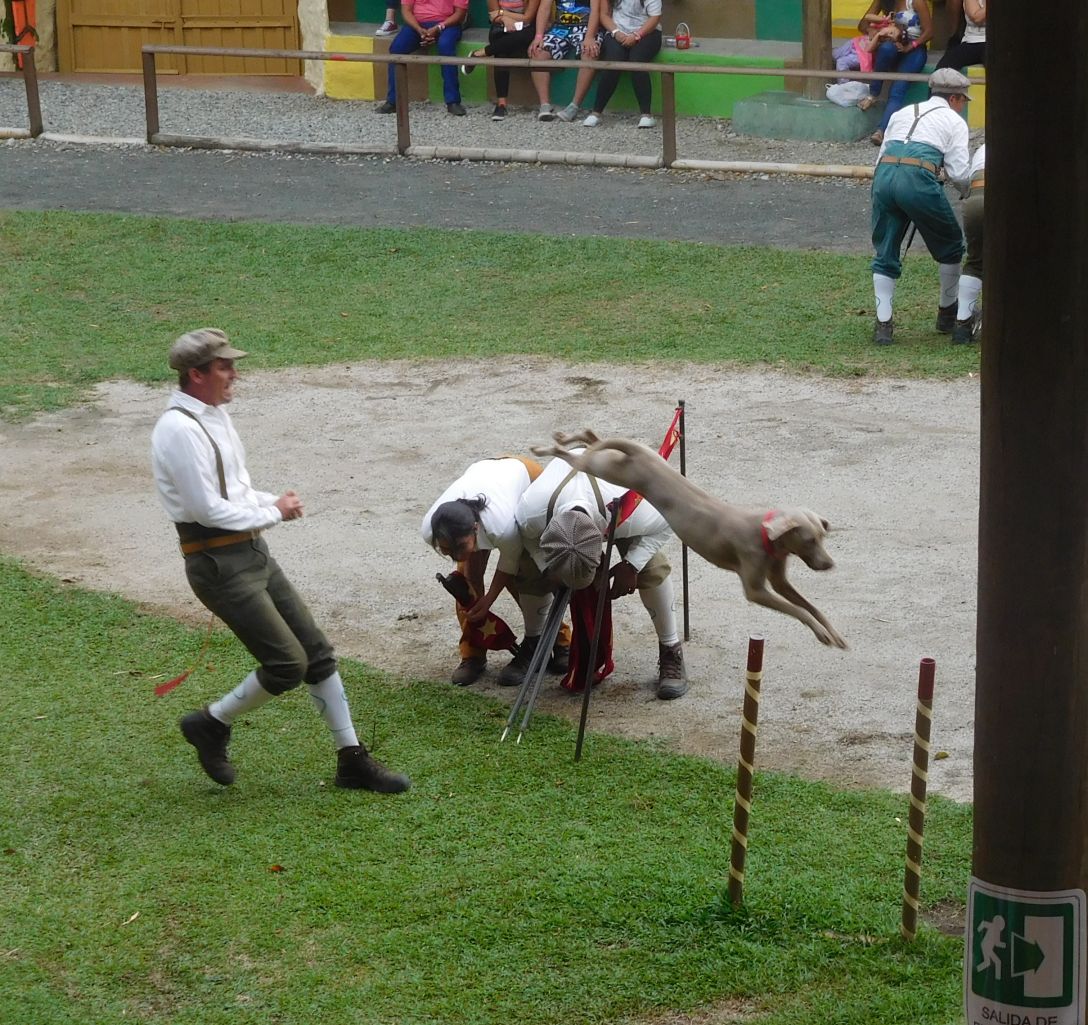
One of many tricks in the dog show.
Salento
February 1 to 5, 2016
Salento is a coffee town about 20 kilometers north of Armenia. Or maybe I should say it used to be a coffee town. Today the primary industry is tourism, both domestic and international. The Colombian tourists were mostly middle class people from the cities while the internatonals (from all over) were mostly, but not exclusively, young backpackers. Although there are a lot of tourists, it really is one of the gems of Colombia. The town is well preserved and it is well equipped to handle visitors. You should have seen the Teriyaki burger I had with the huge slice of grilled fresh pineapple. We stayed here for our final four nights in the Coffee Region.
Click on photos to see full size
Gold Museum in Armenia
February 3, 2016
On Wednesday we headed back to the departmental capital of Armenia to visit the local Gold Museum. Colombia has more pre-Hispanic gold artifacts than any country on Earth. The vast majority of it is found in the main Gold Musuem in Bogota. But there are several smaller ones around the country such as this one and the one we had visited earlier in Cali. The building here was a mini-cultural center and included a very nice children's library and some beautiful gardens.
Click on photos to see full size
RECUCA
February 3, 2016
From the Gold Museum we continued outside of town to RECUCA, yet another theme park. It was, without a doubt, my favorite. The theme is the life of an old-time coffee worker. We started with a typical coffee-picker's lunch. The tour explained all about the process of growing, picking, and drying the coffee. We even spent a few minutes in a small plot picking some, although there weren't many ripe berries at the time. Along the way there were some fun activities. Everybody got to dress up in traditional clothing of the coffee region and the guide taught us a simple regional dance.
Click on photos to see full size
VALLE DE COCORA
February 4, 2016
On our last day in Salento we took a Jeep Willy ride up the mountain to Cocora Valley in Parque Nacional Natural de los Nevados. A unique species called the wax palm is only found in this area. It's a beautiful natural area with lots of hiking opportunities. We walked about an hour up the mountain and then another hour back. The trail ranged from smooth and straight to, well anything but smooth. The path was lined with barbed wire on both sides. That was as much to keep the tourists on the trail as to keep local farm animals off it. At one point a cow had somehow gotten on the path and the the only way forward was to walk around her. And the foot bridge at one little stream was missing a few boards. So it was an adventure.
Click on photos to see full size
Contact
I can be reached at DonMooreDXer (symbol) Yahoo (period) com.
